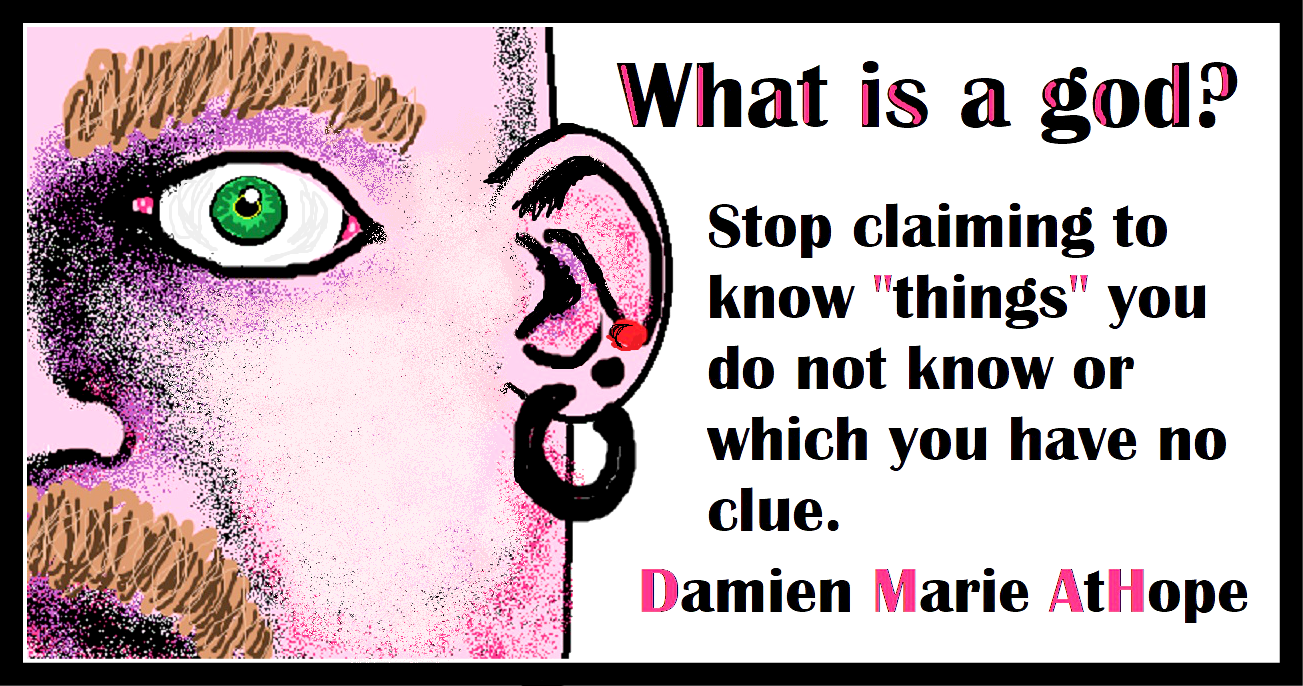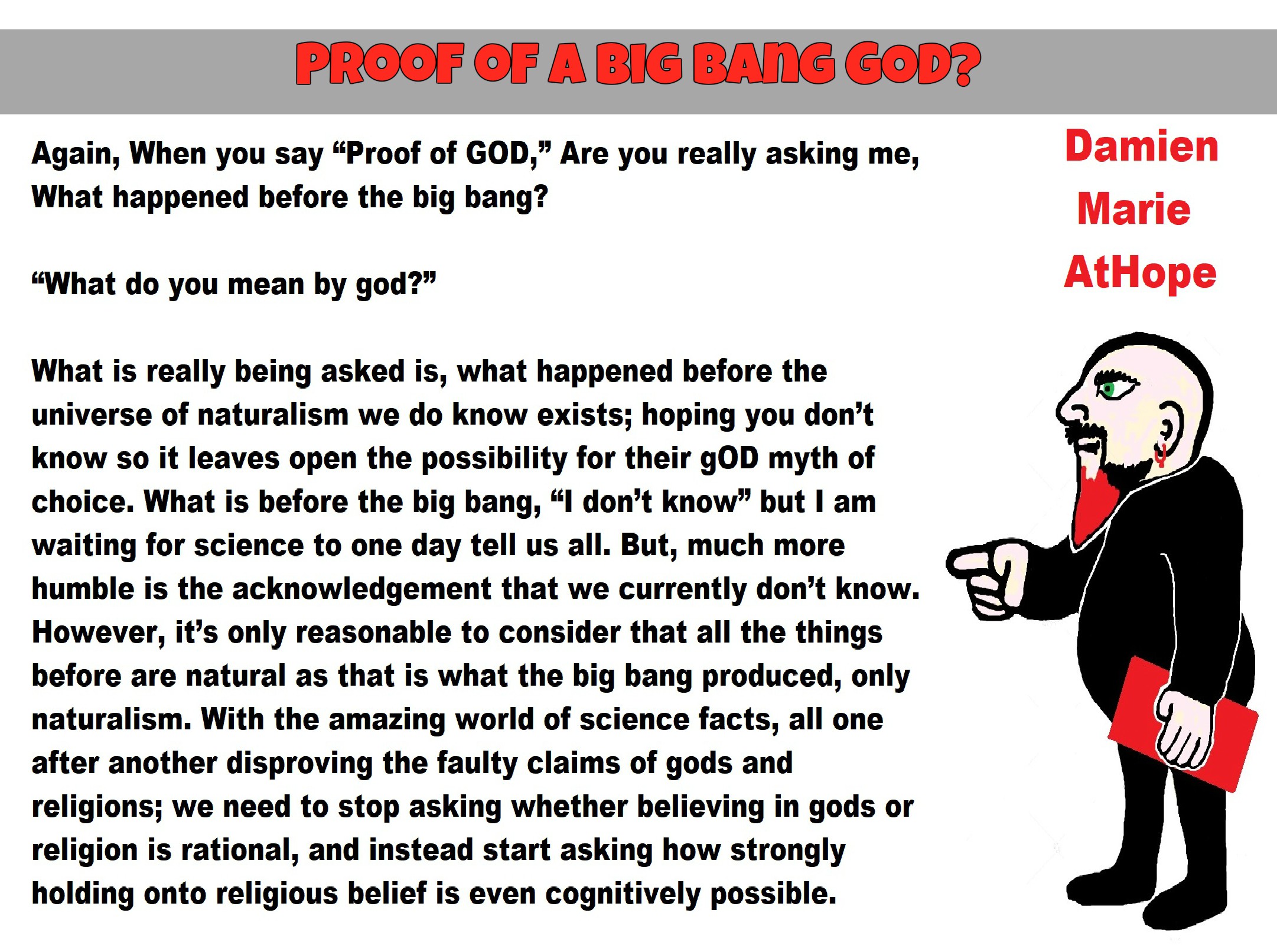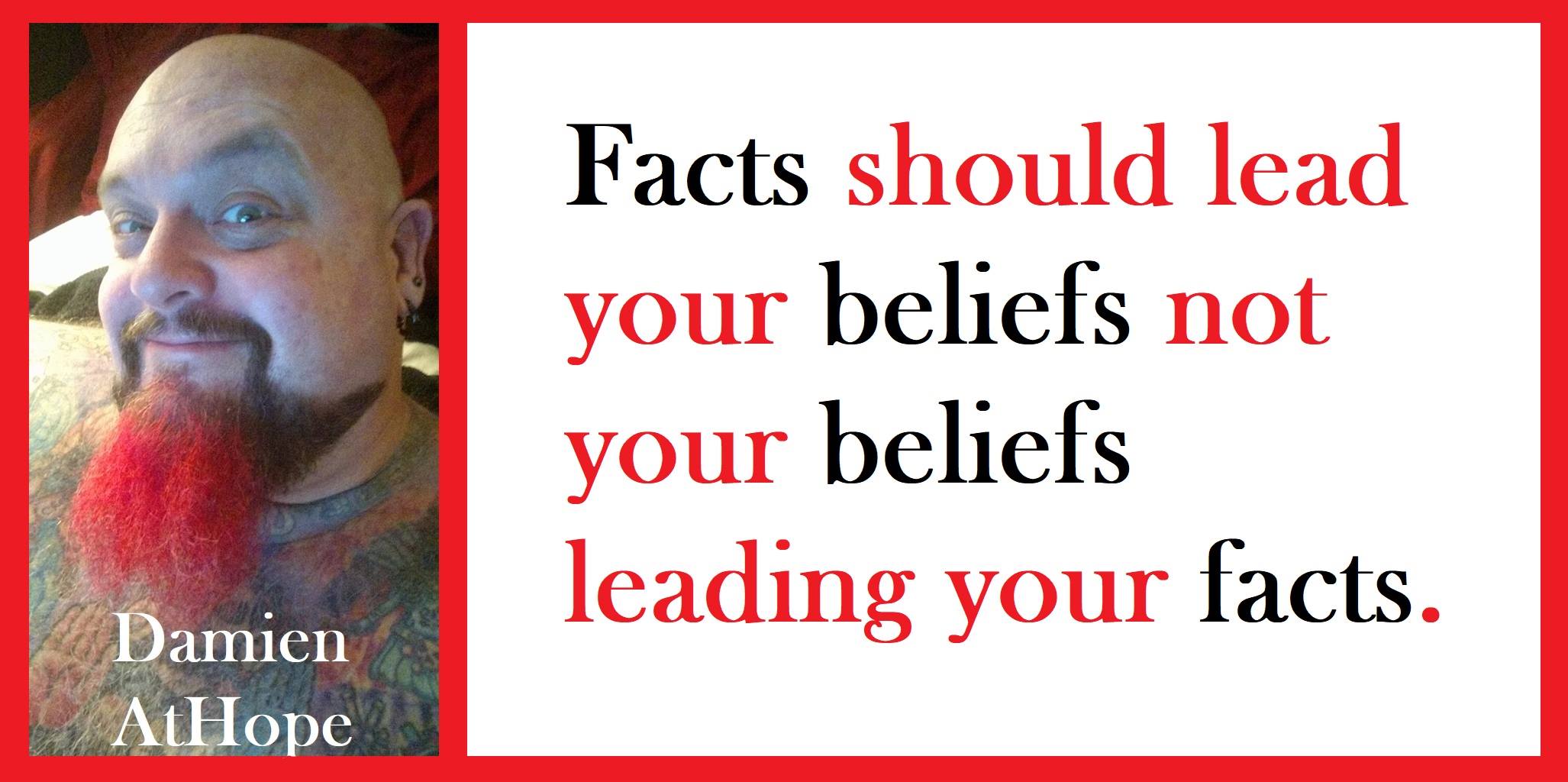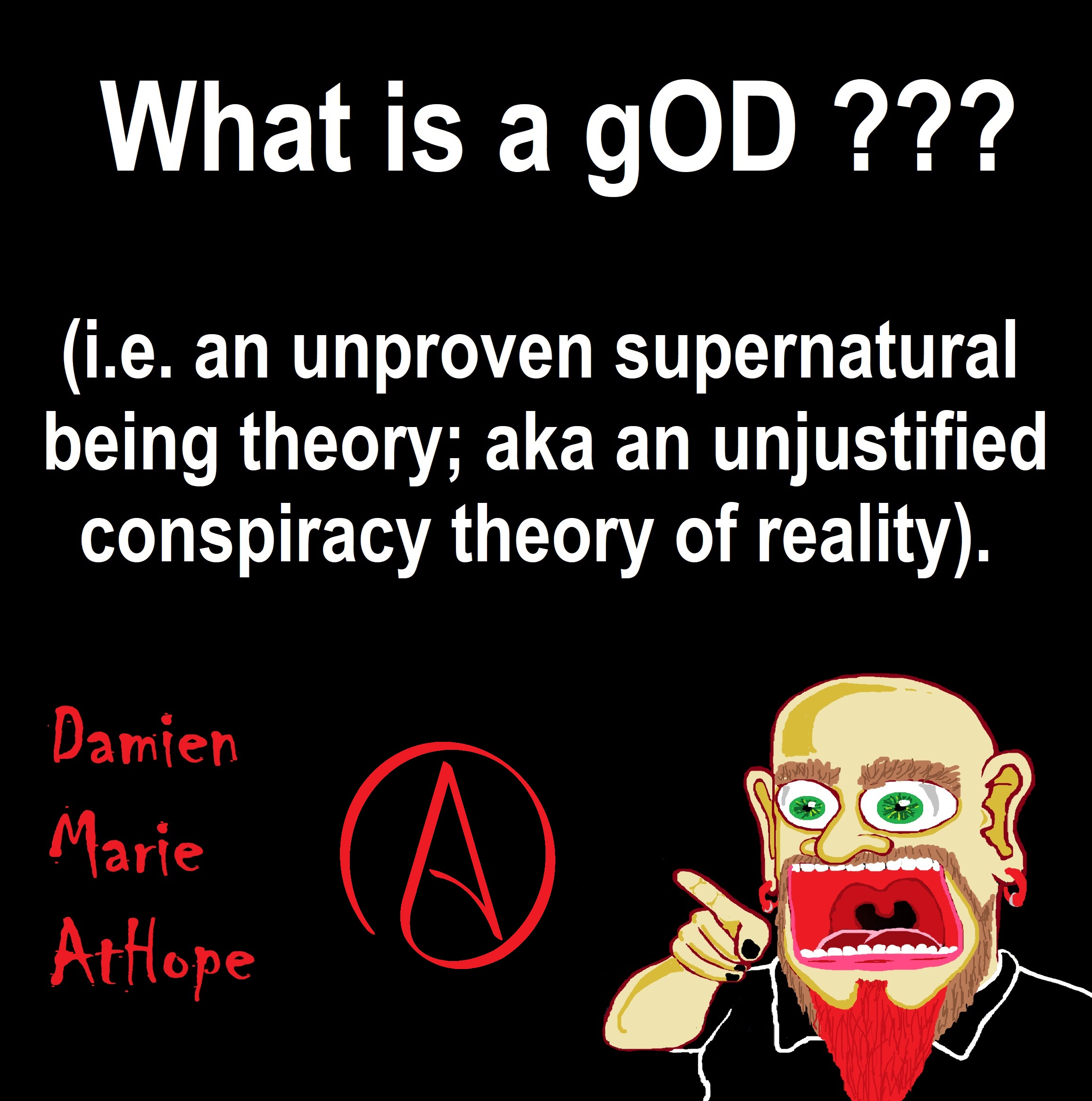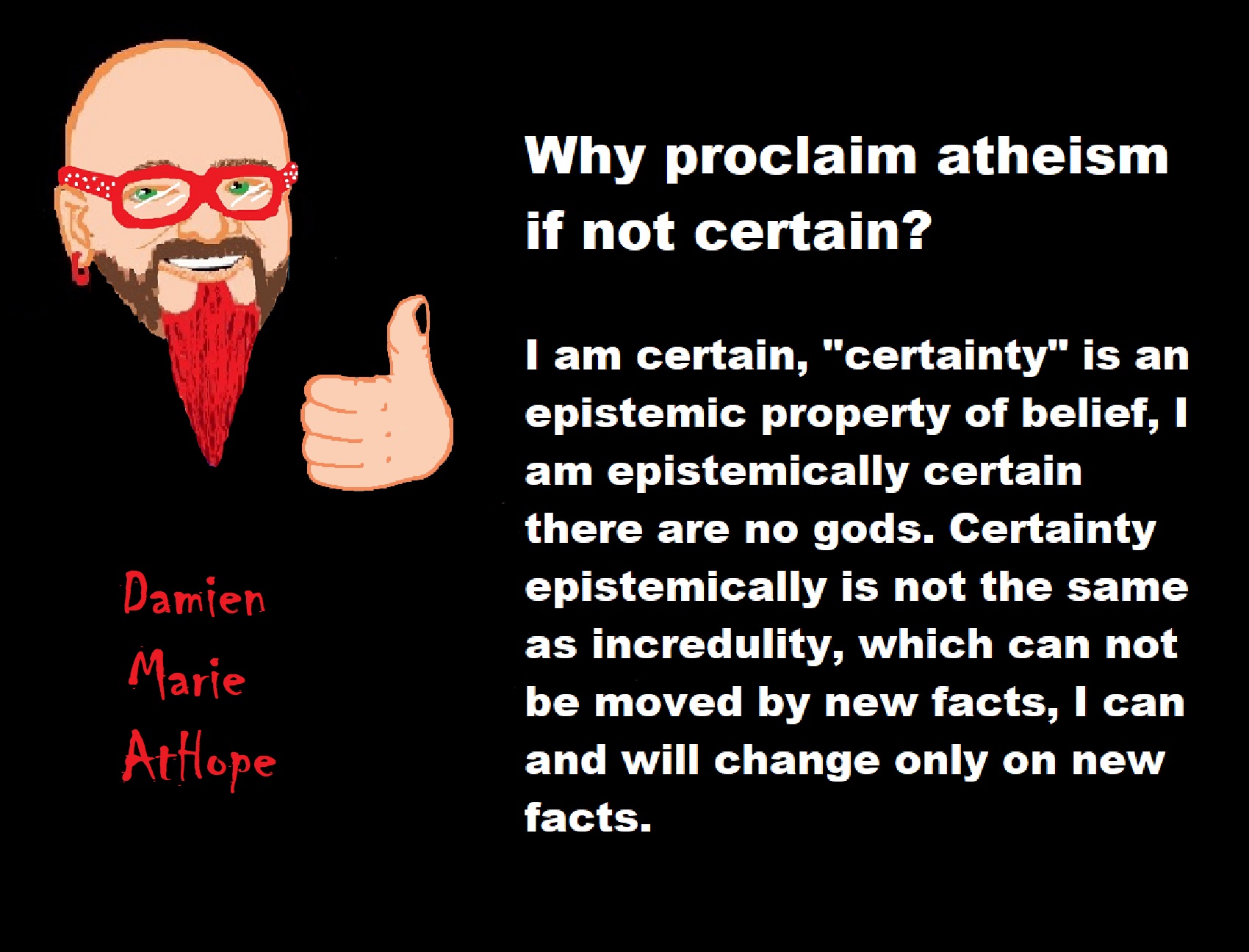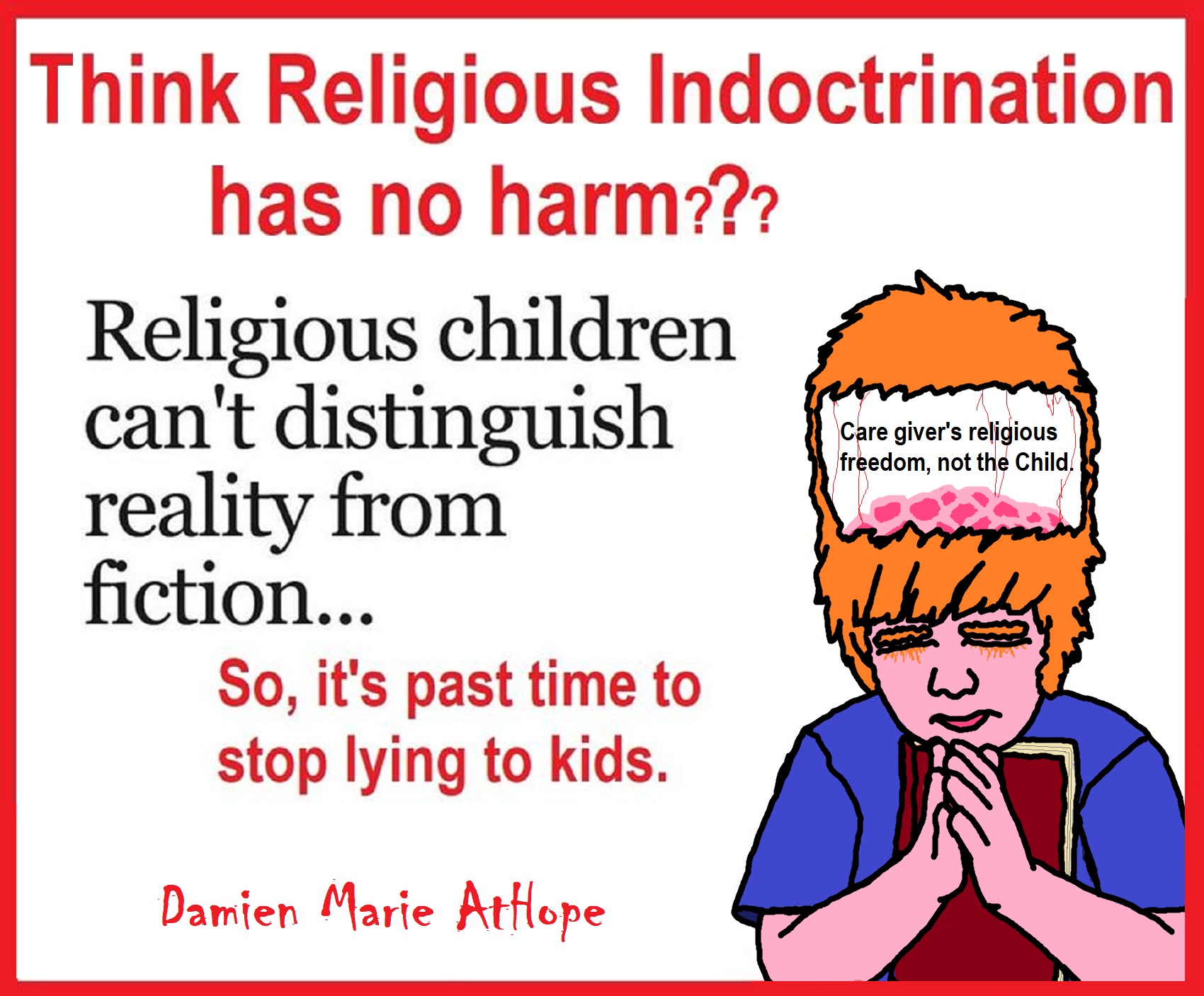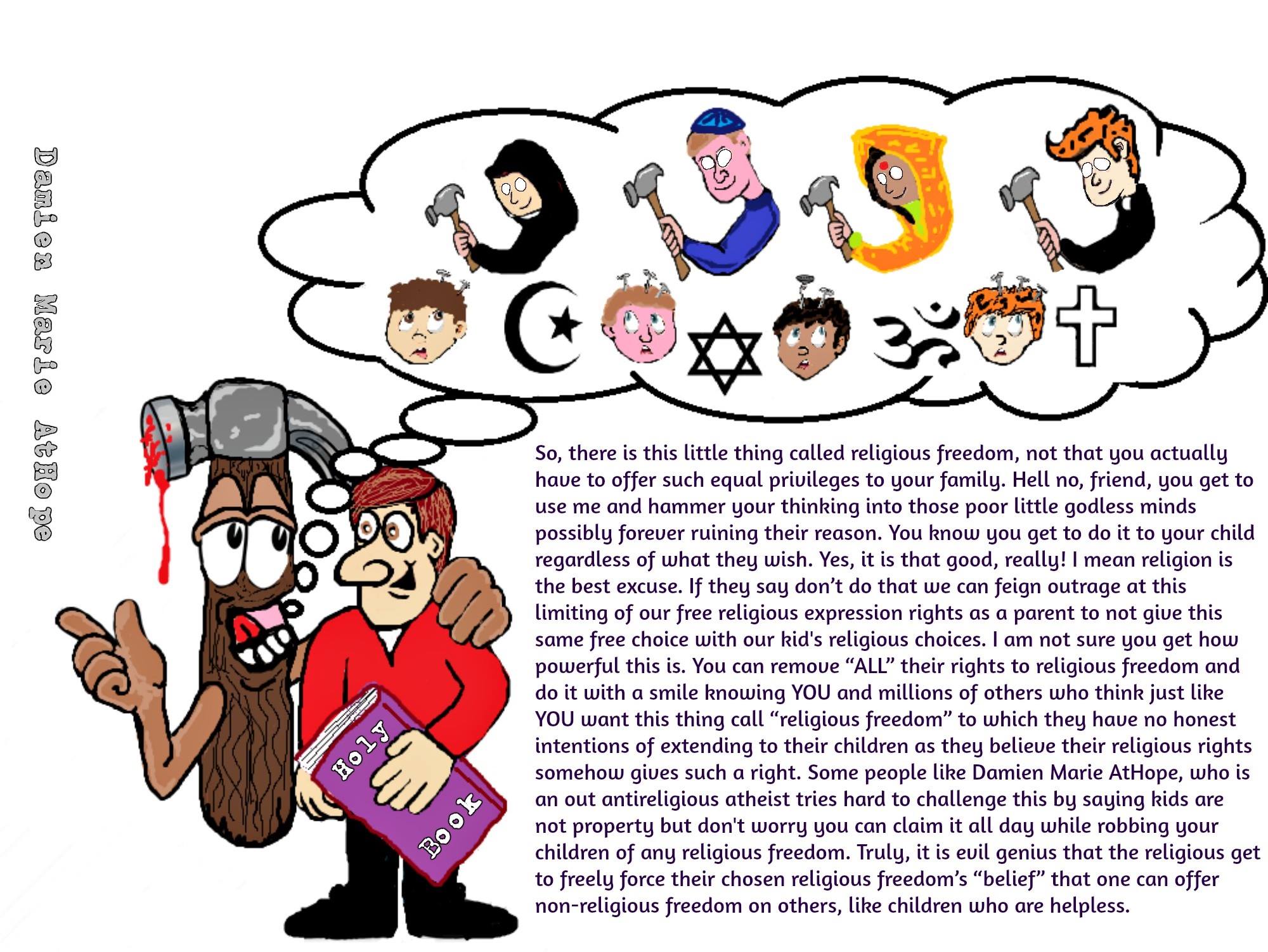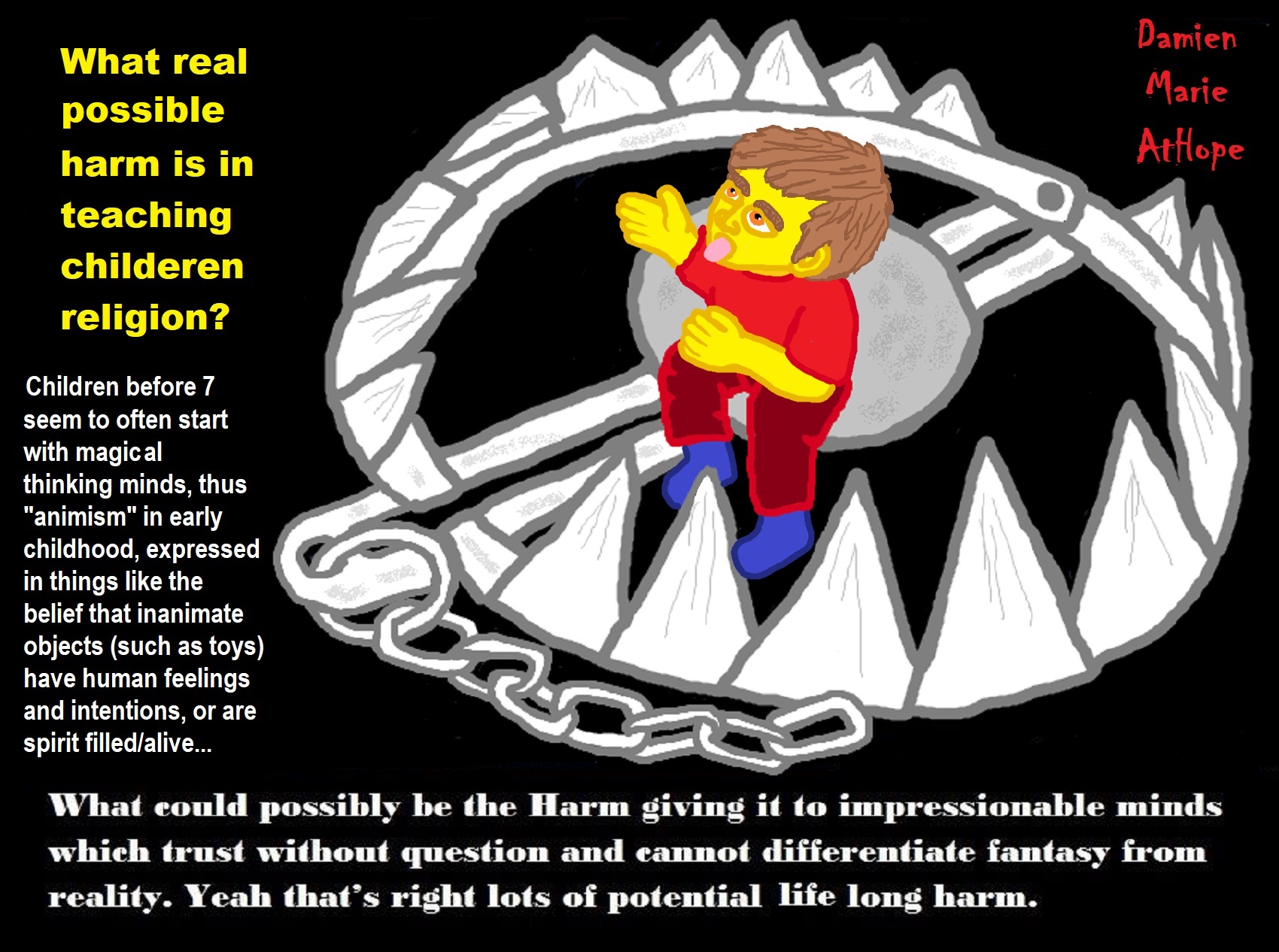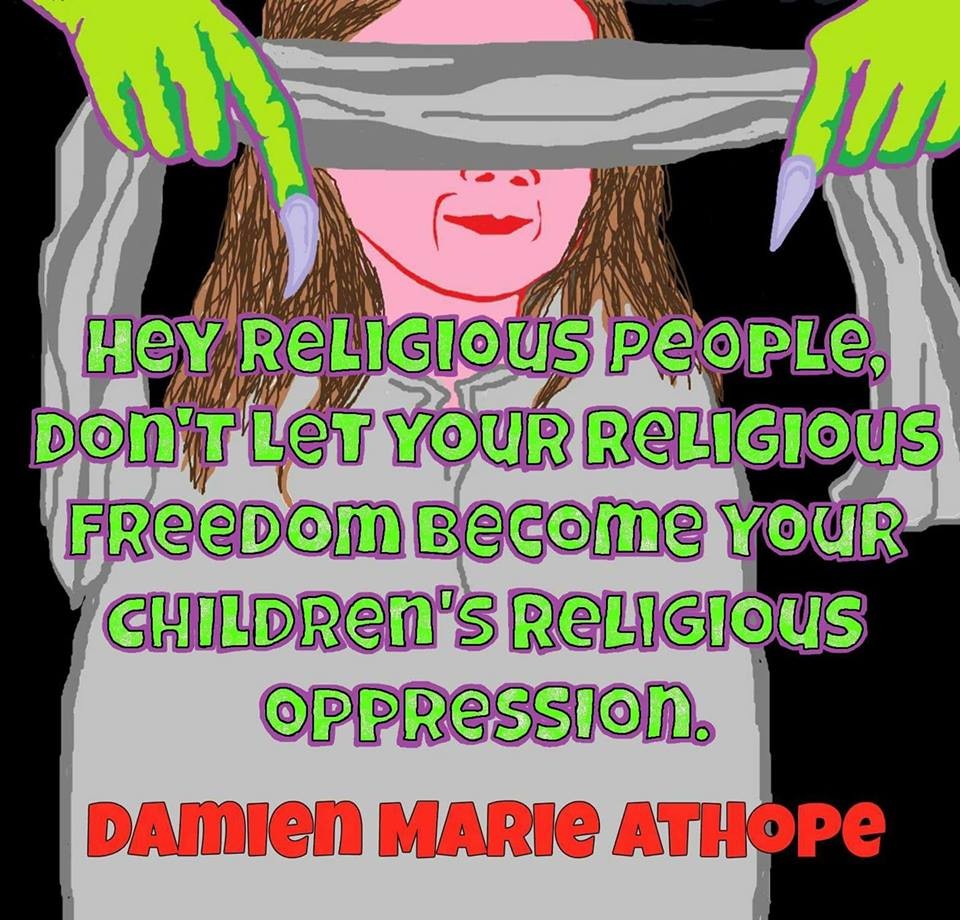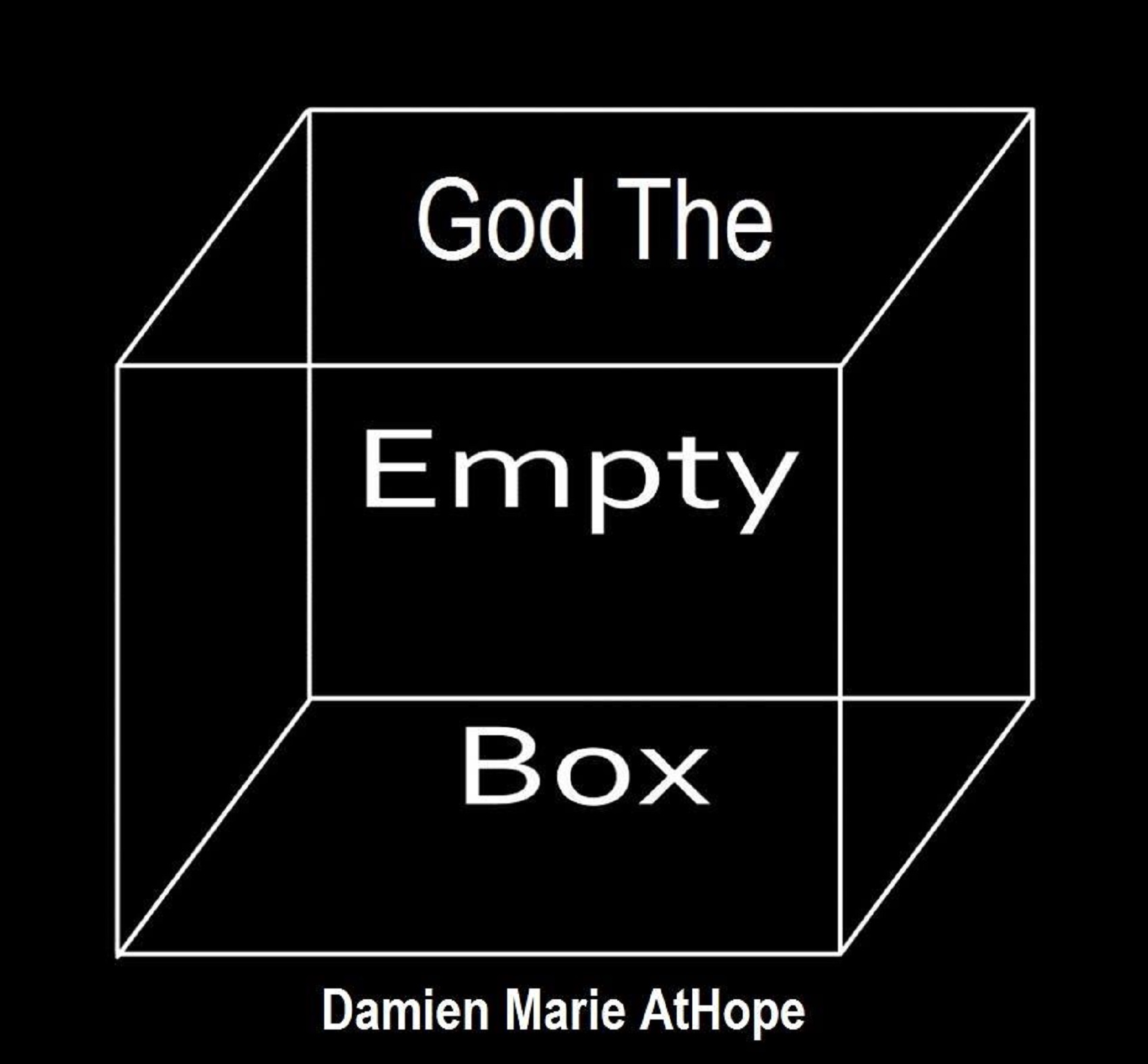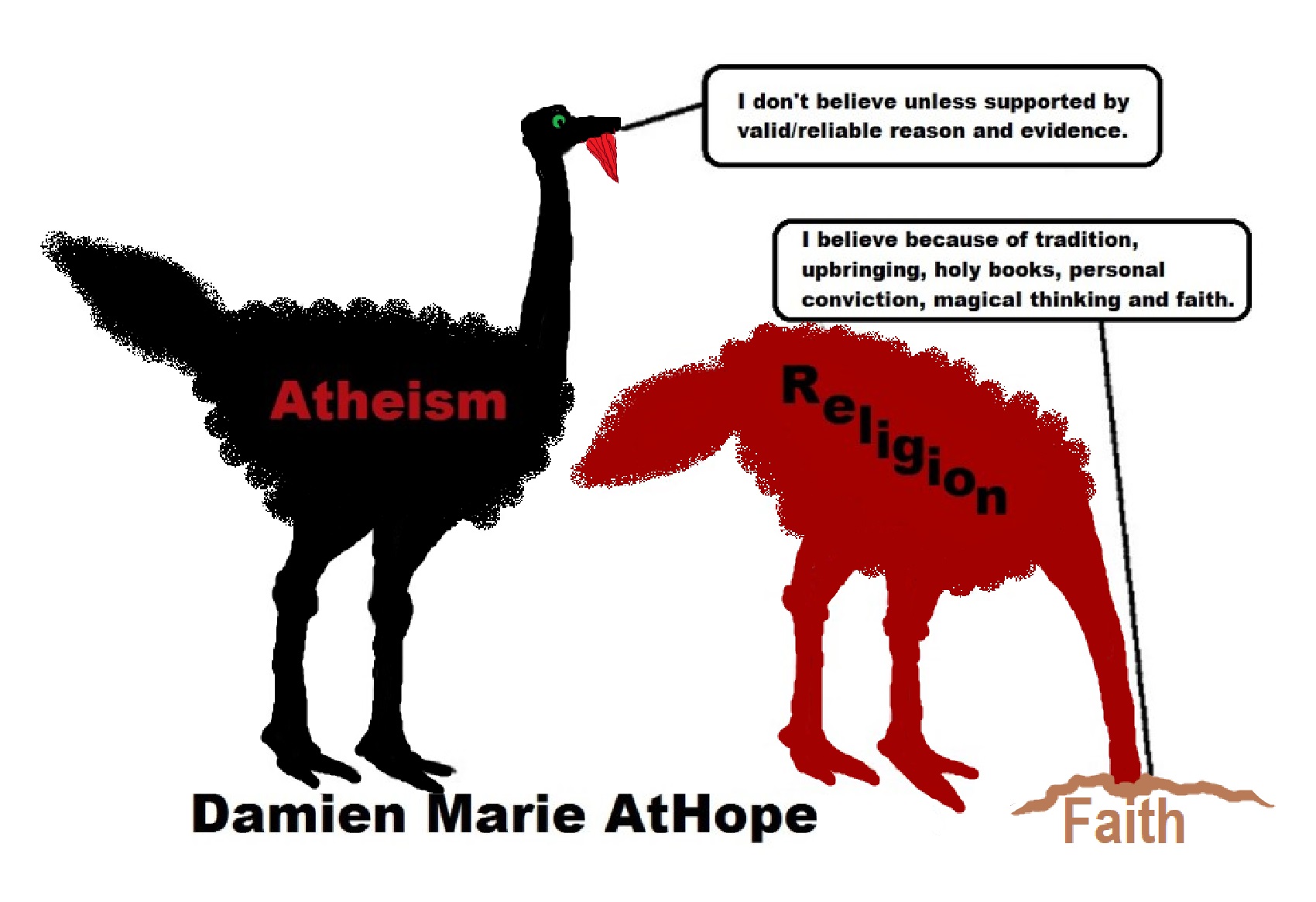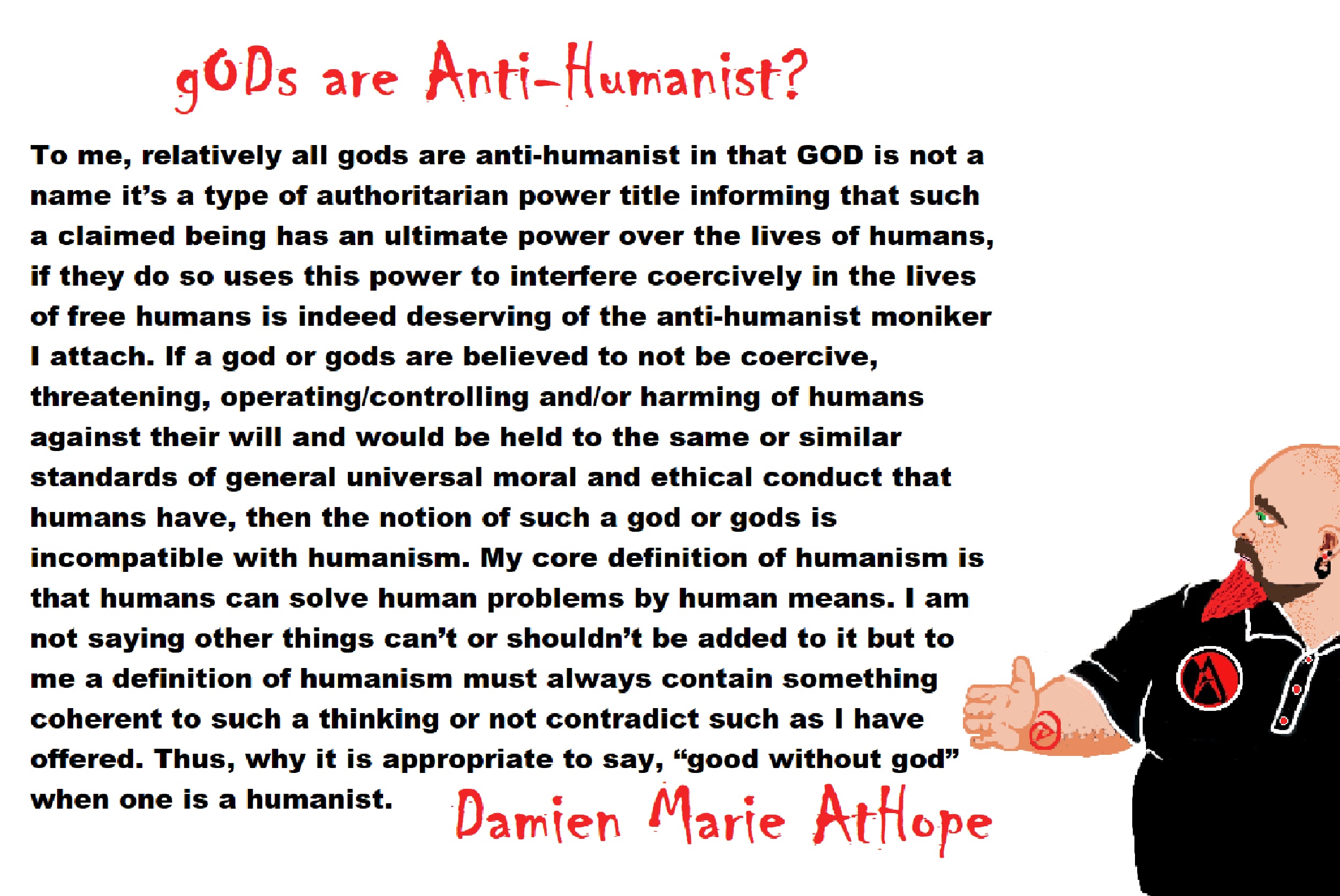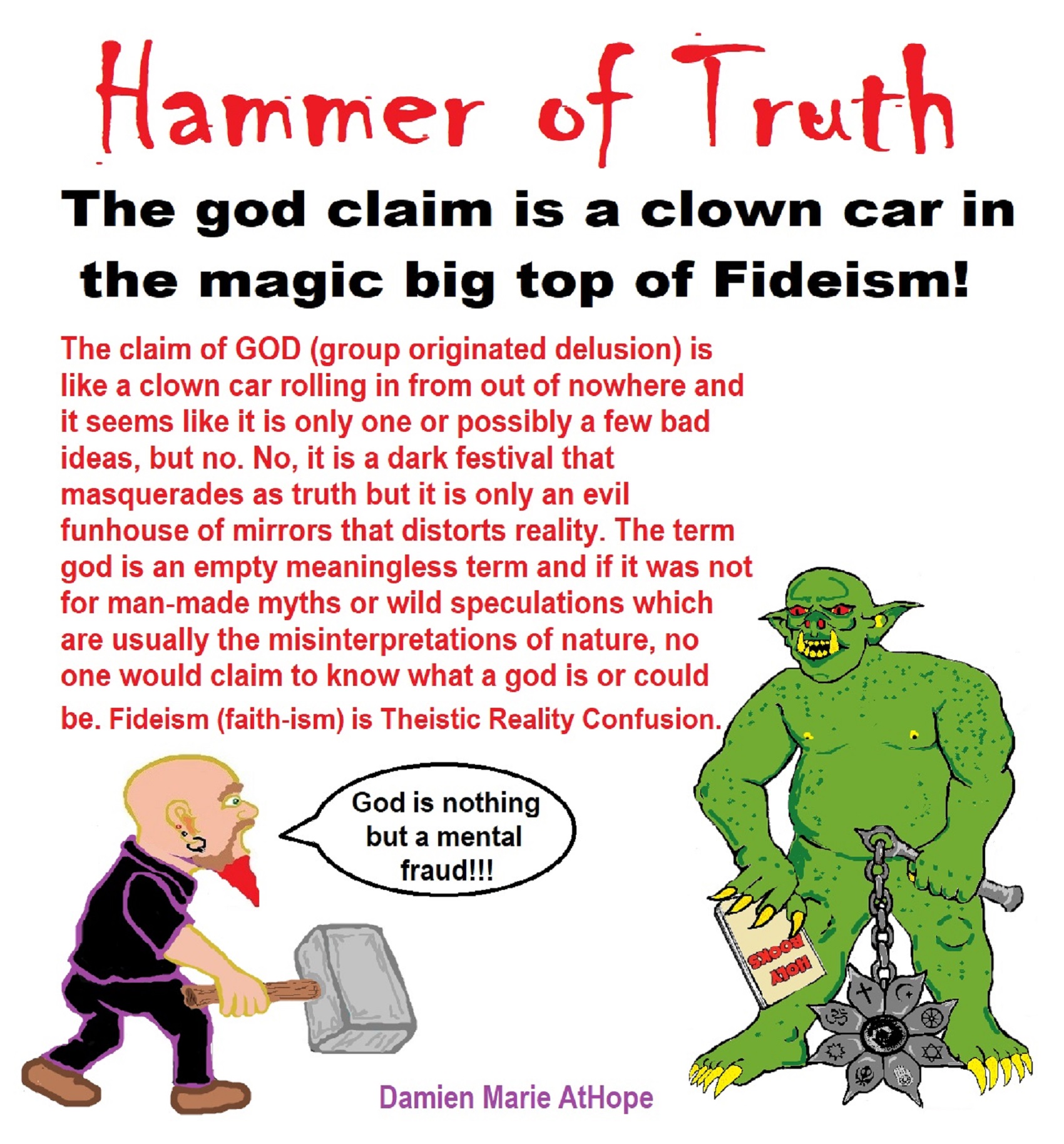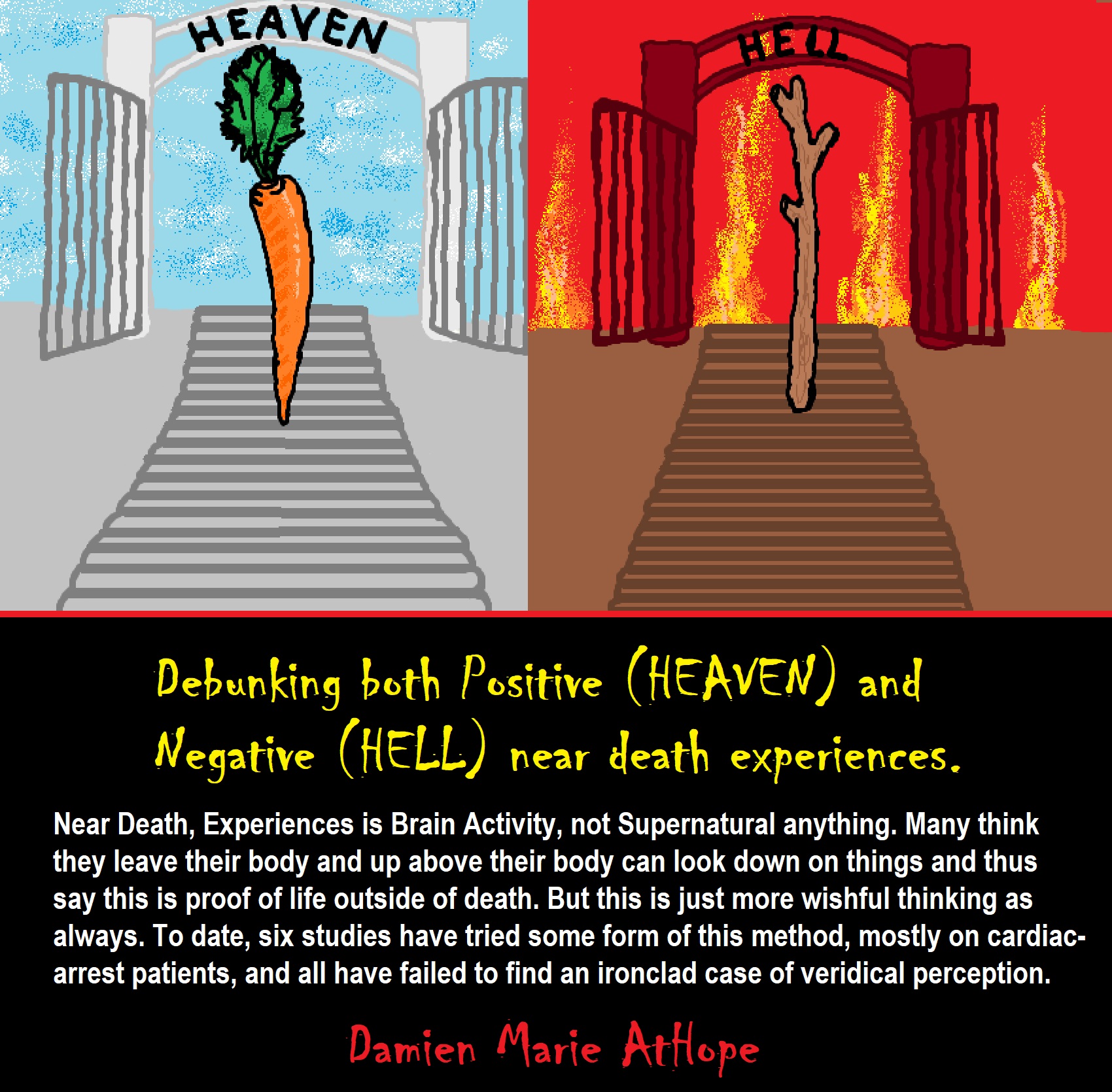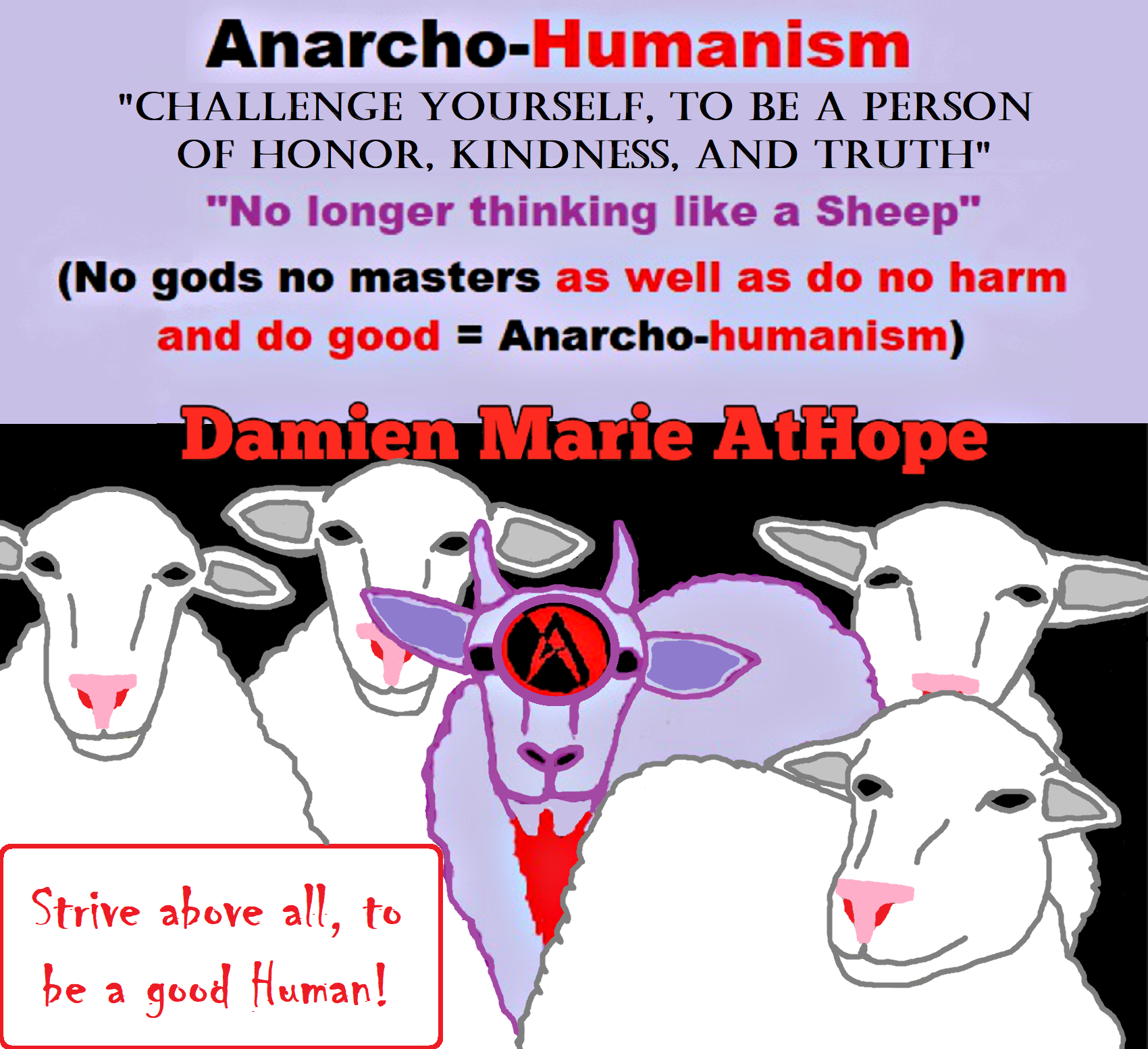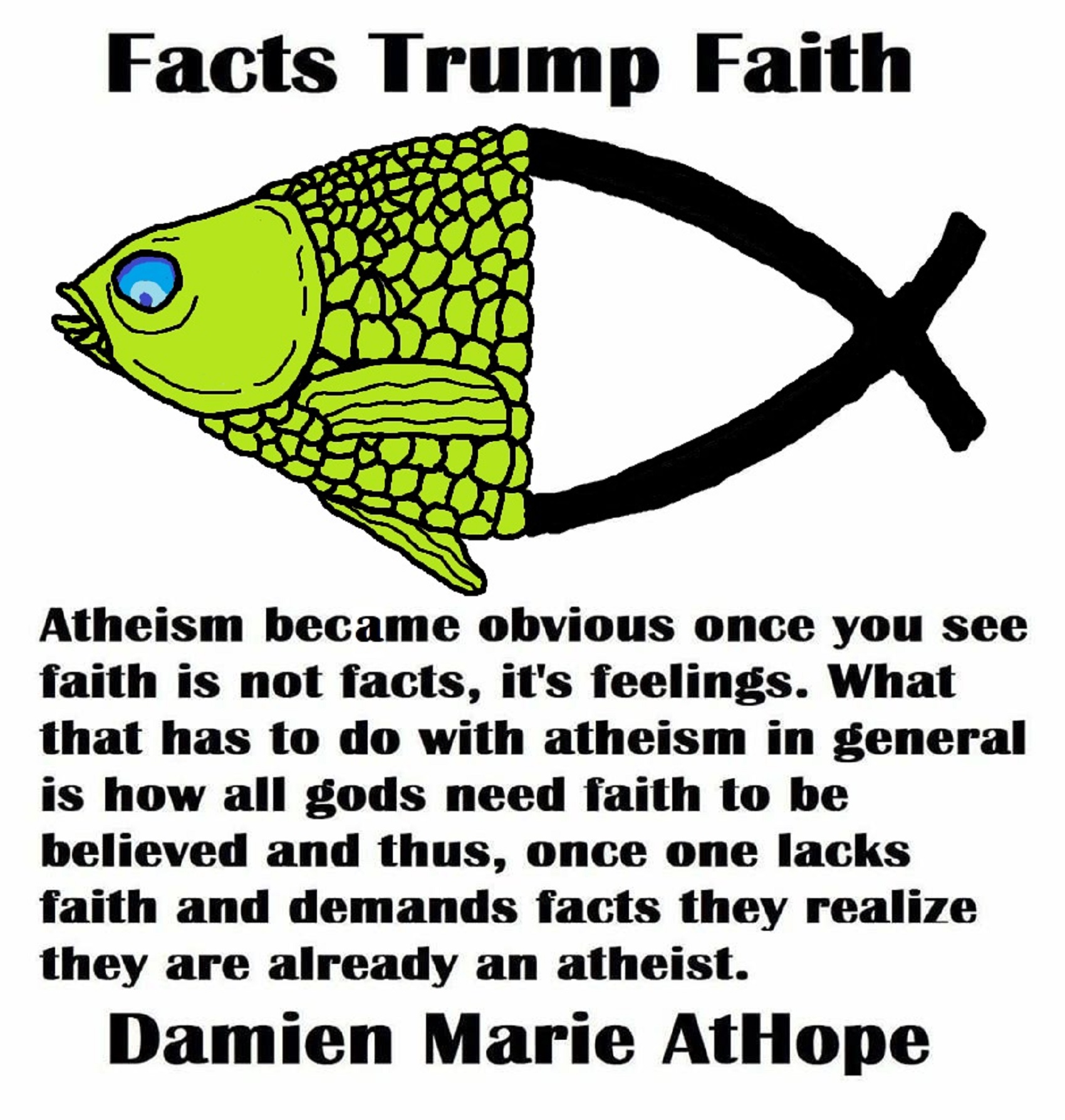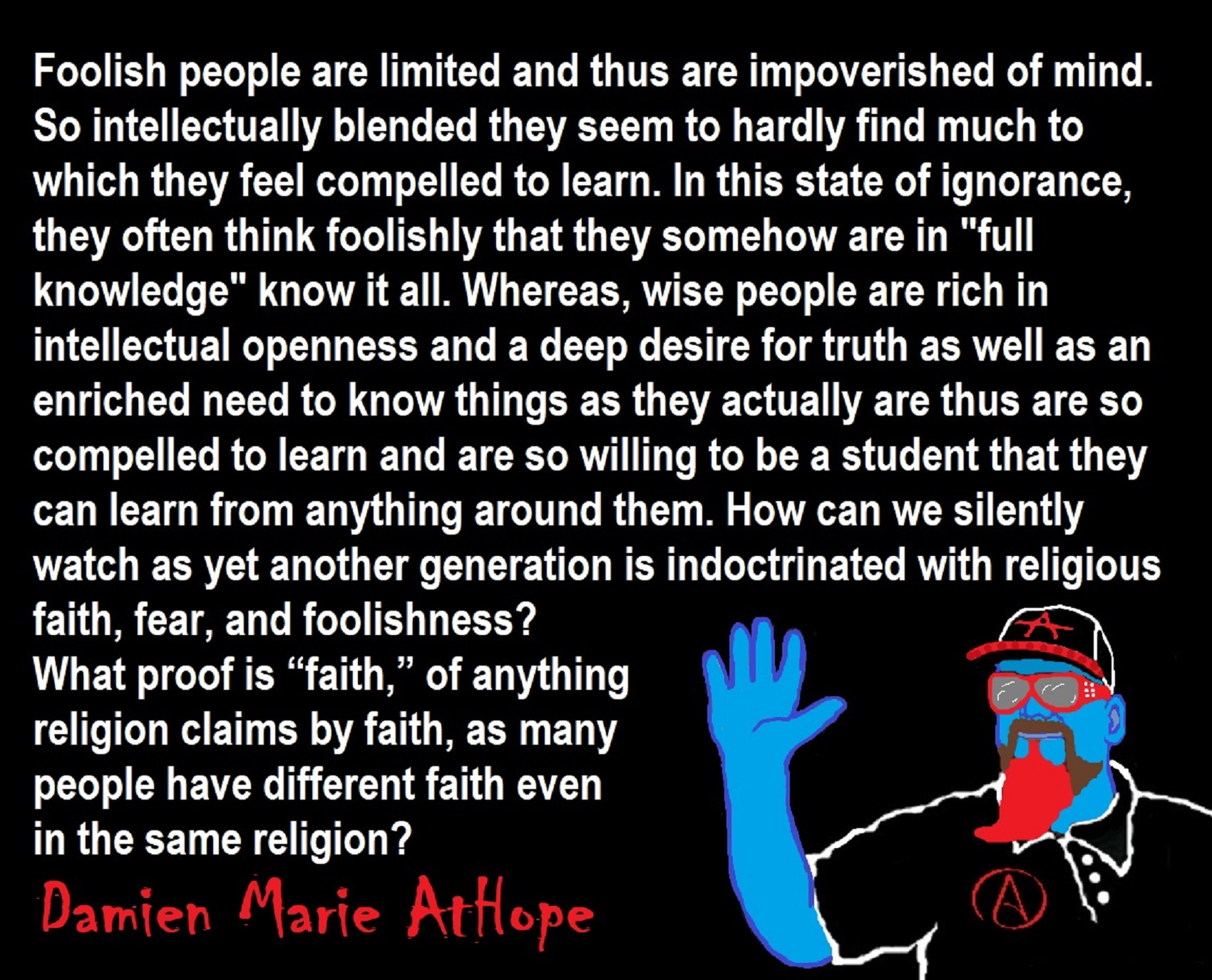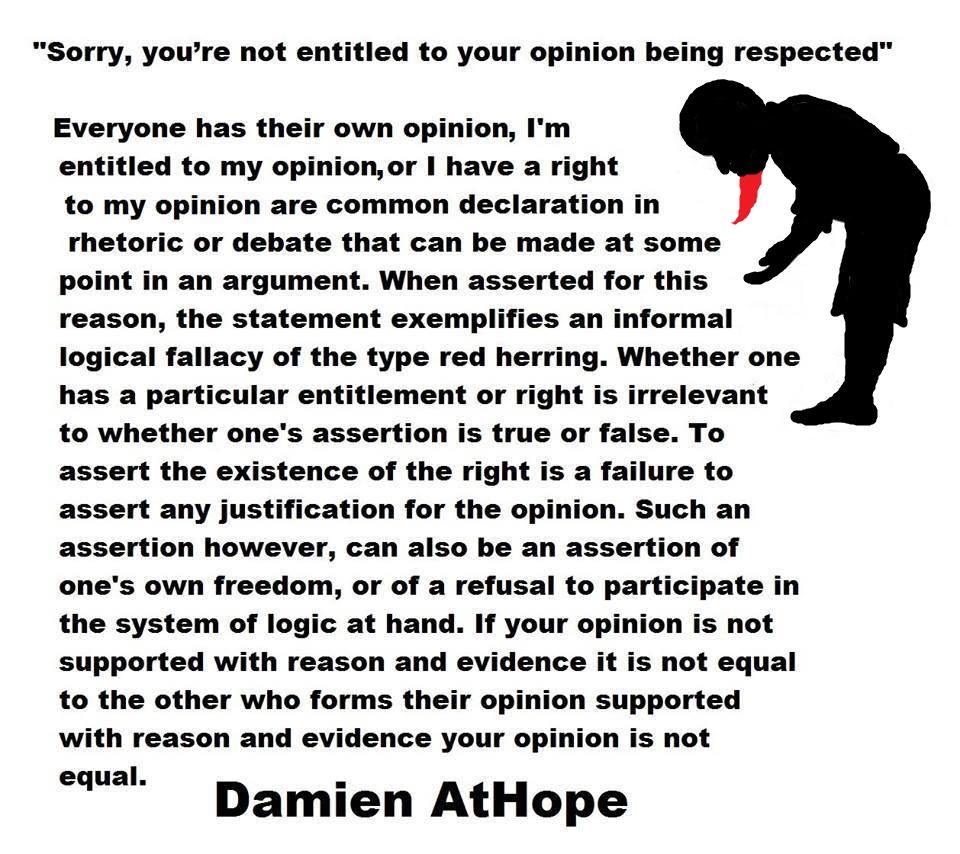
Expressions of Atheistic Thinking:
- Around 2,600 years ago, Ajita Kesakambali, ancient Indian philosopher, who is the first known proponent of Indian materialism. ref
- Around 2,535 to 2,475 years ago, Heraclitus, Greek pre-Socratic philosopher, a native of the Greek city Ephesus, Ionia, on the coast of Anatolia, also known as Asia Minor or modern Turkey. ref
- Around 2,500 to 2,400 years ago, according to The Story of Civilization book series certain African pygmy tribes have no identifiable gods, spirits, or religious beliefs or rituals, and even what burials accrue are without ceremony. ref
- Around 2,490 to 2,430 years ago, Empedocles, Greek pre-Socratic philosopher and a citizen of Agrigentum, a Greek city in Sicily. ref
- Around 2,460 to 2,370 years ago, Democritus, Greek pre-Socratic philosopher considered to be the “father of modern science” possibly had some disbelief amounting to atheism. ref
- Around 2,399 years ago or so, Socrates, a famous Greek philosopher was tried for sinfulness by teaching doubt of state gods. ref
- Around 2,341 to 2,270 years ago, Epicurus, a Greek philosopher known for composing atheistic critics and famously stated, “Is God willing to prevent evil, but not able? Then he is not omnipotent. Is he able, but not willing? Then he is malevolent. Is he both able and willing? Then whence cometh evil? Is he neither able nor willing? Then why call him god?” ref
This last expression by Epicurus, seems to be an expression of Axiological Atheism. To understand and utilize value or actually possess “Value Conscious/Consciousness” to both give a strong moral “axiological” argument (the problem of evil) as well as use it to fortify humanism and positive ethical persuasion of human helping and care responsibilities. Because value-blindness gives rise to sociopathic/psychopathic evil.
Short History of atheism?
“The English term ‘atheist’ was used at least as early as the sixteenth century and atheistic ideas and their influence have a longer history. Atheism is in the broadest sense a rejection of any belief in the existence of deities. In a narrower sense, atheism is specifically the position that there are no deities and any statements to the contrary are false ones. This is not to be confused with ‘negative atheism’ (or agnosticism) which declares that there is no evidence or knowledge about gods or god and thus has no belief in reference to a God or gods. It is an important distinction because young children are not ‘atheists’ simply because they have no view on God or gods. The infant would have no evidence for any view on the topic.” ref
“In the East, a contemplative life not centered on the idea of deities began in the sixth century BCE with the rise of Indian religions such as Jainism, Buddhism, and various sects of Hinduism in ancient India, and of Taoism in ancient China. Atheism in Hinduism Within the astika (“orthodox”) schools of Hindu philosophy, the Samkhya and the early Mimamsa school did not accept a creator deity in their respective systems.” ref
“Philosophical atheist thought began to appear in Europe and Asia in the sixth or fifth century BCE. Will Durant, in his The Story of Civilization, explained that certain pygmy tribes found in Africa were observed to have no identifiable cults or rites. There were no totems, no deities, and no spirits. Their dead were buried without special ceremonies or accompanying items and received no further attention. They even appeared to lack simple superstitions, according to travelers’ reports.” ref
“Atheism is derived from the Ancient Greek ἄθεος atheos meaning “without gods; godless; secular; refuting or repudiating the existence of gods, especially officially sanctioned gods”. In the East, a contemplative life not centered on the idea of deities began in the sixth century BCE with the rise of Jainism, Buddhism, and various sects of Hinduism in India, and of Taoism in China. These religions offered a philosophic and salvific path not involving deity worship. Deities are not seen as necessary to the salvific goal of the early Buddhist tradition; their reality is explicitly questioned and often rejected. There is a fundamental incompatibility between the notion of gods and basic Buddhist principles, at least in some interpretations. Some Buddhist philosophers assert that belief in an eternal creator god is a distraction from the central task of the religious life.” ref
“In Western Classical Antiquity, theism was the fundamental belief that supported the legitimacy of the state (the polis, later the Roman Empire). Historically, any person who did not believe in any deity supported by the state was fair game to accusations of atheism, a capital crime. Charges of atheism (meaning any subversion of religion) were often used similarly to charges of heresy and impiety as a political tool to eliminate enemies. Early Christians were widely reviled as atheists because they did not believe in the existence of the Roman gods. During the Roman Empire, Christians were executed for their rejection of the pagan deities in general and the Imperial cult of ancient Rome in particular. When Christianity became the Roman state religion under Theodosius I in 381, heresy became a punishable offense.” ref
“The roots of Western philosophy began in the Greek world in the sixth century BCE or 2,621 to 2,521 years ago. The first Hellenic philosophers were not atheists, but they attempted to explain the world in terms of the processes of nature instead of by mythological accounts. Thus lightning was the result of “wind-breaking out and parting the clouds”, and earthquakes occurred when “the earth is considerably altered by heating and cooling”. The early philosophers often criticized traditional religious notions. Xenophanes (6th century BCE or 2,621 to 2,521 years ago) famously said that if cows and horses had hands, “then horses would draw the forms of gods like horses, and cows like cows”. Another philosopher, Anaxagoras (5th century BCE or 2,521 to 2,421 years ago), claimed that the Sun was “a fiery mass, larger than the Peloponnese“; a charge of impiety was brought against him, and he was forced to flee Athens.” ref
“The first fully materialistic philosophy was produced by the atomists Leucippus and Democritus (5th century BCE or 2,521 to 2,421 years ago), who attempted to explain the formation and development of the world in terms of the chance movements of atoms moving in infinite space. For political reasons, Socrates was accused of being atheos (“refusing to acknowledge the gods recognized by the state”). The Athenian public associated Socrates (c. 470–399 BCE) with the trends in pre-Socratic philosophy towards naturalistic inquiry and the rejection of divine explanations for phenomena.” ref
“Aristophanes‘ comic play The Clouds (performed 423 BCE or 2,444 years ago) portrayed Socrates as teaching his students that the traditional Greek deities did not exist. Socrates was later tried and executed under the charge of not believing in the gods of the state and instead of worshipping foreign gods. Socrates himself vehemently denied the charges of atheism at his trial. All the surviving sources about him indicate that he was a very devout man, who prayed to the rising sun and believed that the oracle at Delphi spoke the word of Apollo.” ref
“While only a few of the ancient Greco-Roman schools of philosophy were subject to accusations of atheism, there were some individual philosophers who espoused atheist views. The Peripatetic philosopher Strato of Lampsacus did not believe in the existence of gods. The Cyrenaic philosopher Theodorus the Atheist (300 BCE or 2,321 years ago) is supposed to have denied that gods exist and wrote a book On the Gods expounding his views.” ref
My Thought on the Evolution of God?
Animal protector deities from old totems/spirit animal beliefs come first to me, 13,000/12,000 years ago, then women as deities 11,000/10,000 years ago, then male gods around 7,000/8,000 years ago. Then Moralistic gods around 5,000/4,000 years ago.
Damien’s Quick Thoughts on the Evolution of Deities a rough outline.
In Damien’s thinking it likely went First animals as protector gods by 12,000, then female goddesses around 11,000/10,000 years ago. To Damien, there were earth and sky goddesses as well as all manner of protectors or another type of goddesses but somewhat seeming to contain similarity. In Damien’s thinking the merging of male and female, sacred couple or Yin-dark/female and Yang-light/male themes like Earth mother and sky father are next at around or just before 7,000 years ago, the original/first dual god and goddess. But there were always other lesser goddesses and then gods as it was never really monotheism, until after 4,000 years ago, then only gaining strength around 2,000 years ago.
1. (first kind of deities that were invented, In Damien’s thinking) Low Gods (Earth/ Tutelary deity)
2. (second kind of deities that were invented, In Damien’s thinking) god High Gods (Sky/Supreme deity)
3. (last kind of deities to be invented after 5,000 years ago to support the state, In Damien’s thinking) Moralistic Gods (Deity enforcement/divine order)
In Damien’s thinking, in a rough way it can be conserved as Low Gods (Earth/ Tutelary deity), High Gods (Sky/Supreme deity), and Moralistic Gods (Deity enforcement/divine order)
Greek and Roman gods and goddesses are from the Proto-indo-European religion that had the Earth mother and sky father that goes back around 7,000 years ago.
“The Proto-Indo-European pantheon includes a number of securely reconstructed deities such as *Dyḗws Ph₂tḗr, the daylight-sky god; his consort *Dʰéǵʰōm, the earth mother; his daughter *H₂éwsōs, the dawn goddess; his sons the Divine Twins; and *Seh₂ul, a solar goddess. Some deities, like the weather god *Perkʷunos or the herding-god *Péh₂usōn, are only attested in a limited number of traditions – Western (European) and Graeco-Aryan, respectively – and could therefore represent late additions that did not spread throughout the various Indo-European dialects.” https://en.wikipedia.org/wiki/Proto-Indo-European_mythology
If a god actually has the privilege of power to help or hurt and uses this privilege of power to take advantage, oppress, terrorize, threaten to harm, harm, or kill then such a being is scum, even if hypothetically it was real.
Why the powerful love gods?
In Damien’s thinking, from at least 5,000 years ago, goddesses/gods give states and kings their supposed right to rule, and we now call the “Divine Right of Kings.” In Damien’s thinking, it could have gone something like proto kings start 6,000 or more, it is all related to subjects addressed in both anarchism and socialism, the division of labor, power, rights, and recourses. To Damien, the rise of slavery was likely 7,000 years ago, growing evidence by 6,000 years ago, then becoming widespread by 5,000 years ago.
Damien’s thoughts are on how the state gave religion a military to enforce and violently spread belief unity, and the state got the religion’s blessing and right to rule. So, to recap Damien’s thoughts are “moralistic gods” aged around 5,000 years old when male gods are 7,000 years old and goddesses about 11,000/10,000 years old, thus “Moralistic Gods (Deity enforcement/divine order)” are
a “power-grab” scam, using religious myths to do so.
Low Gods “Earth” or Tutelary deity and High Gods “Sky” or Supreme deity
“An Earth goddess is a deification of the Earth. Earth goddesses are often associated with the “chthonic” deities of the underworld. Ki and Ninhursag are Mesopotamian earth goddesses. In Greek mythology, the Earth is personified as Gaia, corresponding to Roman Terra, Indic Prithvi/Bhūmi, etc. traced to an “Earth Mother” complementary to the “Sky Father” in Proto-Indo-European religion. Egyptian mythology exceptionally has a sky goddess and an Earth god.” ref, ref
“A mother goddess is a goddess who represents or is a personification of nature, motherhood, fertility, creation, destruction or who embodies the bounty of the Earth. When equated with the Earth or the natural world, such goddesses are sometimes referred to as Mother Earth or as the Earth Mother. In some religious traditions or movements, Heavenly Mother (also referred to as Mother in Heaven or Sky Mother) is the wife or feminine counterpart of the Sky father or God the Father.” ref
Tutelary deity
“A tutelary (also tutelar) is a deity or spirit who is a guardian, patron, or protector of a particular place, geographic feature, person, lineage, nation, culture, or occupation. The etymology of “tutelary” expresses the concept of safety and thus of guardianship. In late Greek and Roman religion, one type of tutelary deity, the genius, functions as the personal deity or daimon of an individual from birth to death. Another form of personal tutelary spirit is the familiar spirit of European folklore.” ref
Moralizing Gods
“Live Science reports that Patrick Savage of Keio University and his colleagues employed “Seshat,” a global history databank spanning the end of the Paleolithic period to the beginning of the Industrial Revolution, to expand on the work of previous studies that looked at the relationship between belief in moralizing gods and the rise of complex societies. Authors of some smaller-scale studies have suggested that belief in moralizing gods and supernatural judgment helped shape emerging complex societies, while others have argued that belief in the threat of divine punishment appeared later in societies’ development.” ref
“Savage explained that the use of “Seshat” allowed his team members to take into account more than 50 measures of social complexity and four measures of belief in supernatural enforcement in more than 400 societies living in 30 different regions of the world over the past 10,000 years. The researchers found that belief in moralizing gods usually appeared after civilizations reached populations estimated at more than one million people. “It was particularly striking how consistent it was [that] this phenomenon emerged at the million-person level,” Savage said.” ref
“First, you get big societies, and these beliefs then come.” Religion, he added, may help stabilize large societies in which people live more anonymous lives, unlike small hunter-gatherer societies, in which everyone knows what everyone else is doing. To read about the nineteenth-century discovery of a tablet containing a story that was eerily similar to that of Noah in the Old Testament, go to “Cuneiform: Religion.” ref
Moralistic gods, supernatural punishment, and the expansion of human sociality
“Since the origins of agriculture, the scale of human cooperation and societal complexity has dramatically expanded. This fact challenges standard evolutionary explanations of pro-sociality because well-studied mechanisms of cooperation based on genetic relatedness, reciprocity, and partner choice falter as people increasingly engage in fleeting transactions with genetically unrelated strangers in large anonymous groups. To explain this rapid expansion of pro-sociality, researchers have proposed several mechanisms. Here we focus on one key hypothesis: cognitive representations of gods as increasingly knowledgeable and punitive, and who sanction violators of interpersonal social norms, foster and sustain the expansion of cooperation, trust, and fairness towards co-religionist strangers.” ref
“The researchers tested this hypothesis using extensive ethnographic interviews and two behavioral games designed to measure impartial rule-following among people (n = 591, observations = 35,400) from eight diverse communities from around the world: (1) inland Tanna, Vanuatu; (2) coastal Tanna, Vanuatu; (3) Yasawa, Fiji; (4) Lovu, Fiji; (5) Pesqueiro, Brazil; (6) Pointe aux Piments, Mauritius; (7) the Tyva Republic (Siberia), Russia; and (8) Hadzaland, Tanzania. Participants reported adherence to a wide array of world religious traditions including Christianity, Hinduism, and Buddhism, as well as notably diverse local traditions, including animism and ancestor worship.” ref
“Holding a range of relevant variables constant, the higher participants rated their moralistic gods as punitive and knowledgeable about human thoughts and actions, the more coins they allocated to geographically distant co-religionist strangers relative to both themselves and local co-religionists. Our results support the hypothesis that beliefs in moralistic, punitive, and knowing gods increase impartial behavior towards distant co-religionists, and therefore can contribute to the expansion of pro-sociality.” ref
Complex societies precede moralizing gods throughout world history
“Complex societies precede moralizing gods throughout world history. The ‘moralizing gods’ hypothesis offers a solution to both puzzles by proposing that belief in morally concerned supernatural agents culturally evolved to facilitate cooperation among strangers in large-scale societies. The study systematically coded records from 414 societies that span the past 10,000 years from 30 regions around the world, using 51 measures of social complexity and 4 measures of supernatural enforcement of morality. Not only confirm the association between moralizing gods and social complexity, but also reveal that moralizing gods follow—rather than precede—large increases in social complexity. Contrary to previous predictions, powerful moralizing ‘big gods’ and prosocial supernatural punishment tend to appear only after the emergence of ‘megasocieties’ with populations of more than around one million people.” ref
“The geographic locations of the 33 hunter-gatherer societies were analyzed in the study on Hunter-Gatherers and the Origins of Religion which demonstrated the distribution of the seven characters describing hunter-gatherer religiosity.”
“Recent studies of the evolution of religion have revealed the cognitive underpinnings of belief in supernatural agents, the role of ritual in promoting cooperation, and the contribution of morally punishing high deities/gods/goddesses to the growth and stabilization of human society. The universality of religion across human society points to a deep evolutionary past. However, specific traits of nascent religiosity, and the sequence in which they emerged, have remained unknown. Here we reconstruct the evolution of religious beliefs and behaviors in early modern humans using a global sample of hunter-gatherers and seven traits describing hunter-gatherer religiosity: animism, belief in an afterlife, shamanism, ancestor worship, high deities/gods/goddesses, and worship of ancestors or high deities/gods/goddesses who are active in human affairs.” ref
“Researchers reconstruct ancestral character states using a time-calibrated supertree based on published phylogenetic trees and linguistic classification and then test for correlated evolution between the characters and for the direction of cultural change. Results indicate that the oldest trait of religion, present in the most recent common ancestor of present-day hunter-gatherers, was animism, in agreement with long-standing beliefs about the fundamental role of this trait.” ref
“Belief in an afterlife emerged, followed by shamanism and ancestor worship. Ancestor spirits or high deities/gods/goddesses who are active in human affairs were absent in early humans, suggesting a deep history for the egalitarian nature of hunter-gatherer societies. There is a significant positive relationship between most characters investigated, but the trait “high deities/gods/goddesses” stands apart, suggesting that belief in a single creator deity can emerge in a society regardless of other aspects of its religion.” ref
“High gods” as single, all-powerful creator deities who may be active in human affairs and supportive of human morality. The variable is coded as four states. It differentiates between societies in which a creator deity is (1) absent, (2) present but inactive in human affairs, (3) active in human affairs but does no support a moral agenda, or (4) active and morally punishing. In 28 of the 33 societies in our sample coded for high gods in 28 of the 33 societies in our sample. Original coding in the additional five societies, based on principal ethnographic sources, completed the coding for all 33 societies is different geographic locations around the earth were analyzed in the study on hunter-gatherers and the origins of religion which demonstrated the distribution of the seven characters describing hunter-gatherer religiosity.” ref
“Research results reflect that animism was the earliest and most basic trait of religion because it enables humans to think in terms of supernatural beings or spirits. Animism is not a religion or philosophy, but a feature of human mentality, a by-product of cognitive processes that enable social intelligence, among other capabilities. It is a widespread way of thinking among hunter-gatherers. Animistic thought is a natural by-product of the human capacity for intentionality or “theory of mind mechanism.” ref
“This innate cognitive trait allows us to attribute a vital force to animate and inanimate elements in the environment. Once that vital force is assumed, attribution of other human characteristics will follow. Animistic beliefs are generally adaptive in the environments that prevail in hunter-gatherer societies. Animistic thinking would have been present in early hominins, certainly earlier than language. It can be inferred from the analyses, or indeed from the universality of animism, that the presence of animistic belief predates the emergence of belief in an afterlife.” ref
Material security, life history, and moralistic religions: A cross-cultural examination
“Researchers have recently proposed that “moralistic” religions—those with moral doctrines, moralistic supernatural punishment, and lower emphasis on ritual—emerged as an effect of greater wealth and material security. One interpretation appeals to life history theory, predicting that individuals with “slow life history” strategies will be more attracted to moralistic traditions as a means to judge those with “fast life history” strategies. As researchers had reservations about the validity of this application of life history theory, researchers tested these predictions with a data set consisting of 592 individuals from eight diverse societies.” ref
“The researchers sample includes individuals from a wide range of traditions, including world religions such as Buddhism, Hinduism, and Christianity, but also local traditions rooted in beliefs in animism, ancestor worship, and worship of spirits associated with nature. Researchers first test for the presence of associations between material security, years of formal education, and reproductive success. Consistent with popular life history predictions, researchers find evidence that material security and education are associated with reduced reproduction.” ref
“Building on this, researchers then test whether or not these demographic factors predict the moral concern, punitiveness, attributed knowledge-breadth, and frequency of ritual devotions towards two deities in each society. Here, researchers find no reliable evidence of a relationship between number of children, material security, or formal education and the individual-level religious beliefs and behaviors. Researchers conclude with a discussion of why life-history theory is an inadequate interpretation for the emergence of factors typifying the moralistic traditions.” ref
“Over the past few decades, numerous scholars have sought to explain the emergence and spread of “moralistic” religious traditions. These traditions are characterized as those that emphasize adherence to prosocial norms under the threat of punishment by knowledgeable deities explicitly concerned with how we treat each other. Many have assessed how socioecological variables such as societal complexity, resource scarcity, and animal husbandry, can help explain the emergence of these “moralistic high gods.” ref
“There is some evidence that commitment to moralistic gods—deities thought to be concerned with moral norms, particularly those claimed to bestow costs or benefits to people based on their moral actions—post-date critical thresholds of societal complexity, suggesting they developed and spread as a response to that complexity. Normative beliefs in divine punishment and supernatural monitoring by these deities may function adaptively by reducing the costs of punishing others for misconduct, while further expanding and/or stabilizing the sphere of human cooperation. Moreover, an emerging secularization literature shows that among contemporary state societies, greater material security, economic equality, and education predict less overall religiosity cross-nationally. In other words, the functions that moralistic religions traditionally served may have been co-opted and out-competed by effective secular institutions, thus diminishing the significance of the former.” ref
“As detailed below, some researchers have challenged this view by arguing that a widespread shift in affluence was the prime mover of the genesis and ubiquity of the moralistic and ascetic traditions. According to this alternative theory, religious traditions turn moralistic not because widely shared beliefs in supernatural deities contribute to stabilizing wider pro-sociality or carry adaptive externalities, but rather because life history strategies covary with environmental fluctuations and this predicts a concomitant shift in religious expression. Before discussing this hypothesis in more detail, we first briefly review life history theory.” ref
“Generally, mathematical models in life history theory are grounded on the idea that natural selection favors developmental and reproductive strategies that increase fitness, and that optimal life history strategies may co-vary with mortality regimes and ecological conditions, such as average resource abundance and the associated variance in realizable resources. With respect to empirical studies of human reproduction, life history theory is rendered more complicated by human flexibility and the demographic transition. One commonly cited subset of the theory is framed in terms of reproductive speed (i.e., a “slow” vs. “fast” life history) where reproductive rate is predicted to co-vary with resource security.” ref
“There is some evidence regarding a positive relationship between material security and the number of children people have in traditional societies. In post-demographic transition contexts, however, some evidence suggests that more educated parents will invest more time and resources in children. However, increased education and material security are frequently associated with lower fertility rates. Foregoing reproduction in such contexts can both increase the socioeconomic status of subsequent generations, as well as reduce the number of children people have. Further complications abound regarding how this “slow-fast” spectrum follows from evolutionary life history theory.” ref
“Aiming to extend these ideas to the domain of human cultural variation, Baumard et al. recently argued that the rise of moralistic religious traditions (i.e., those with doctrines including something akin to the “Golden Rule”) and the decline of ritual devotion are indicative of slow life history strategies. Contrary to recent findings of the relationship between morally concerned deities and ecological duress or social complexity, this work argues that moralizing religious beliefs are “a set of beliefs that are pragmatically held by slow-life individuals to help them moralize fast-life behaviors”. In other words, wealthier people with fewer, “higher-quality” children are more prone to morally judge poorer people with relatively more children. This research predicts that at the individual level, “moralizing beliefs are more strongly held by people pursuing a slow strategy.” ref
“In an empirical study, Baumard et al. found that greater projected energy capture (per capita/diem kcal, estimated from historical data) predicted the emergence of moralistic religions of the so-called “Axial Age,” a period (roughly between 800 and 200 BCE or 2,620-2,220 years ago) often touted as a radical shift in human thought, religion, and social complexity. Though the details regarding how this might have happened remain unclear, the authors suggest that their results could be interpreted with life history theory (as expressed by the slow-fast continuum) insofar as “a massive increase in prosperity and certainty during the Axial Age may have triggered a drastic change in strategies, shifting motivations away from materialistic goals … toward long-term investment in reciprocation.” ref
“This “shift in priorities progressively would have impacted religious … traditions through a transmission bias, in favor of doctrines and institutions that coincided with the new values”. Affluence moves “individuals away from ‘fast life’ strategies (resource acquisition and coercive interactions) and toward ‘slow life’ strategies (self-control techniques and cooperative interactions) typically found in axial movements”. These “doctrines and institutions” associated with “slow-life strategies” include: increased asceticism, level of moral concern, punitiveness, and the breadth of knowledge (i.e., omniscience indicative of universalizing governance) attributed to deities, as well as the purported shift in emphasis from the ritual performances held by more traditional societies to one of “ethical commands.” ref
Low Gods (Earth/ Tutelary deity), High Gods (Sky/Supreme deity), and Moralistic Gods (Deity enforcement/divine order)
I may have lost a god myth as an atheist but I am happy to tell you my friend, it is exactly because of that, leaving the mental terrorizer, god belief that I truly regained my connected ethical as well as kind humanity.
I create the world I want to live in, striving for flourishing. Which is not a place but a positive potential involvement and promotion; a life of humanist goal precision. To master oneself, also means mastering positive prosocial behaviors needed for human flourishing.
If you shield them from wrong, you are hurting what is right. The truth is best championed in the sunlight of challenge. It is not a matter of being the only flame but to inspire us all to unify as one, to bring light to all we can. Be an honest thinker who values only reason and evidence as your main helpful guides.
Would we not often do better lighting a candle, than cursing at the darkness? We need people with the height of bravery, to be openly as kind as others openly hate.
We should champion “champions of truth” but as acknowledgment, not cultish worship. I never want anyone, to worship me. Acknowledging all I have done, is enough. We should support all kinds of voices, not act as if any should outweigh, the benefit from all. Power to the people.
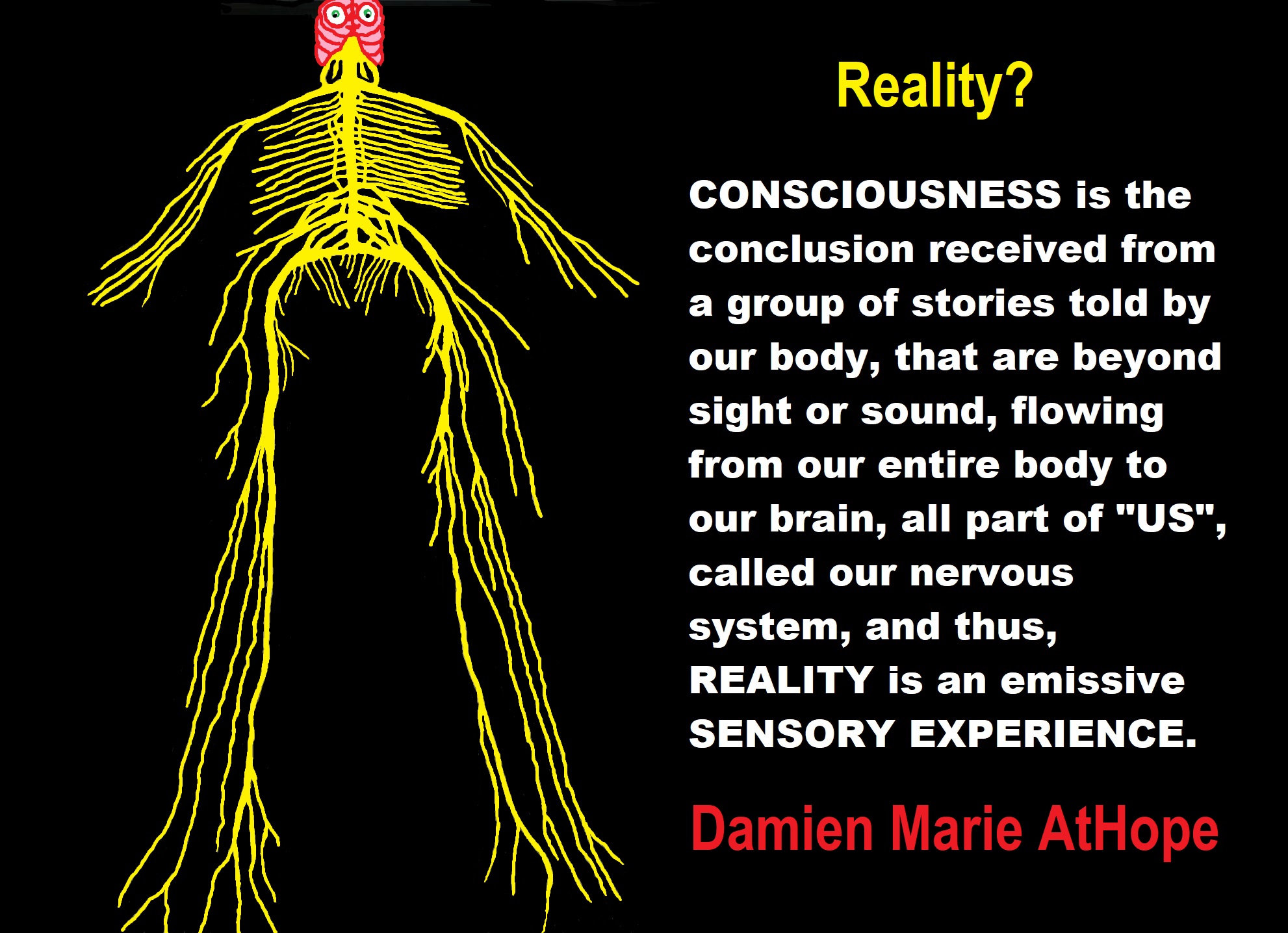
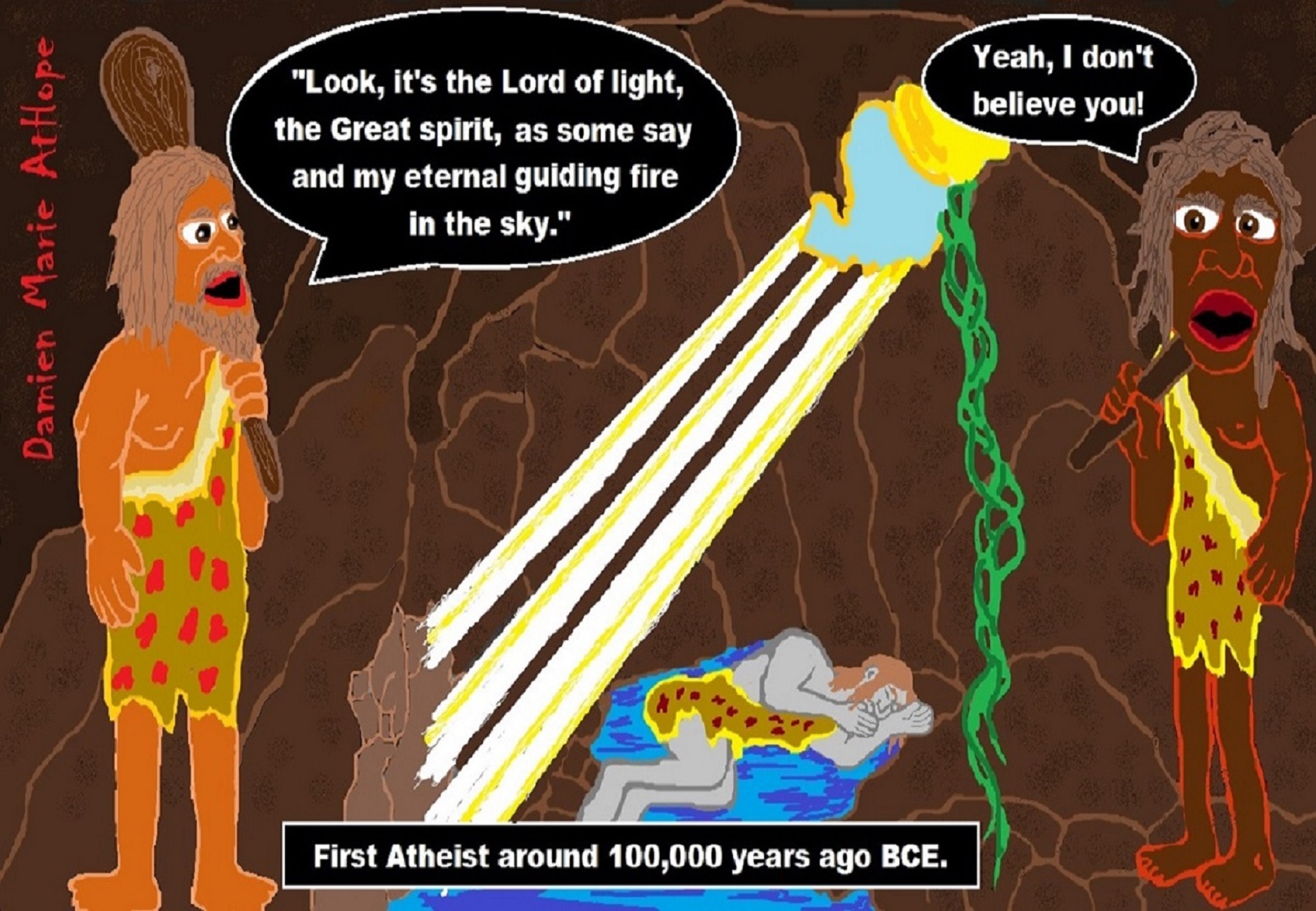

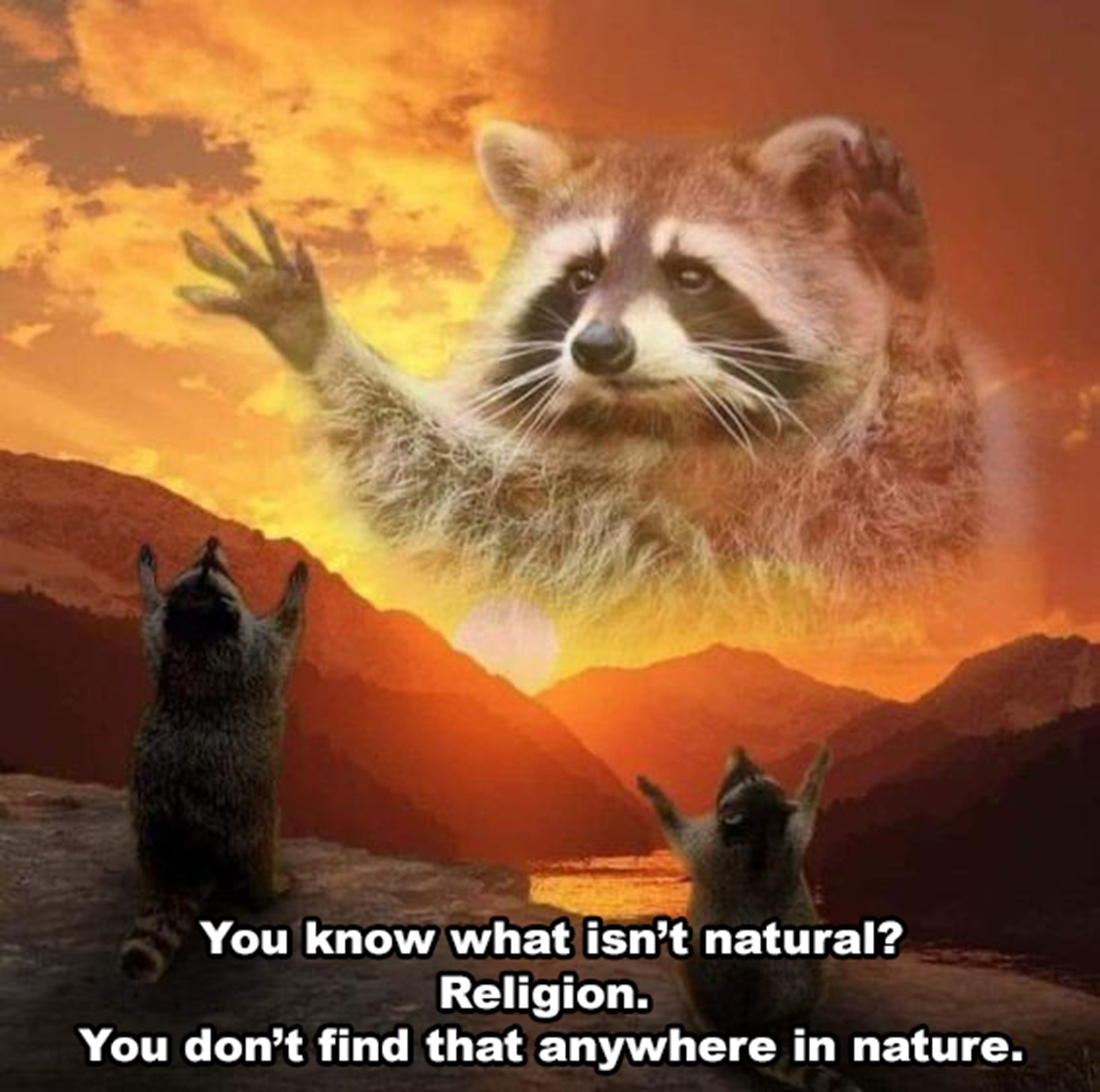
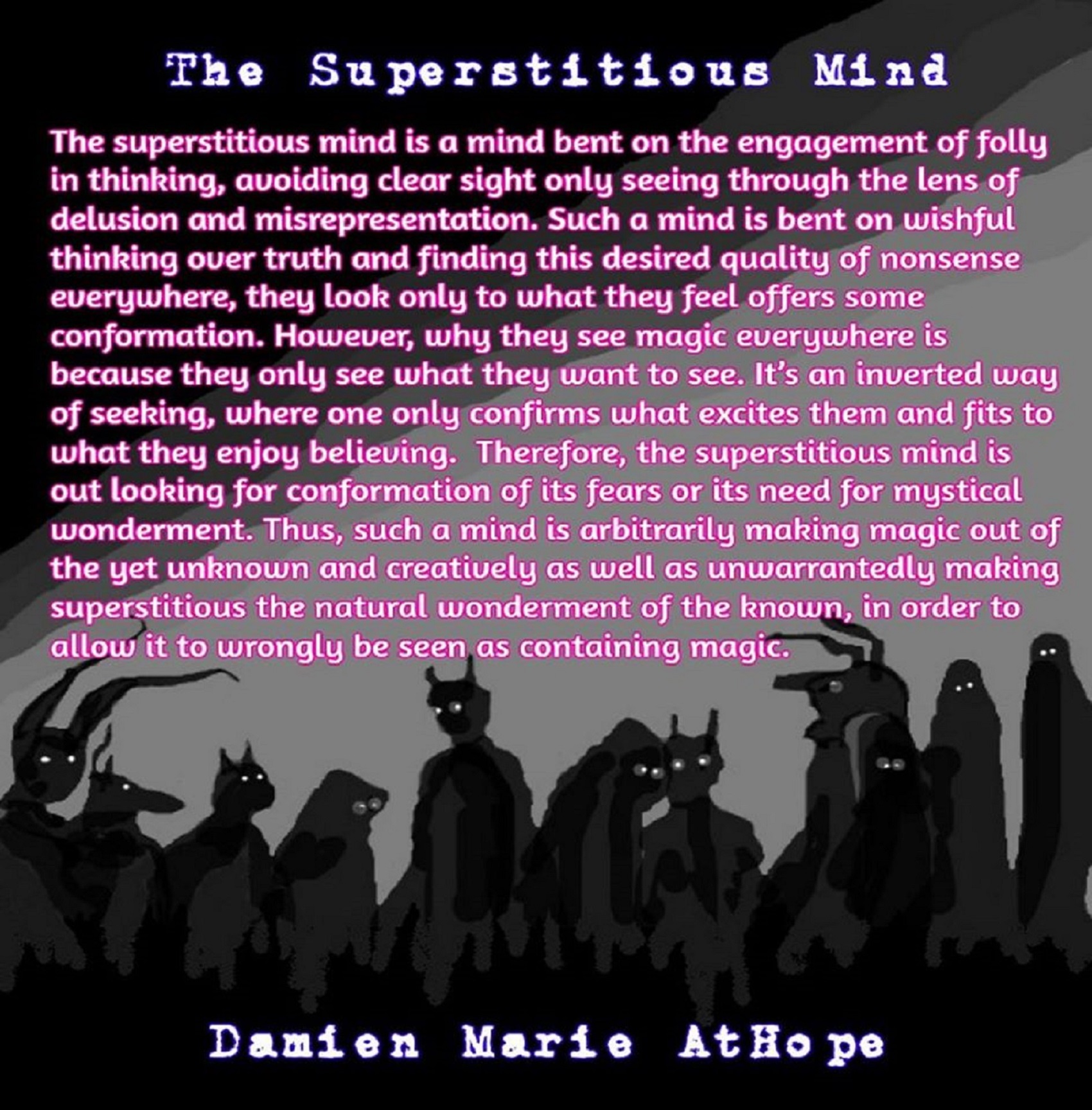
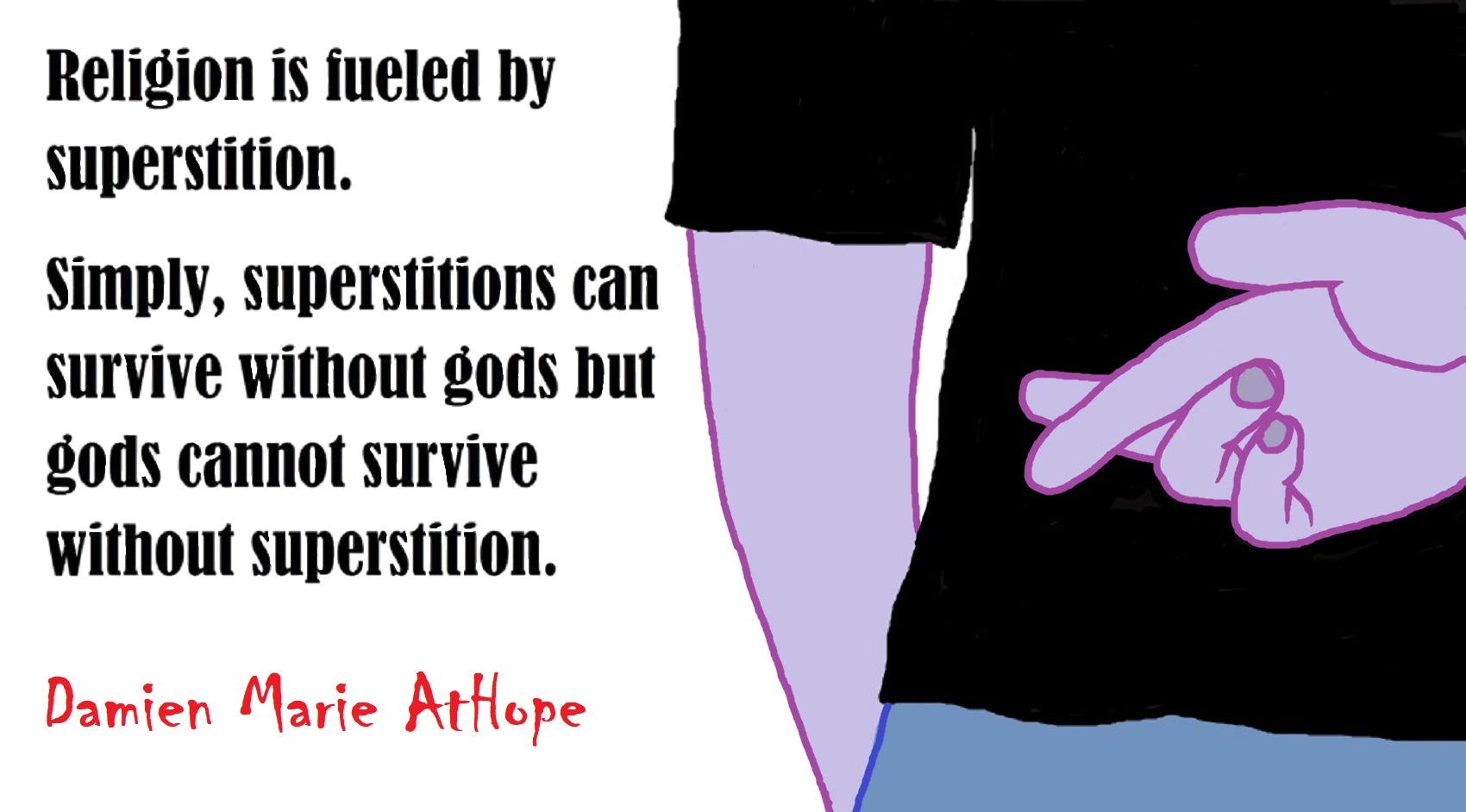


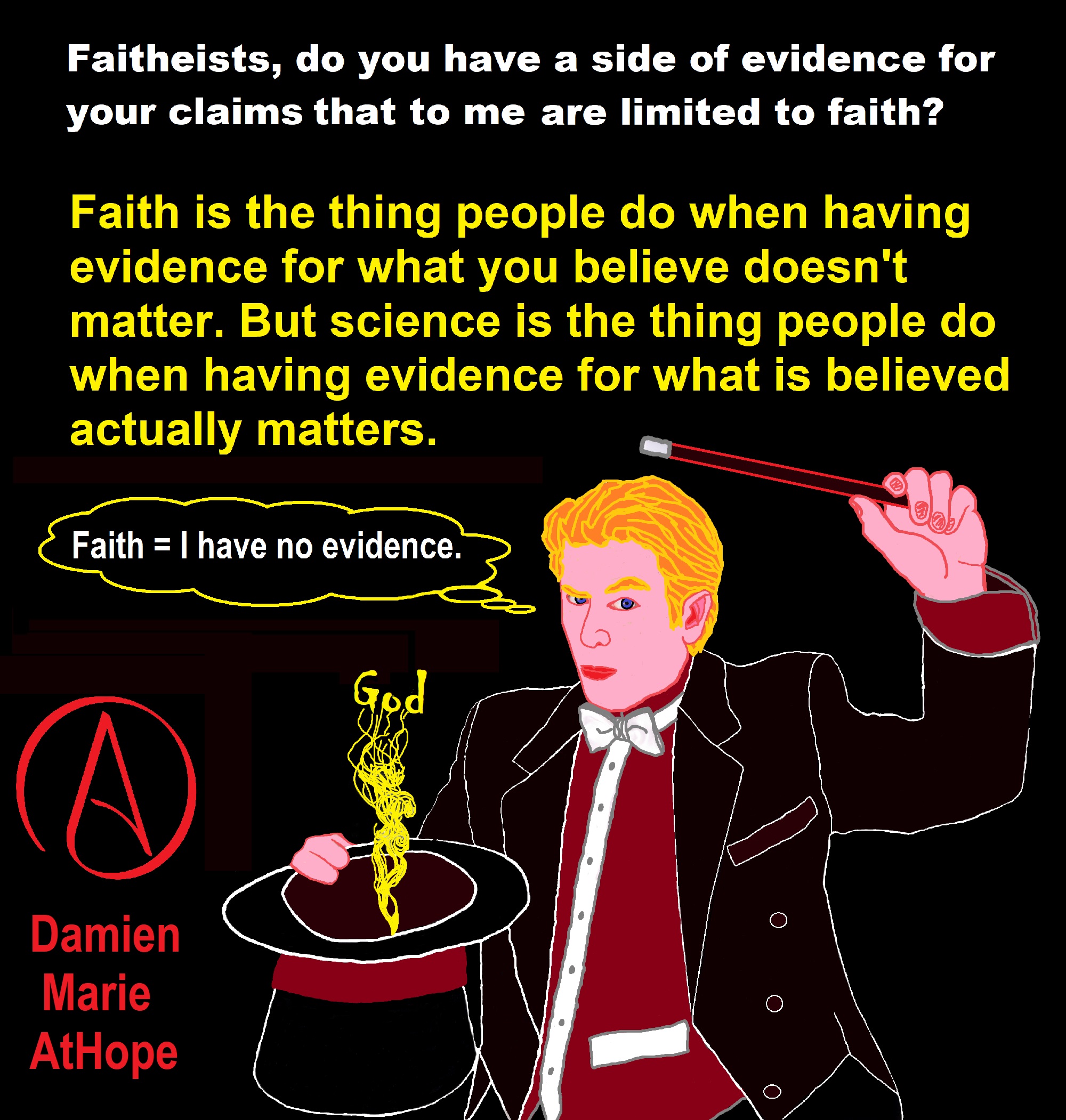
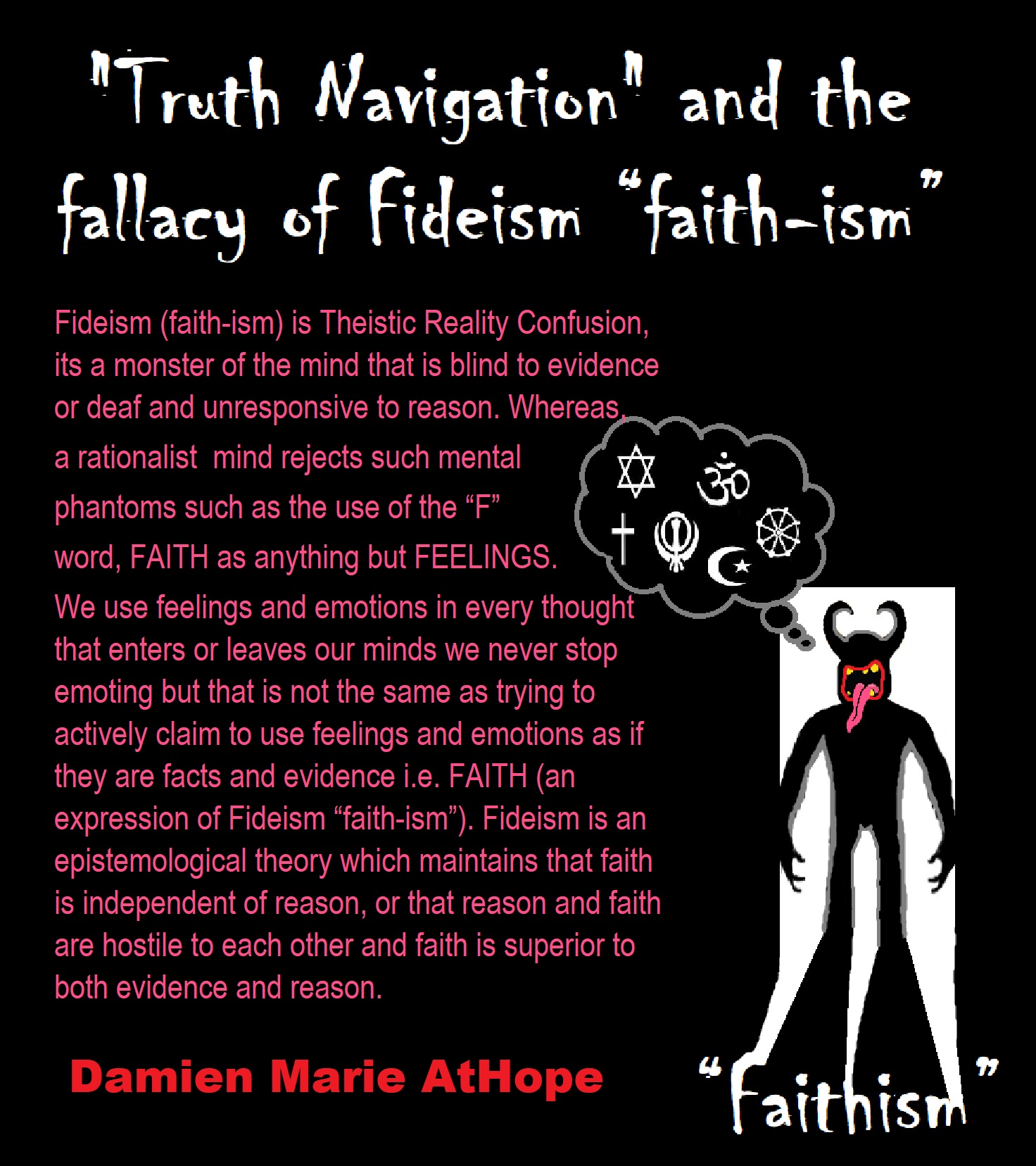

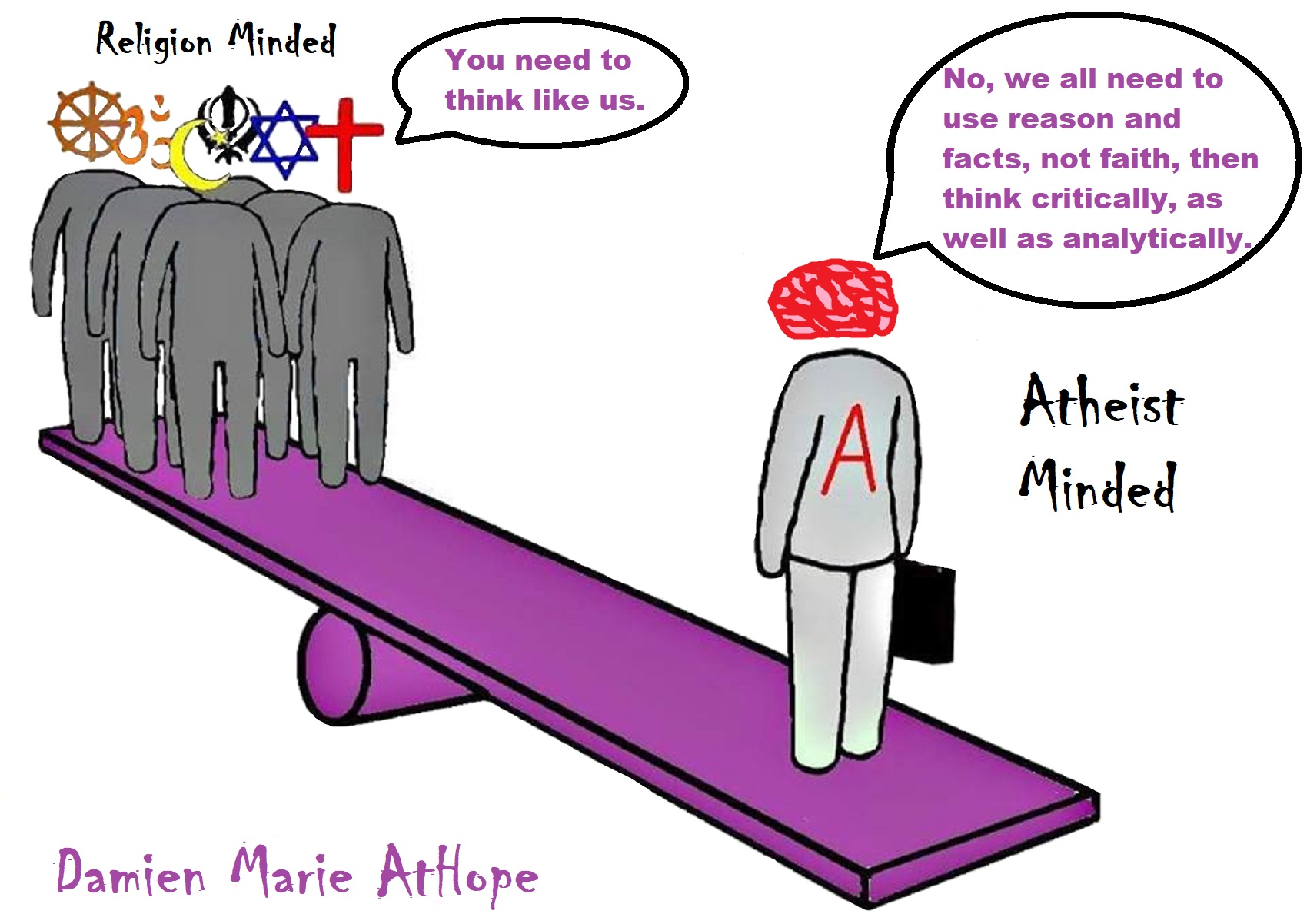
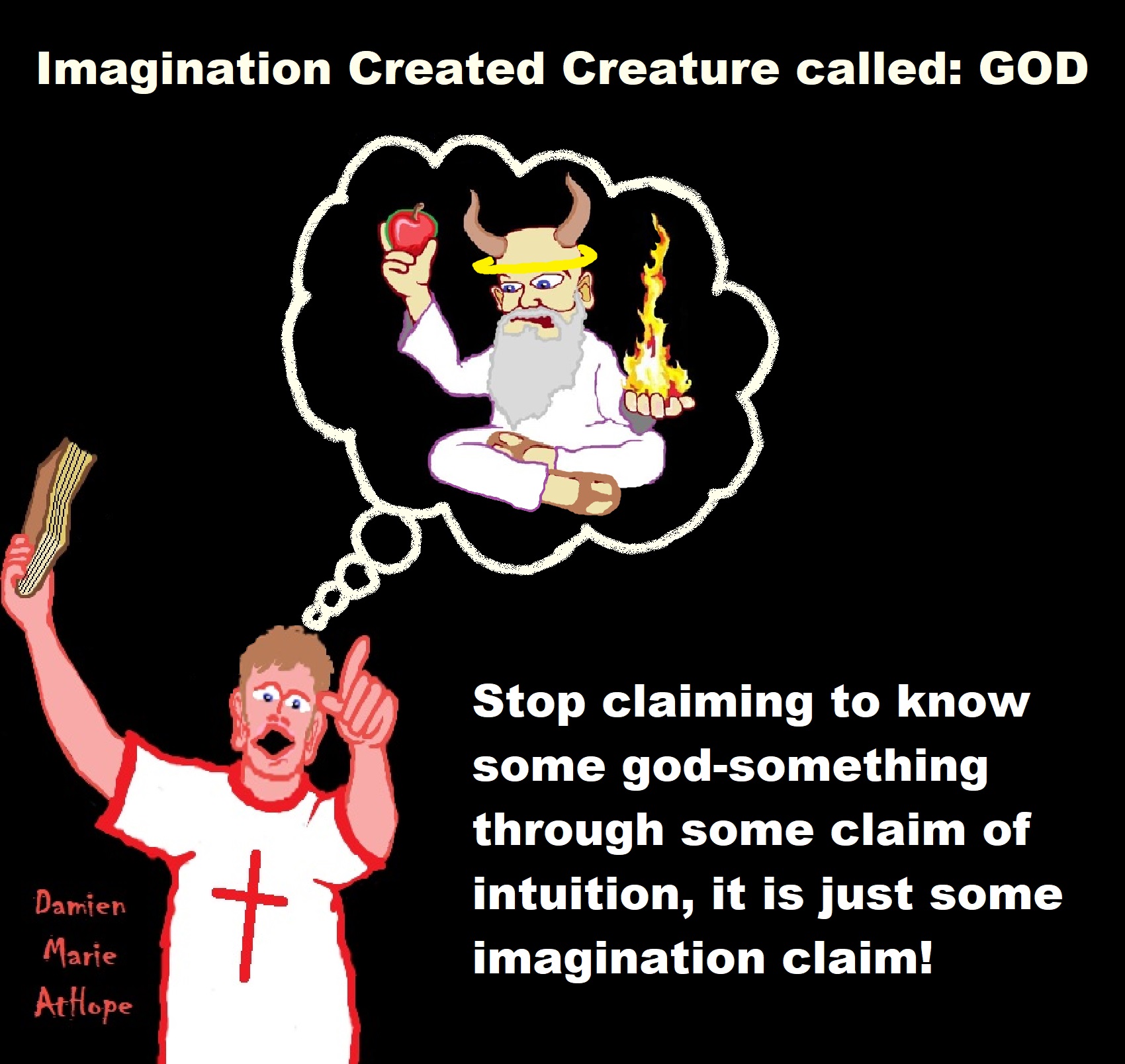
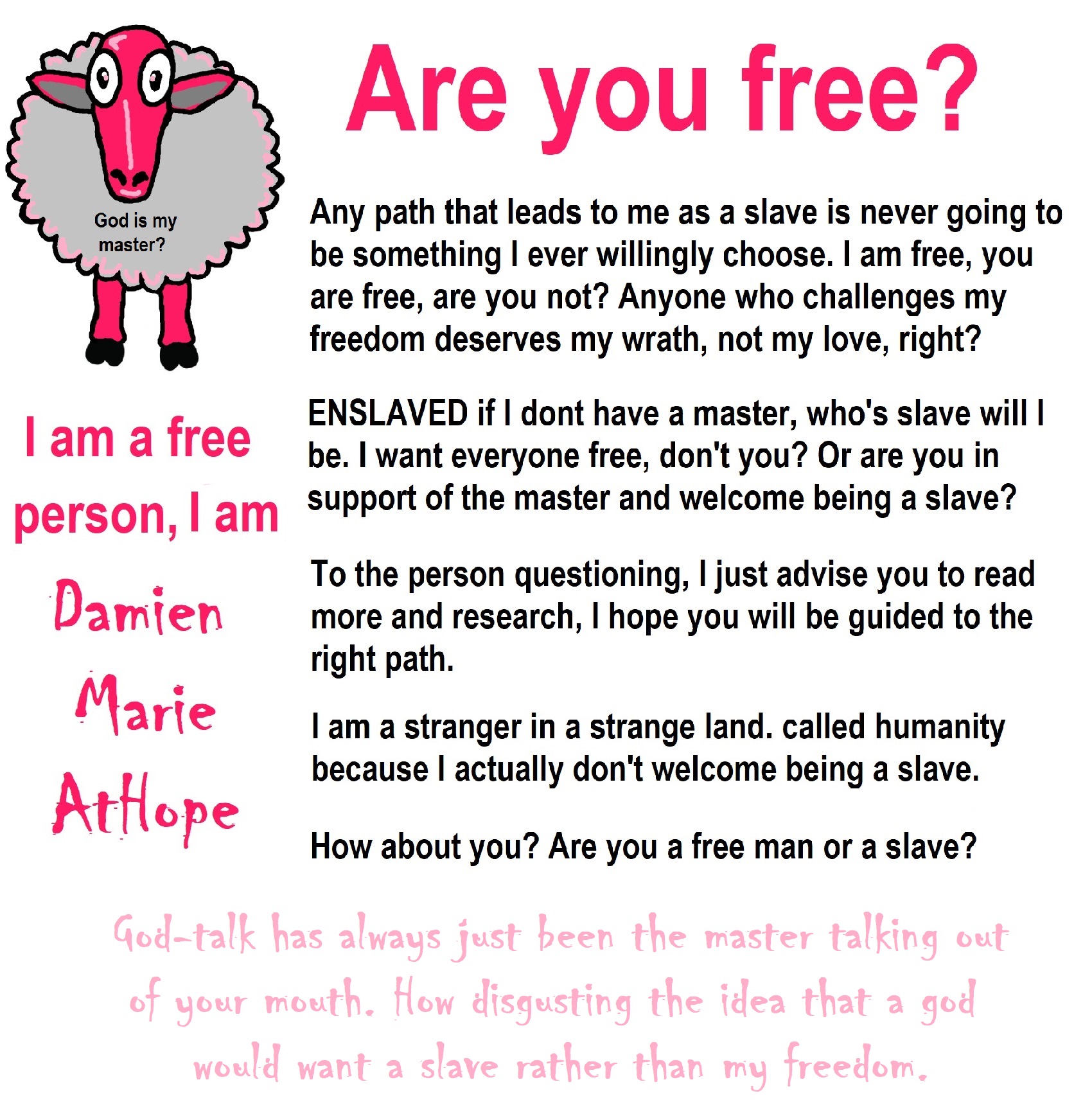
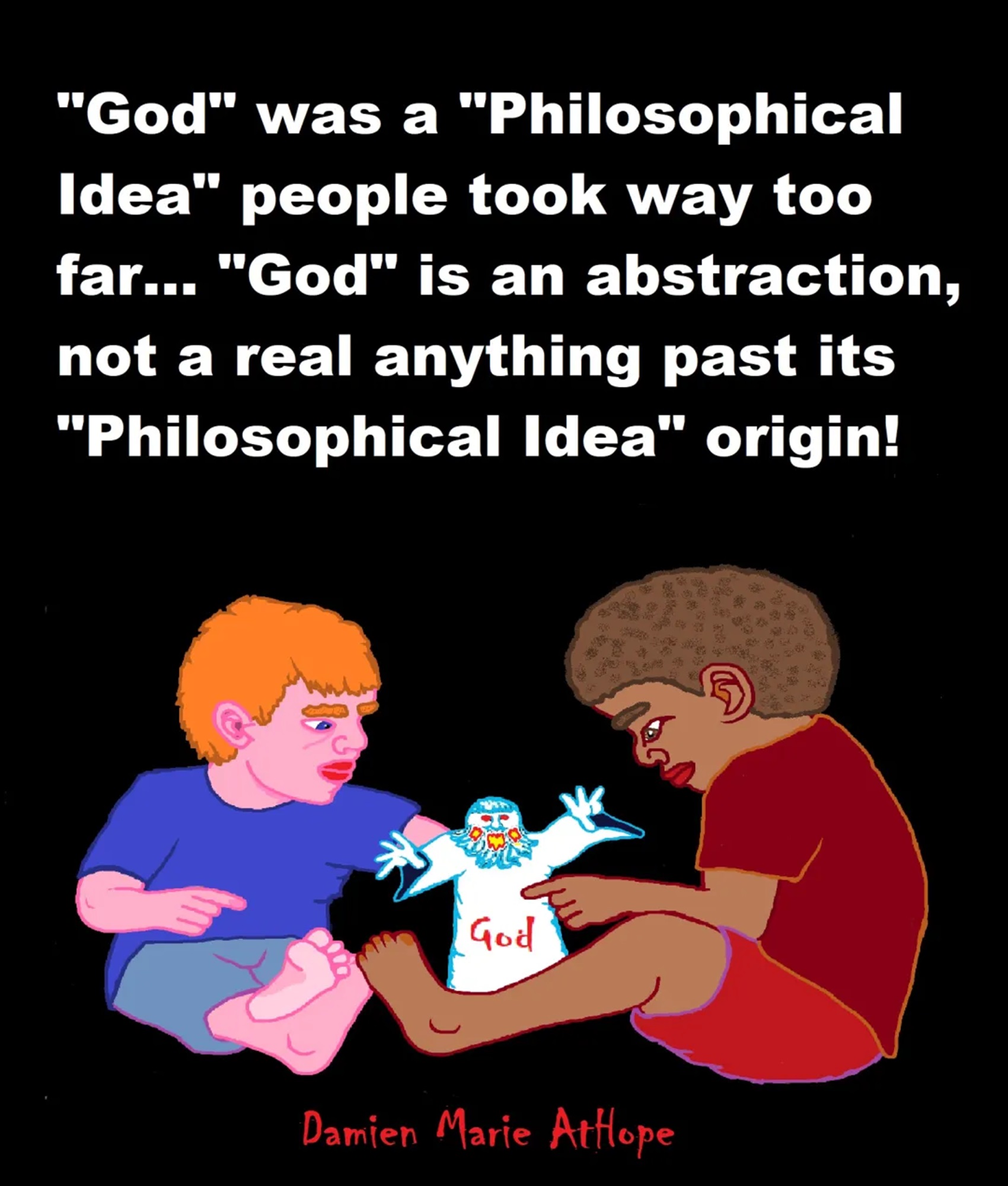
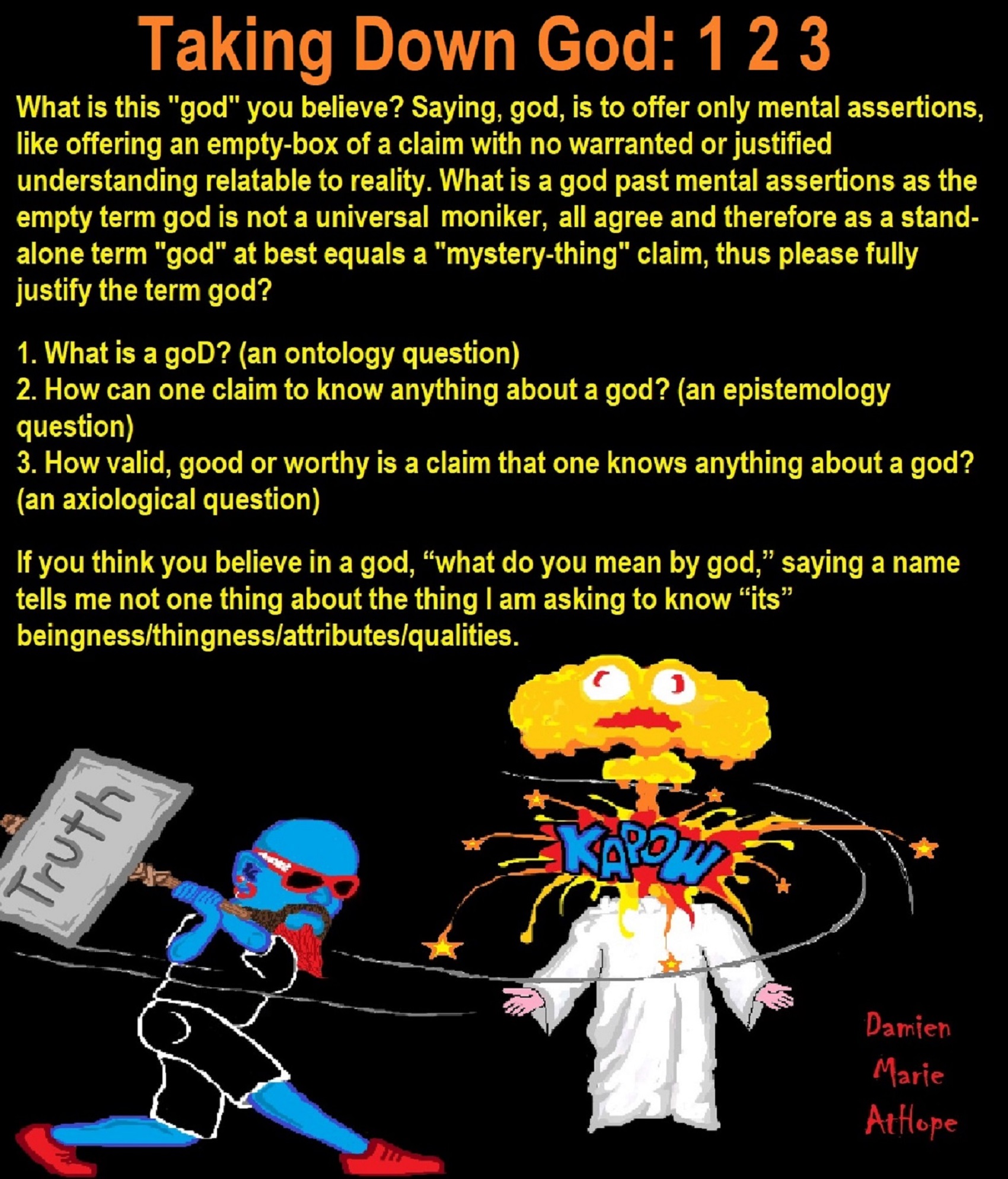
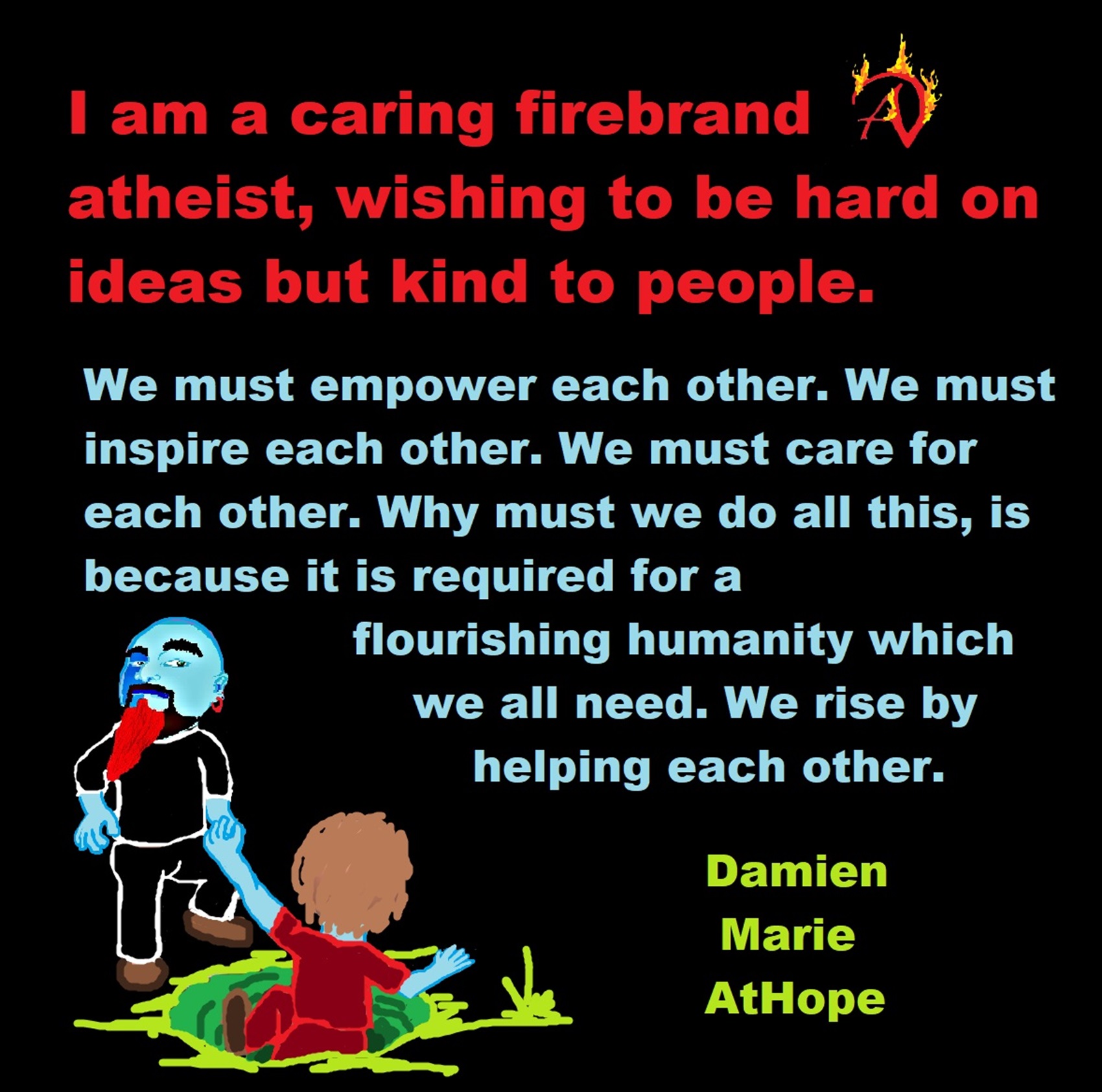
The Beginning origins of Atheistic Doubt at least by around 2,500 years ago.
Good Belief-Etiquette = Disciplined-Rationality (addressing The Ethics of Belief)
Evolution/Origins Of Science at least by 5,500 years ago
Origin of Logics is Naturalistic Observation at least by around 5,000 years ago.
Between 2,570 – 2,270 Years Ago there is a confirmation of atheistic doubting as well as atheistic thinking mainly by Greek philosophers. However, doubting gods is likely as old as the invention of gods which should erode the thinking that belief in god(s) belief is some “default.” The Greek word is apistos (a “not” and pistos “faithful,”) thus not faithful or faithless because one is unpersuaded and unconvinced by God. Short Definition: unbelieving or unbeliever. Likewise, apistia derived from apistos, signifies unbelief.
Ajita Kesakambali (6th Century BC): Ancient Indian philosopher who is the first known proponent of Indian materialism. Ajita Kesakambali argued that: “There is no such thing as alms or sacrifice or offering. There is neither fruit nor result of good or evil deeds…A human being is built up of four elements. When he dies the earthly in him returns and relapses to the earth, the fluid to the water, the heat to the fire, the wind to the air, and his faculties pass into space. The four bearers, on the bier as a fifth, take his dead body away; till they reach the burning ground, men utter forth eulogies, but there his bones are bleached, and his offerings end in ashes. It is a doctrine of fools, this talk of gifts. It is an empty lie, mere idle talk, when men say there is profit herein. Fools and wise alike, on the dissolution of the body, are cut off, annihilated, and after death they are not.” ref Living about the time of the founders of Buddhism and Jainism, Ajita Kesakambali was one of the earliest people in recorded history to deny the existence of gods, spirits, souls, a non-material realm, the afterlife, reincarnation, absolute moral values, and karma. He was a major influence on the Indian school of philosophy known as Carvaka. Though he denied the existence of absolute morals, he does not seem to have abused people or even sought his own pleasure, for he was an ascetic: he chose to be abstinent from “worldly pleasures” like alcohol and sex. We will never know the details of his life and philosophy. He may have been a skilled debater because he was known as “the unconquered.” Also, he seems to have had contempt for his colleagues: Ideas like generosity are the concepts of a stupid person. He who speaks of their existence, his words are empty and confused; a cry of desperation. ref The Charvaka school started to develop around the 7th century BCE, during the time when the culture of world renunciation emerged in India. Buddhist scriptures occasionally mention the Charvaka as part of the wandering religious groups known as sramanas. Before the time of the Charvaka school, there were other materialistic schools in India, but none of them managed to systematize their teachings like the Charvaka did. The Charvaka school was a philosophical movement in India that rejected the traditional religious order by challenging the authority of the Vedas as well as the hegemony the Brahman priests. Contrary to the view that India has always been an entirely religious and spiritual land, the Charvaka school is one of the most irreligious and skeptical systems of thought ever devised. This school is considered part of the heterodox systems (also referred to as heresies) of Indian philosophy, and it is also known as Lokayata, a term which in Sanskrit and Pali means “Naturalist” or “Worldly”. The founder of the Charvaka school is considered to be Brihaspati, who seems to be more of a legendary figure rather than an actual person. The most prominent member of this school during the time of the Buddha was a man named Ajita Kesakambali (Ajita of the Hair Blanket), whose ideas are summarized in a Buddhist Pali text known as Samannaphala Sutta, where he denies the doctrine of transmigration of the soul. The earliest texts of the Charvaka were written around the 6th century BCE, but unfortunately, they have been lost. From what we can piece together, mainly through later works, these thinkers believed in a rigid materialistic perspective in which only things that could be perceived directly were thought to exist. Some of the key principles of this doctrine of materialism were: All things are made of earth, air, fire, and water. That which cannot be perceived does not exist; to exist implies to be perceivable. Heaven and hell are nothing but inventions. The only goal of humans is to enjoy pleasures and avoid pain. Providing a good living for the priests is a sufficient explanation for the practice of religion. The members of this school did not believe in ideas such as the soul, reincarnation, spirits, or gods. Religion, they said, is nothing but a fraud devised by clever men who want to take advantage of others. Soul or consciousness can be explained in natural terms as a side effect of having a healthy body: When the body dies, consciousness simply disappears. No existence other than the physical body exists for the Charvaka. – Ancient History Encyclopedia
Xenophanes who lived around 2,570 to 2,475 years ago is known for composing atheistic critics, and famously stated: “Men create the gods in their own image.” “A Greek pre-Socratic philosopher, poet, and social and religious critic. Knowledge of his views comes from fragments of his poetry, surviving as quotations by later Greek writers. To judge from these, his elegiac and iambic poetry criticized and satirized a wide range of ideas, including Homer and Hesiod, the belief in the pantheon of anthropomorphic gods and the Greeks’ veneration of athleticism. He is the earliest Greek poet who claims explicitly to be writing for future generations, creating “fame that will reach all of Greece, and never die while the Greek kind of songs survives.” Xenophanes’ surviving writings display a skepticism that became more commonly expressed during the fourth century BC.” – Wikipedia
Heraclitus (2,535 – 2,475 years ago): a Greek pre-Socratic philosopher, a native of the Greek city Ephesus, Ionia, on the coast of Anatolia, also known as Asia Minor, or modern Turkey. He was of distinguished parentage. Little is known about his early life and education, but he regarded himself as self-taught and a pioneer of wisdom. From the lonely life he led, and still more from the riddling nature of his philosophy and his contempt for humankind in general, he was called “The Obscure” and the “Weeping Philosopher” Heraclitus was famous for his insistence on ever-present change as being the fundamental essence of the universe, as stated in the famous saying, “No man ever steps in the same river twice” (see panta rhei). This position was complemented by his stark commitment to a unity of opposites in the world, stating that “the path up and down is one and the same”. Through these doctrines, Heraclitus characterized all existing entities by pairs of contrary properties, whereby no entity may ever occupy a single state at a single time. This, along with his cryptic utterance that “all entities come to be in accordance with this Logos” (literally, “word”, “reason”, or “account”) has been the subject of numerous interpretations. – Wikipedia
According to The Story of Civilization book series certain African pygmy tribes from around 2,400 to 2,500 years ago have no identifiable gods, spirits or religious beliefs or rituals and even what burials accrue are without ceremony.
Empedocles (2,490–2,430 years ago): Greek pre-Socratic philosopher and a citizen of Agrigentum, a Greek city in Sicily. Empedocles’ philosophy is best known for being the originator of the cosmogenic theory of the four Classical elements.
Democritus who lived around 2,460 to 2,370 years ago considered to be the “father of modern science” possibly had some disbelief amounting to atheism. “An Ancient Greek pre-Socratic philosopher primarily remembered today for his formulation of an atomic theory of the universe. Largely ignored in ancient Athens, Democritus is said to have been disliked so much by Plato that the latter wished all of his books burned. He was nevertheless well known to his fellow northern-born philosopher Aristotle. It was said that Democritus’s father was from a noble family and so wealthy that he received Xerxes on his march through Abdera. Democritus spent the inheritance which his father left him on travels into distant countries, to satisfy his thirst for knowledge. He traveled to Asia, and was even said to have reached India and Ethiopia. It is known that he wrote on Babylon and Meroe; he visited Egypt, and Diodorus Siculus states that he lived there for five years. He himself declared that among his contemporaries none had made greater journeys, seen more countries, and met more scholars than himself. He particularly mentions the Egyptian mathematicians, whose knowledge he praises. Theophrastus, too, spoke of him as a man who had seen many countries. During his travels, according to Diogenes Laërtius, he became acquainted with the Chaldean magi. “Ostanes“, one of the magi accompanying Xerxes, was also said to have taught him. Most sources say that Democritus followed in the tradition of Leucippus and that they carried on the scientific rationalist philosophy associated with Miletus. Both were thoroughly materialist, believing everything to be the result of natural laws. Unlike Aristotle or Plato, the atomists attempted to explain the world without reasoning as to purpose, prime mover, or final cause.” After returning to his native land he occupied himself with natural philosophy. He traveled throughout Greece to acquire a better knowledge of its cultures. He mentions many Greek philosophers in his writings, and his wealth enabled him to purchase their writings. Leucippus, the founder of atomism, was the greatest influence upon him. He also praises Anaxagoras. Diogenes Laertius says that he was friends with Hippocrates. He may have been acquainted with Socrates, but Plato does not mention him and Democritus himself is quoted as saying, “I came to Athens and no one knew me.” Aristotle placed him among the pre-Socratic natural philosophers. – Wikipedia
Around 2,430 years ago, we know Diagoras of Melos an Ancient Greek poet and sophist known as the Atheist of Milos, who declared that there were no Gods. Or was accused by Greek courts of charges amounting to atheism and fled punishment. Throughout antiquity, he was regarded as an atheist, but very little is known for certain about what he actually believed. All that is known for certain on the point is that Diagoras was offended by the worship of the Athenian national gods. Anecdotes about his life indicate that he spoke out against ancient Greek religion. He allegedly chopped up a wooden statue of Heracles and used it to roast his lentils and revealed the secrets of the Eleusinian Mysteries. The Athenians banished him from their city for his impiety and he died in Corinth.” – Wikipedia
Around 2,399 years ago we know Socrates was accused by Greek courts of charges amounting to atheism of the gods that the city acknowledges thus was sentenced to death. “A classical Greek (Athenian) philosopher credited as one of the founders of Western philosophy, and as being the first moral philosopher, of the Western ethical tradition of thought. An enigmatic figure, he made no writings, and is known chiefly through the accounts of classical writers writing after his lifetime, particularly his students Plato and Xenophon. Other sources include the contemporaneous Antisthenes, Aristippus, and Aeschines of Sphettos. Aristophanes, a playwright, is the only source to have written during his lifetime. Plato’s dialogues are among the most comprehensive accounts of Socrates to survive from antiquity, though it is unclear the degree to which Socrates himself is “hidden behind his ‘best disciple'”. Through his portrayal in Plato’s dialogues, Socrates has become renowned for his contribution to the field of ethics, and it is this Platonic Socrates who lends his name to the concepts of Socratic irony and the Socratic method, or elenchus. As Socrates did not write down any of his teachings, information about him and his philosophies depend upon secondary sources. Furthermore, a close comparison between the contents of these sources reveals contradictions, thus creating concerns about the possibility of knowing in-depth the real Socrates. This issue is known as the Socratic problem, or the Socratic question. To understand Socrates and his thought, one must turn primarily to the works of Plato, whose dialogues are thought the most informative source about Socrates’s life and philosophy, and also Xenophon. These writings are the Sokratikoi logoi, or Socratic dialogues, which consist of reports of conversations apparently involving Socrates. As for discovering the real-life Socrates, the difficulty is that ancient sources are mostly philosophical or dramatic texts, apart from Xenophon. There are no straightforward histories, contemporary with Socrates, that dealt with his own time and place. A corollary of this is that sources that do mention Socrates do not necessarily claim to be historically accurate, and are often partisan. For instance, those who prosecuted and convicted Socrates have left no testament. Historians, therefore, face the challenge of reconciling the various evidence from the extant texts in order to attempt an accurate and consistent account of Socrates’s life and work. The result of such an effort is not necessarily realistic, even if consistent. – Wikipedia
Epicurus who lived around 2,341 to 2,270 years ago is known for composing atheistic critics, and famously stated “Is God willing to prevent evil, but not able? Then he is not omnipotent. Is he able, but not willing? Then he is malevolent. Is he both able and willing? Then whence cometh evil? Is he neither able nor willing? Then why call him god?” “An ancient Greek philosopher who founded a school of philosophy now called Epicureanism. Only a few fragments and letters of Epicurus’s 300 written works remain. Much of what is known about Epicurean philosophy derives from later followers and commentators. For Epicurus, the purpose of philosophy was to attain the happy, tranquil life, characterized by ataraxia—peace and freedom from fear—and aponia—the absence of pain—and by living a self-sufficient life surrounded by friends. He taught that the root of all human neurosis was death denial, and the tendency for human beings to assume that death will be horrific and painful, which he claimed causes unnecessary anxiety, selfish self-protective behaviors, and hypocrisy. According to Epicurus, death is the end of both the body and the soul and therefore should not be feared. He also taught that the gods neither reward nor punish humans; that the universe is infinite and eternal; and that occurrences in the natural world are ultimately the result of atoms moving and interacting in empty space.” – Wikipedia
References: 1, 2, 3, 4, 5, 6, 7
I am a caring firebrand atheist, wishing to be hard on ideas but kind to people.
Ignostic Atheist: Do you Have a Coherent Definition of god?
I am an Out Atheist, Antitheist, and Antireligionist as a Valuized Ethical Duty.
How can we silently watch as yet another generation is indoctrinated with religious faith, fear, and foolishness? Religion and it’s god myths are like a spiritually transmitted disease of the mind. This infection even once cured holds mental disruption which can linger on for a lifetime. What proof is “faith,” of anything religion claims by faith, as many people have different faith even in the same religion? When you start thinking your “out, atheism, antitheism or antireligionism is not vitally needed just remember all the millions of children being indoctrinated and need our help badly and who desperately need our help with the truth. Three things are common in all religions: “pseudo-science,” “pseudo-history,” and “pseudo-morality.” And my biggest thing of all is the widespread forced indoctrination of children, violating their free choice of what to not believe or believe, I hate forced hereditary religion.
If you are a religious believer, may I remind you that faith in the acquisition of knowledge is not a valid method worth believing in. Because, what proof is “faith”, of anything religion claims by faith, as many people have different faith even in the same religion?

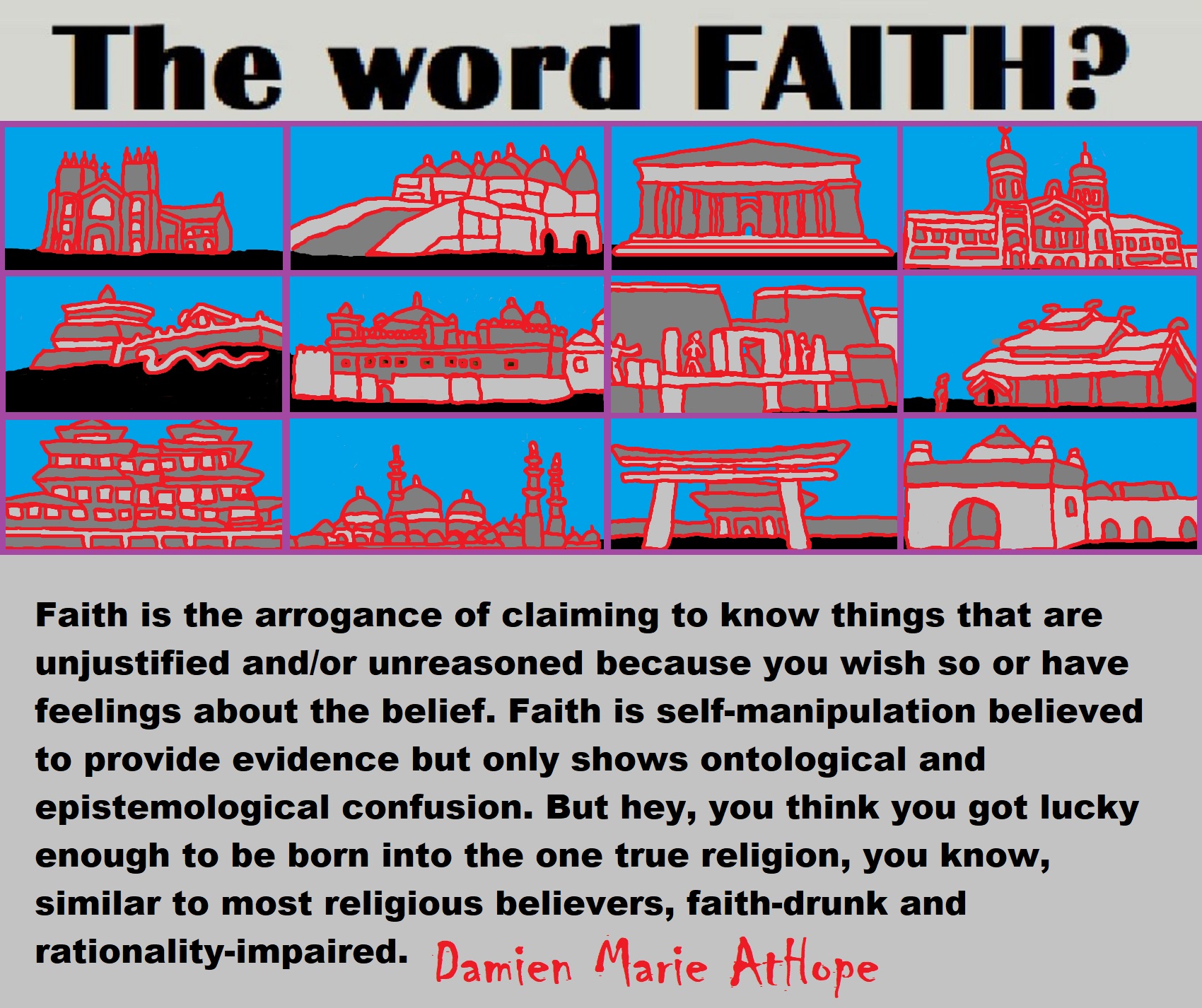

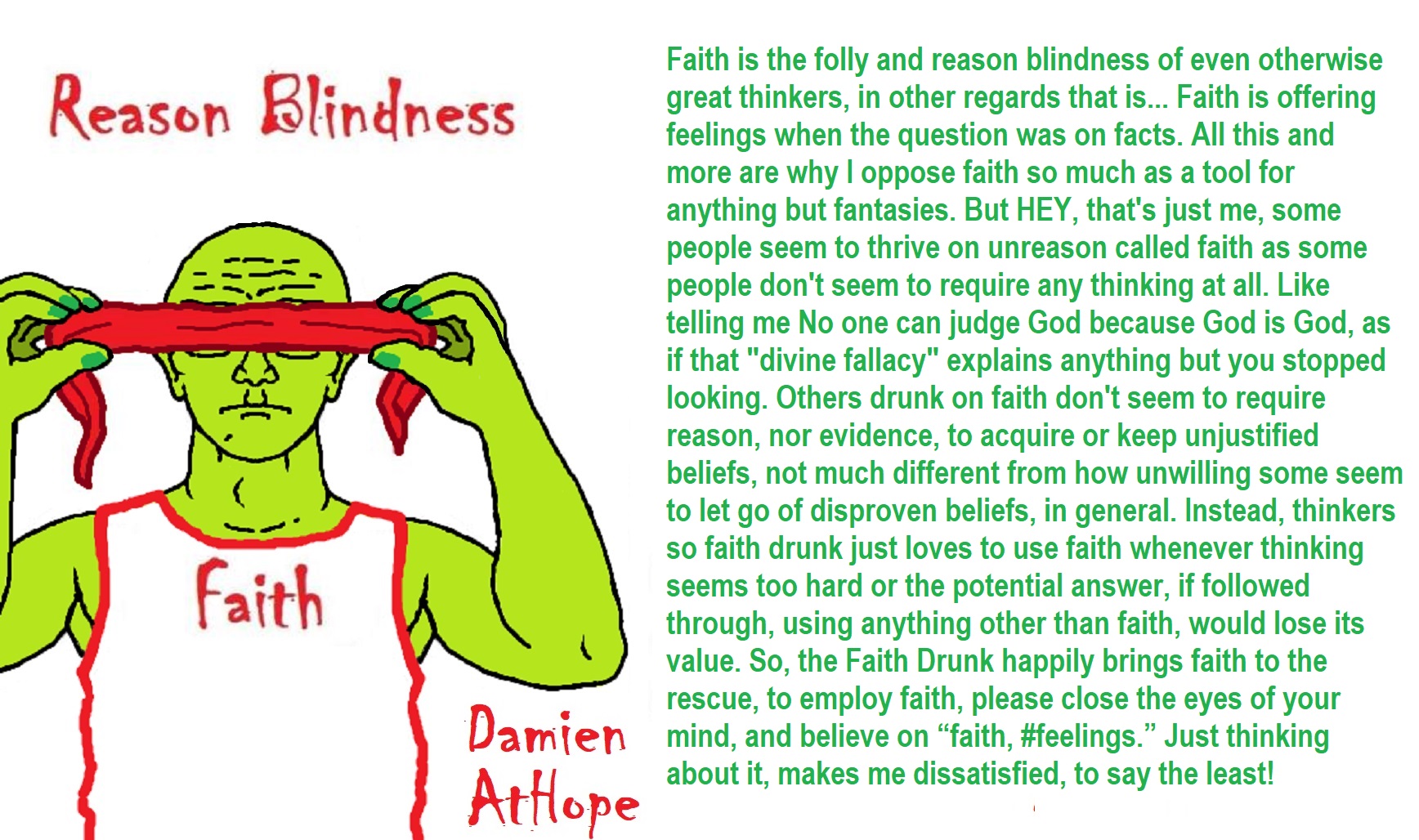
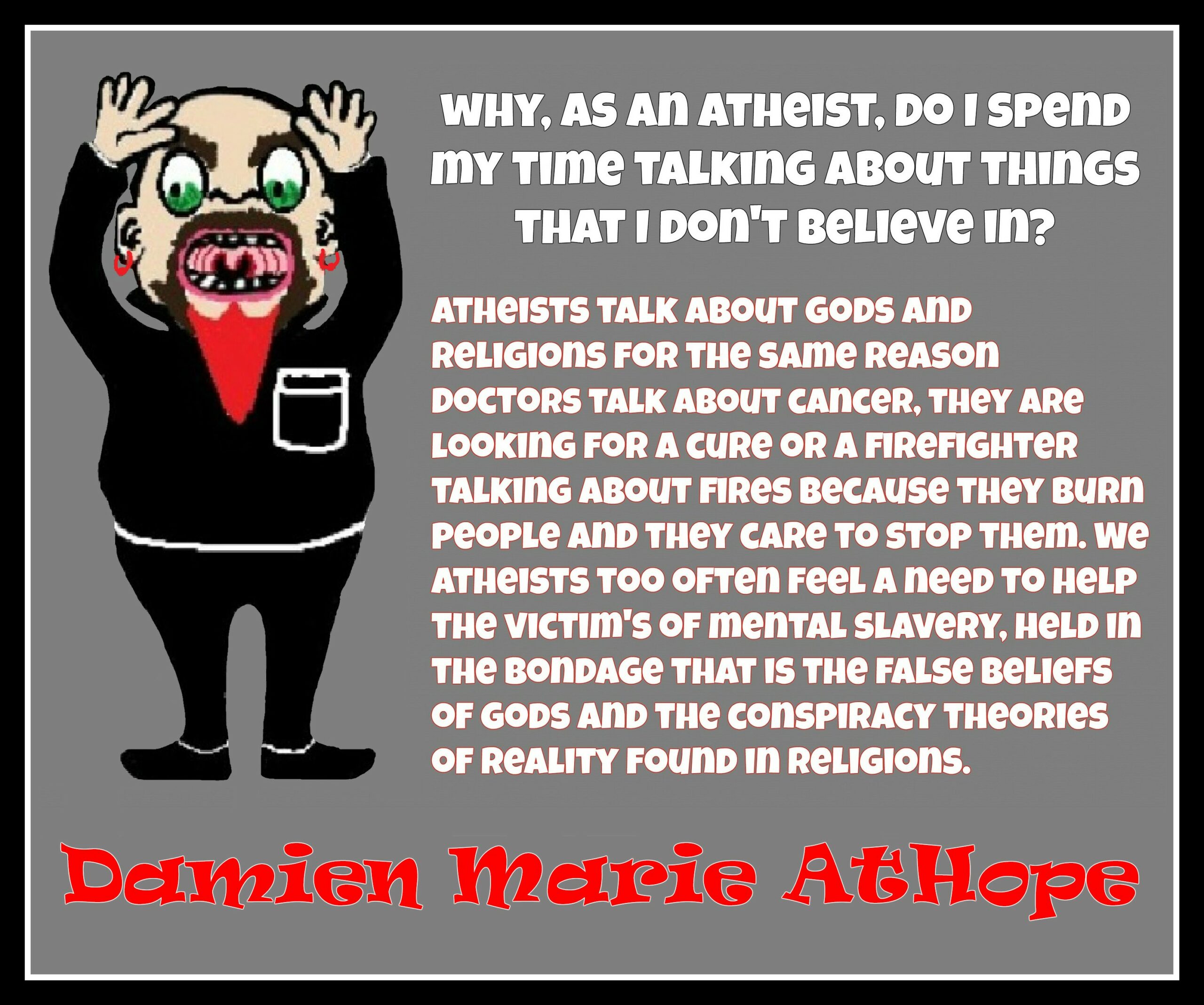
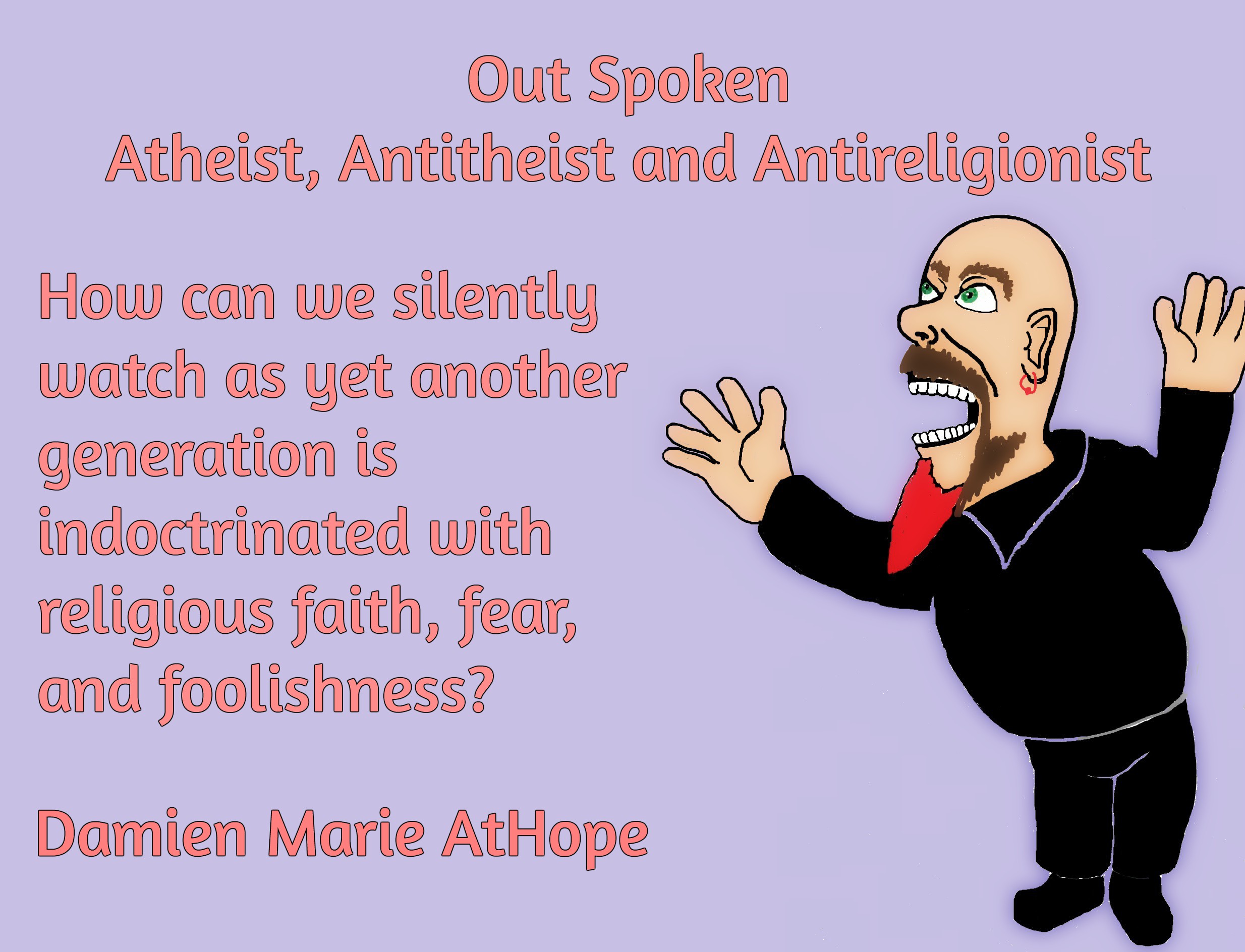
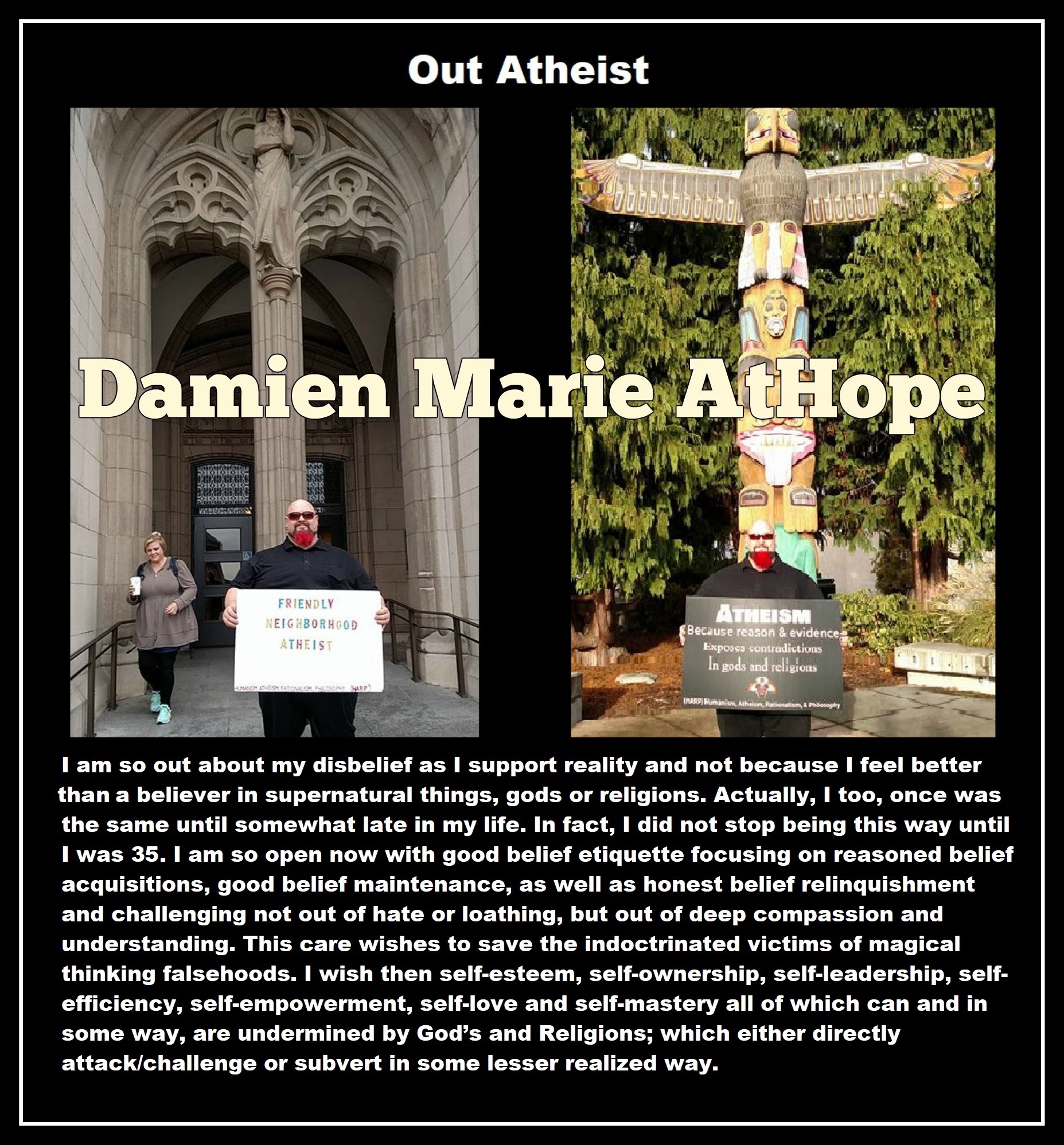
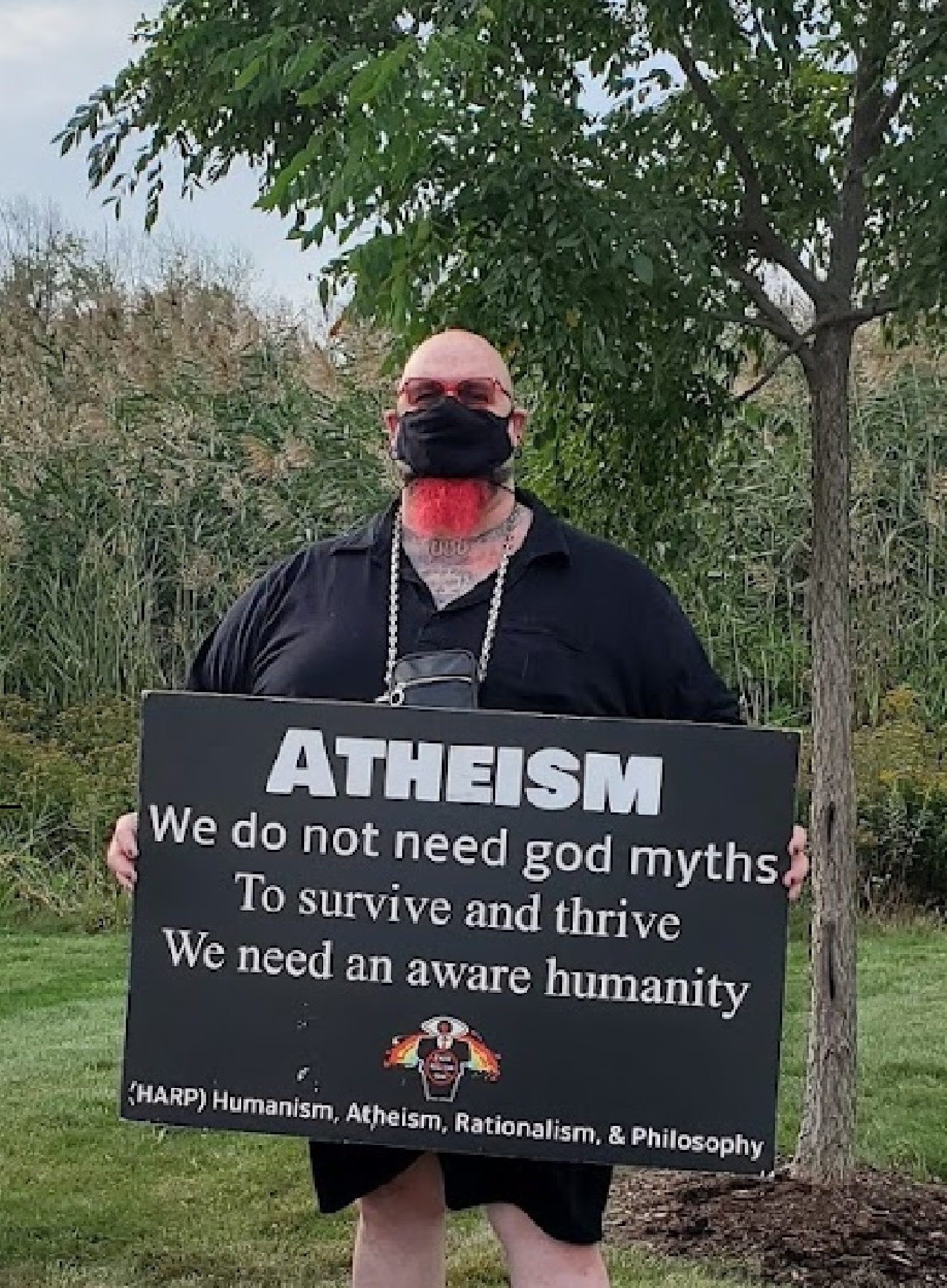

People don’t commonly teach religious history, even that of their own claimed religion. No, rather they teach a limited “pro their religion” history of their religion from a religious perspective favorable to the religion of choice.

Do you truly think “Religious Belief” is only a matter of some personal choice?
Do you not see how coercive one’s world of choice is limited to the obvious hereditary belief, in most religious choices available to the child of religious parents or caregivers? Religion is more commonly like a family, culture, society, etc. available belief that limits the belief choices of the child and that is when “Religious Belief” is not only a matter of some personal choice and when it becomes hereditary faith, not because of the quality of its alleged facts or proposed truths but because everyone else important to the child believes similarly so they do as well simply mimicking authority beliefs handed to them. Because children are raised in religion rather than being presented all possible choices but rather one limited dogmatic brand of “Religious Belief” where children only have a choice of following the belief as instructed, and then personally claim the faith hereditary belief seen in the confirming to the belief they have held themselves all their lives. This is obvious in statements asked and answered by children claiming a faith they barely understand but they do understand that their family believes “this or that” faith, so they feel obligated to believe it too. While I do agree that “Religious Belief” should only be a matter of some personal choice, it rarely is… End Hereditary Religion!

Animism: Respecting the Living World by Graham Harvey
“How have human cultures engaged with and thought about animals, plants, rocks, clouds, and other elements in their natural surroundings? Do animals and other natural objects have a spirit or soul? What is their relationship to humans? In this new study, Graham Harvey explores current and past animistic beliefs and practices of Native Americans, Maori, Aboriginal Australians, and eco-pagans. He considers the varieties of animism found in these cultures as well as their shared desire to live respectfully within larger natural communities. Drawing on his extensive casework, Harvey also considers the linguistic, performative, ecological, and activist implications of these different animisms.” ref

We are like believing machines we vacuum up ideas, like Velcro sticks to almost everything. We accumulate beliefs that we allow to negatively influence our lives, often without realizing it. Our willingness must be to alter skewed beliefs that impend our balance or reason, which allows us to achieve new positive thinking and accurate outcomes.

My thoughts on Religion Evolution with external links for more info:
- (Pre-Animism Africa mainly, but also Europe, and Asia at least 300,000 years ago), (Pre-Animism – Oxford Dictionaries)
- (Animism Africa around 100,000 years ago), (Animism – Britannica.com)
- (Totemism Europe around 50,000 years ago), (Totemism – Anthropology)
- (Shamanism Siberia around 30,000 years ago), (Shamanism – Britannica.com)
- (Paganism Turkey around 12,000 years ago), (Paganism – BBC Religion)
- (Progressed Organized Religion “Institutional Religion” Egypt around 5,000 years ago), (Ancient Egyptian Religion – Britannica.com)
- (CURRENT “World” RELIGIONS after 4,000 years ago) (Origin of Major Religions – Sacred Texts)
- (Early Atheistic Doubting at least by 2,600 years ago) (History of Atheism – Wikipedia)
“Religion is an Evolved Product” and Yes, Religion is Like Fear Given Wings…
Atheists talk about gods and religions for the same reason doctors talk about cancer, they are looking for a cure, or a firefighter talks about fires because they burn people and they care to stop them. We atheists too often feel a need to help the victims of mental slavery, held in the bondage that is the false beliefs of gods and the conspiracy theories of reality found in religions.
Understanding Religion Evolution:
- Pre-Animism (at least 300,000 years ago)
- Animism (Africa: 100,000 years ago)
- Totemism (Europe: 50,000 years ago)
- Shamanism (Siberia: 30,000 years ago)
- Paganism (Turkey: 12,000 years ago)
- Progressed organized religion (Egypt: 5,000 years ago), (Egypt, the First Dynasty 5,150 years ago)
- CURRENT “World” RELIGIONS (after 4,000 years ago)
- Early Atheistic Doubting (at least by 2,600 years ago)
“An Archaeological/Anthropological Understanding of Religion Evolution”
It seems ancient peoples had to survived amazing threats in a “dangerous universe (by superstition perceived as good and evil),” and human “immorality or imperfection of the soul” which was thought to affect the still living, leading to ancestor worship. This ancestor worship presumably led to the belief in supernatural beings, and then some of these were turned into the belief in gods. This feeble myth called gods were just a human conceived “made from nothing into something over and over, changing, again and again, taking on more as they evolve, all the while they are thought to be special,” but it is just supernatural animistic spirit-belief perceived as sacred.
Quick Evolution of Religion?
Pre-Animism (at least 300,000 years ago) pre-religion is a beginning that evolves into later Animism. So, Religion as we think of it, to me, all starts in a general way with Animism (Africa: 100,000 years ago) (theoretical belief in supernatural powers/spirits), then this is physically expressed in or with Totemism (Europe: 50,000 years ago) (theoretical belief in mythical relationship with powers/spirits through a totem item), which then enlists a full-time specific person to do this worship and believed interacting Shamanism (Siberia/Russia: 30,000 years ago) (theoretical belief in access and influence with spirits through ritual), and then there is the further employment of myths and gods added to all the above giving you Paganism (Turkey: 12,000 years ago) (often a lot more nature-based than most current top world religions, thus hinting to their close link to more ancient religious thinking it stems from). My hypothesis is expressed with an explanation of the building of a theatrical house (modern religions development). Progressed organized religion (Egypt: 5,000 years ago) with CURRENT “World” RELIGIONS (after 4,000 years ago).
Historically, in large city-state societies (such as Egypt or Iraq) starting around 5,000 years ago culminated to make religion something kind of new, a sociocultural-governmental-religious monarchy, where all or at least many of the people of such large city-state societies seem familiar with and committed to the existence of “religion” as the integrated life identity package of control dynamics with a fixed closed magical doctrine, but this juggernaut integrated religion identity package of Dogmatic-Propaganda certainly did not exist or if developed to an extent it was highly limited in most smaller prehistoric societies as they seem to lack most of the strong control dynamics with a fixed closed magical doctrine (magical beliefs could be at times be added or removed). Many people just want to see developed religious dynamics everywhere even if it is not. Instead, all that is found is largely fragments until the domestication of religion.
Religions, as we think of them today, are a new fad, even if they go back to around 6,000 years in the timeline of human existence, this amounts to almost nothing when seen in the long slow evolution of religion at least around 70,000 years ago with one of the oldest ritual worship. Stone Snake of South Africa: “first human worship” 70,000 years ago. This message of how religion and gods among them are clearly a man-made thing that was developed slowly as it was invented and then implemented peace by peace discrediting them all. Which seems to be a simple point some are just not grasping how devastating to any claims of truth when we can see the lie clearly in the archeological sites.
I wish people fought as hard for the actual values as they fight for the group/clan names political or otherwise they think support values. Every amount spent on war is theft to children in need of food or the homeless kept from shelter.
Here are several of my blog posts on history:
- To Find Truth You Must First Look
- (Magdalenian/Iberomaurusian) Connections to the First Paganists of the early Neolithic Near East Dating from around 17,000 to 12,000 Years Ago
- Natufians: an Ancient People at the Origins of Agriculture and Sedentary Life
- Possible Clan Leader/Special “MALE” Ancestor Totem Poles At Least 13,500 years ago?
- Jewish People with DNA at least 13,200 years old, Judaism, and the Origins of Some of its Ideas
- Baltic Reindeer Hunters: Swiderian, Lyngby, Ahrensburgian, and Krasnosillya cultures 12,020 to 11,020 years ago are evidence of powerful migratory waves during the last 13,000 years and a genetic link to Saami and the Finno-Ugric peoples.
- The Rise of Inequality: patriarchy and state hierarchy inequality
- Fertile Crescent 12,500 – 9,500 Years Ago: fertility and death cult belief system?
- 12,400 – 11,700 Years Ago – Kortik Tepe (Turkey) Pre/early-Agriculture Cultic Ritualism
- Ritualistic Bird Symbolism at Gobekli Tepe and its “Ancestor Cult”
- Male-Homosexual (female-like) / Trans-woman (female) Seated Figurine from Gobekli Tepe
- Could a 12,000-year-old Bull Geoglyph at Göbekli Tepe relate to older Bull and Female Art 25,000 years ago and Later Goddess and the Bull cults like Catal Huyuk?
- Sedentism and the Creation of goddesses around 12,000 years ago as well as male gods after 7,000 years ago.
- Alcohol, where Agriculture and Religion Become one? Such as Gobekli Tepe’s Ritualistic use of Grain as Food and Ritual Drink
- Neolithic Ritual Sites with T-Pillars and other Cultic Pillars
- Paganism: Goddesses around 12,000 years ago then Male Gods after 7,000 years ago
- First Patriarchy: Split of Women’s Status around 12,000 years ago & First Hierarchy: fall of Women’s Status around 5,000 years ago.
- Natufians: an Ancient People at the Origins of Agriculture and Sedentary Life
- J DNA and the Spread of Agricultural Religion (paganism)
- Paganism: an approximately 12,000-year-old belief system
- Paganism 12,000 years old: related to “Anarchism and Socialism” (Pre-Capitalism)
- Shaman burial in Israel 12,000 years ago and the Shamanism Phenomena
- Need to Mythicized: gods and goddesses
- 12,000 – 7,000 Years Ago – Paleo-Indian Culture (The Americas)
- 12,000 – 2,000 Years Ago – Indigenous-Scandinavians (Nordic)
- Norse did not wear helmets with horns?
- Pre-Pottery Neolithic Skull Cult around 11,500 to 8,400 Years Ago?
- 10,400 – 10,100 Years Ago, in Turkey the Nevail Cori Religious Settlement
- 9,000-6,500 Years Old Submerged Pre-Pottery/Pottery Neolithic Ritual Settlements off Israel’s Coast
- Catal Huyuk “first religious designed city” around 9,500 to 7,700 years ago (Turkey)
- Cultic Hunting at Catal Huyuk “first religious designed city”
- Special Items and Art as well as Special Elite Burials at Catal Huyuk
- New Rituals and Violence with the appearance of Pottery and People?
- Haplogroup N and its related Uralic Languages and Cultures
- Ainu people, Sámi people, Native Americans, the Ancient North Eurasians, and Paganistic-Shamanism with Totemism
- Ideas, Technology and People from Turkey, Europe, to China and Back again 9,000 to 5,000 years ago?
- First Pottery of Europe and the Related Cultures
- 9,000 years old Neolithic Artifacts Judean Desert and Hills Israel
- 9,000-7,000 years-old Sex and Death Rituals: Cult Sites in Israel, Jordan, and the Sinai
- 9,000-8500 year old Horned Female shaman Bad Dürrenberg Germany
- Neolithic Jewelry and the Spread of Farming in Europe Emerging out of West Turkey
- 8,600-year-old Tortoise Shells in Neolithic graves in central China have Early Writing and Shamanism
- Swing of the Mace: the rise of Elite, Forced Authority, and Inequality begin to Emerge 8,500 years ago?
- Migrations and Changing Europeans Beginning around 8,000 Years Ago
- My “Steppe-Anatolian-Kurgan hypothesis” 8,000/7,000 years ago
- Around 8,000-year-old Shared Idea of the Mistress of Animals, “Ritual” Motif
- Pre-Columbian Red-Paint (red ochre) Maritime Archaic Culture 8,000-3,000 years ago
- 7,522-6,522 years ago Linear Pottery culture which I think relates to Arcane Capitalism’s origins
- Arcane Capitalism: Primitive socialism, Primitive capital, Private ownership, Means of production, Market capitalism, Class discrimination, and Petite bourgeoisie (smaller capitalists)
- 7,500-4,750 years old Ritualistic Cucuteni-Trypillian culture of Moldova, Romania, and Ukraine
- Roots of a changing early society 7,200-6,700 years ago Jordan and Israel
- Agriculture religion (Paganism) with farming reached Britain between about 7,000 to 6,500 or so years ago and seemingly expressed in things like Western Europe’s Long Barrows
- My Thoughts on Possible Migrations of “R” DNA and Proto-Indo-European?
- “Millet” Spreading from China 7,022 years ago to Europe and related Language may have Spread with it leading to Proto-Indo-European
- Proto-Indo-European (PIE), ancestor of Indo-European languages: DNA, Society, Language, and Mythology
- The Dnieper–Donets culture and Asian varieties of Millet from China to the Black Sea region of Europe by 7,022 years ago
- Kurgan 6,000 years ago/dolmens 7,000 years ago: funeral, ritual, and other?
- 7,020 to 6,020-year-old Proto-Indo-European Homeland of Urheimat or proposed home of their Language and Religion
- Ancient Megaliths: Kurgan, Ziggurat, Pyramid, Menhir, Trilithon, Dolman, Kromlech, and Kromlech of Trilithons
- The Mytheme of Ancient North Eurasian Sacred-Dog belief and similar motifs are found in Indo-European, Native American, and Siberian comparative mythology
- Elite Power Accumulation: Ancient Trade, Tokens, Writing, Wealth, Merchants, and Priest-Kings
- Sacred Mounds, Mountains, Kurgans, and Pyramids may hold deep connections?
- Between 7,000-5,000 Years ago, rise of unequal hierarchy elite, leading to a “birth of the State” or worship of power, strong new sexism, oppression of non-elites, and the fall of Women’s equal status
- Paganism 7,000-5,000 years old: related to “Anarchism and Socialism” (Capitalism) (World War 0) Elite & their slaves
- Hell and Underworld mythologies starting maybe as far back as 7,000 to 5,000 years ago with the Proto-Indo-Europeans?
- The First Expression of the Male God around 7,000 years ago?
- White (light complexion skin) Bigotry and Sexism started 7,000 years ago?
- Around 7,000-year-old Shared Idea of the Divine Bird (Tutelary and/or Trickster spirit/deity), “Ritual” Motif
- Nekhbet an Ancient Egyptian Vulture Goddess and Tutelary Deity
- 6,720 to 4,920 years old Ritualistic Hongshan Culture of Inner Mongolia with 5,000-year-old Pyramid Mounds and Temples
- First proto-king in the Balkans, Varna culture around 6,500 years ago?
- 6,500–5,800 years ago in Israel Late Chalcolithic (Copper Age) Period in the Southern Levant Seems to Express Northern Levant Migrations, Cultural and Religious Transfer
- KING OF BEASTS: Master of Animals “Ritual” Motif, around 6,000 years old or older…
- Around 6000-year-old Shared Idea of the Solid Wheel & the Spoked Wheel-Shaped Ritual Motif
- “The Ghassulian Star,” a mysterious 6,000-year-old mural from Jordan; a Proto-Star of Ishtar, Star of Inanna or Star of Venus?
- Religious/Ritual Ideas, including goddesses and gods as well as ritual mounds or pyramids from Northeastern Asia at least 6,000 years old, seemingly filtering to Iran, Iraq, the Mediterranean, Europe, Egypt, and the Americas?
- Maykop (5,720–5,020 years ago) Caucasus region Bronze Age culture-related to Copper Age farmers from the south, influenced by the Ubaid period and Leyla-Tepe culture, as well as influencing the Kura-Araxes culture
- 5-600-year-old Tomb, Mummy, and First Bearded Male Figurine in a Grave
- Kura-Araxes Cultural 5,520 to 4,470 years old DNA traces to the Canaanites, Arabs, and Jews
- Minoan/Cretan (Keftiu) Civilization and Religion around 5,520 to 3,120 years ago
- Evolution Of Science at least by 5,500 years ago
- 5,500 Years old birth of the State, the rise of Hierarchy, and the fall of Women’s status
- “Jiroft culture” 5,100 – 4,200 years ago and the History of Iran
- Stonehenge: Paganistic Burial and Astrological Ritual Complex, England (5,100-3,600 years ago)
- Around 5,000-year-old Shared Idea of the “Tree of Life” Ritual Motif
- Complex rituals for elite, seen from China to Egypt, at least by 5,000 years ago
- Around 5,000 years ago: “Birth of the State” where Religion gets Military Power and Influence
- The Center of the World “Axis Mundi” and/or “Sacred Mountains” Mythology Could Relate to the Altai Mountains, Heart of the Steppe
- Progressed organized religion starts, an approximately 5,000-year-old belief system
- China’s Civilization between 5,000-3,000 years ago, was a time of war and class struggle, violent transition from free clans to a Slave or Elite society
- Origin of Logics is Naturalistic Observation at least by around 5,000 years ago.
- Paganism 5,000 years old: progressed organized religion and the state: related to “Anarchism and Socialism” (Kings and the Rise of the State)
- Ziggurats (multi-platform temples: 4,900 years old) to Pyramids (multi-platform tombs: 4,700 years old)
- Did a 4,520–4,420-year-old Volcano In Turkey Inspire the Bible God?
- Finland’s Horned Shaman and Pre-Horned-God at least 4,500 years ago?
- 4,000-year-Old Dolmens in Israel: A Connected Dolmen Religious Phenomenon?
- Creation myths: From chaos, Ex nihilo, Earth-diver, Emergence, World egg, and World parent
- Bronze Age “Ritual” connections of the Bell Beaker culture with the Corded Ware/Single Grave culture, which were related to the Yamnaya culture and Proto-Indo-European Languages/Religions
- Low Gods (Earth/ Tutelary deity), High Gods (Sky/Supreme deity), and Moralistic Gods (Deity enforcement/divine order)
- The exchange of people, ideas, and material-culture including, to me, the new god (Sky Father) and goddess (Earth Mother) religion between the Cucuteni-Trypillians and others which is then spread far and wide
- Koryaks: Indigenous People of the Russian Far East and Big Raven myths also found in Tlingit, Haida, Tsimshian, and other Indigenous People of North America
- 42 Principles Of Maat (Egyptian Goddess of the justice) around 4,400 years ago, 2000 Years Before Ten Commandments
- “Happy Easter” Well Happy Eostre/Ishter
- 4,320-3,820 years old “Shimao” (North China) site with Totemistic-Shamanistic Paganism and a Stepped Pyramid
- 4,250 to 3,400 Year old Stonehenge from Russia: Arkaim?
- 4,100-year-old beaker with medicinal & flowering plants in a grave of a woman in Scotland
- Early European Farmer ancestry, Kelif el Boroud people with the Cardial Ware culture, and the Bell Beaker culture Paganists too, spread into North Africa, then to the Canary Islands off West Africa
- Flood Accounts: Gilgamesh epic (4,100 years ago) Noah in Genesis (2,600 years ago)
- Paganism 4,000 years old: related to “Anarchism and Socialism” (First Moralistic gods, then the Origin time of Monotheism)
- When was the beginning: TIMELINE OF CURRENT RELIGIONS, which start around 4,000 years ago.
- Early Religions Thought to Express Proto-Monotheistic Systems around 4,000 years ago
- Kultepe? An archaeological site with a 4,000 years old women’s rights document.
- Single God Religions (Monotheism) = “Man-o-theism” started around 4,000 years ago with the Great Sky Spirit/God Tiān (天)?
- Confucianism’s Tiān (Shangdi god 4,000 years old): Supernaturalism, Pantheism or Theism?
- Yes, Your Male God is Ridiculous
- Mythology, a Lunar Deity is a Goddess or God of the Moon
- Sacred Land, Hills, and Mountains: Sami Mythology (Paganistic Shamanism)
- Horse Worship/Sacrifice: mythical union of Ruling Elite/Kingship and the Horse
- The Amorite/Amurru people’s God Amurru “Lord of the Steppe”, relates to the Origins of the Bible God?
- Bronze Age Exotic Trade Routes Spread Quite Far as well as Spread Religious Ideas with Them
- Sami and the Northern Indigenous Peoples Landscape, Language, and its Connection to Religion
- Prototype of Ancient Analemmatic Sundials around 3,900-3,150 years ago and a Possible Solar Connection to gods?
- Judaism is around 3,450 or 3,250 years old. (“Paleo-Hebrew” 3,000 years ago and Torah 2,500 years ago)
- The Weakening of Ancient Trade and the Strengthening of Religions around 3000 years ago?
- Are you aware that there are religions that worship women gods, explain now religion tears women down?
- Animistic, Totemistic, and Paganistic Superstition Origins of bible god and the bible’s Religion.
- Myths and Folklore: “Trickster gods and goddesses”
- Jews, Judaism, and the Origins of Some of its Ideas
- An Old Branch of Religion Still Giving Fruit: Sacred Trees
- Dating the BIBLE: naming names and telling times (written less than 3,000 years ago, provable to 2,200 years ago)
- Did a Volcano Inspire the bible god?
- The Amorite/Amurru people’s God Amurru “Lord of the Steppe”, relates to the Origins of the Bible God?
- Dené–Yeniseian language, Old Copper Complex, and Pre-Columbian Mound Builders?
- No “dinosaurs and humans didn’t exist together just because some think they are in the bible itself”
- Sacred Shit and Sacred Animals?
- Everyone Killed in the Bible Flood? “Nephilim” (giants)?
- Hey, Damien dude, I have a question for you regarding “the bible” Exodus.
- Archaeology Disproves the Bible
- Bible Battle, Just More, Bible Babble
- The Jericho Conquest lie?
- Canaanites and Israelites?
- Accurate Account on how did Christianity Began?
- Let’s talk about Christianity.
- So the 10 commandments isn’t anything to go by either right?
- Misinformed christian
- Debunking Jesus?
- Paulism vs Jesus
- Ok, you seem confused so let’s talk about Buddhism.
- Unacknowledged Buddhism: Gods, Savior, Demons, Rebirth, Heavens, Hells, and Terrorism
- His Foolishness The Dalai Lama
- Yin and Yang is sexist with an ORIGIN around 2,300 years ago?
- I Believe Archaeology, not Myths & Why Not, as the Religious Myths Already Violate Reason!
- Archaeological, Scientific, & Philosophic evidence shows the god myth is man-made nonsense.
- Aquatic Ape Theory/Hypothesis? As Always, Just Pseudoscience.
- Ancient Aliens Conspiracy Theorists are Pseudohistorians
- The Pseudohistoric and Pseudoscientific claims about “Bakoni Ruins” of South Africa
- Why do people think Religion is much more than supernaturalism and superstitionism?
- Religion is an Evolved Product
- Was the Value of Ancient Women Different?
- 1000 to 1100 CE, human sacrifice Cahokia Mounds a pre-Columbian Native American site
- Feminist atheists as far back as the 1800s?
- Promoting Religion as Real is Mentally Harmful to a Flourishing Humanity
- Screw All Religions and Their Toxic lies, they are all fraud
- Forget Religions’ Unfounded Myths, I Have Substantiated “Archaeology Facts.”
- Religion Dispersal throughout the World
- I Hate Religion Just as I Hate all Pseudoscience
- Exposing Scientology, Eckankar, Wicca and Other Nonsense?
- Main deity or religious belief systems
- Quit Trying to Invent Your God From the Scraps of Science.
- Archaeological, Scientific, & Philosophic evidence shows the god myth is man-made nonsense.
- Ancient Alien Conspiracy Theorists: Misunderstanding, Rhetoric, Misinformation, Fabrications, and Lies
- Misinformation, Distortion, and Pseudoscience in Talking with a Christian Creationist
- Judging the Lack of Goodness in Gods, Even the Norse God Odin
- Challenging the Belief in God-like Aliens and Gods in General
- A Challenge to Christian use of Torture Devices?
- Yes, Hinduism is a Religion
- Trump is One of the Most Reactionary Forces of Far-right Christian Extremism
- Was the Bull Head a Symbol of God? Yes!
- Primate Death Rituals
- Christian – “God and Christianity are objectively true”
- Australopithecus afarensis Death Ritual?
- You Claim Global Warming is a Hoax?
- Doubter of Science and Defamer of Atheists?
- I think that sounds like the Bible?
- History of the Antifa (“anti-fascist”) Movements
- Indianapolis Anti-Blasphemy Laws #Free Soheil Rally
- Damien, you repeat the golden rule in so many forms then you say religion is dogmatic?
- Science is a Trustable Methodology whereas Faith is not Trustable at all!
- Was I ever a believer, before I was an atheist?
- Atheists rise in reason
- Mistrust of science?
- Open to Talking About the Definition of ‘God’? But first, we address Faith.
- ‘United Monarchy’ full of splendor and power – Saul, David, and Solomon? Most likely not.
- Is there EXODUS ARCHAEOLOGY? The short answer is “no.”
- Lacking Proof of Bigfoots, Unicorns, and Gods is Just a Lack of Research?
- Religion and Politics: Faith Beliefs vs. Rational Thinking
- Hammer of Truth that lying pig RELIGION: challenged by an archaeologist
- “The Hammer of Truth” -ontology question- What do You Mean by That?
- Navigation of a bad argument: Ad Hominem vs. Attack
- Why is it Often Claimed that Gods have a Gender?
- Why are basically all monotheistic religions ones that have a male god?
- Shifting through the Claims in support of Faith
- Dear Mr. AtHope, The 20th Century is an Indictment of Secularism and a Failed Atheist Century
- An Understanding of the Worldwide Statistics and Dynamics of Terrorist Incidents and Suicide Attacks
- Intoxication and Evolution? Addressing and Assessing the “Stoned Ape” or “Drunken Monkey” Theories as Catalysts in Human Evolution
- Sacred Menstrual cloth? Inanna’s knot, Isis knot, and maybe Ma’at’s feather?
- Damien, why don’t the Hebrews accept the bible stories?
- Dealing with a Troll and Arguing Over Word Meaning
- Knowledge without Belief? Justified beliefs or disbeliefs worthy of Knowledge?
- Afrocentrism and African Religions
- Crecganford @crecganford offers history & stories of the people, places, gods, & culture
- Empiricism-Denier?
I am not an academic. I am a revolutionary that teaches in public, in places like social media, and in the streets. I am not a leader by some title given but from my commanding leadership style of simply to start teaching everywhere to everyone, all manner of positive education.


To me, Animism starts in Southern Africa, then to West Europe, and becomes Totemism. Another split goes near the Russia and Siberia border becoming Shamanism, which heads into Central Europe meeting up with Totemism, which also had moved there, mixing the two which then heads to Lake Baikal in Siberia. From there this Shamanism-Totemism heads to Turkey where it becomes Paganism.

Not all “Religions” or “Religious Persuasions” have a god(s) but
All can be said to believe in some imaginary beings or imaginary things like spirits, afterlives, etc.

Paganism 12,000-4,000 years old
12,000-7,000 years old: related to (Pre-Capitalism)
7,000-5,000 years old: related to (Capitalism) (World War 0) Elite and their slaves!
5,000 years old: related to (Kings and the Rise of the State)
4,000 years old: related to (First Moralistic gods, then the Origin time of Monotheism)

ref, ref, ref, ref, ref, ref, ref, ref, ref, ref, ref, ref, ref, ref, ref, ref, ref, ref, ref, ref, ref
Low Gods “Earth” or Tutelary deity and High Gods “Sky” or Supreme deity
“An Earth goddess is a deification of the Earth. Earth goddesses are often associated with the “chthonic” deities of the underworld. Ki and Ninhursag are Mesopotamian earth goddesses. In Greek mythology, the Earth is personified as Gaia, corresponding to Roman Terra, Indic Prithvi/Bhūmi, etc. traced to an “Earth Mother” complementary to the “Sky Father” in Proto-Indo-European religion. Egyptian mythology exceptionally has a sky goddess and an Earth god.” ref
“A mother goddess is a goddess who represents or is a personification of nature, motherhood, fertility, creation, destruction or who embodies the bounty of the Earth. When equated with the Earth or the natural world, such goddesses are sometimes referred to as Mother Earth or as the Earth Mother. In some religious traditions or movements, Heavenly Mother (also referred to as Mother in Heaven or Sky Mother) is the wife or feminine counterpart of the Sky father or God the Father.” ref
“Any masculine sky god is often also king of the gods, taking the position of patriarch within a pantheon. Such king gods are collectively categorized as “sky father” deities, with a polarity between sky and earth often being expressed by pairing a “sky father” god with an “earth mother” goddess (pairings of a sky mother with an earth father are less frequent). A main sky goddess is often the queen of the gods and may be an air/sky goddess in her own right, though she usually has other functions as well with “sky” not being her main. In antiquity, several sky goddesses in ancient Egypt, Mesopotamia, and the Near East were called Queen of Heaven. Neopagans often apply it with impunity to sky goddesses from other regions who were never associated with the term historically. The sky often has important religious significance. Many religions, both polytheistic and monotheistic, have deities associated with the sky.” ref
“In comparative mythology, sky father is a term for a recurring concept in polytheistic religions of a sky god who is addressed as a “father”, often the father of a pantheon and is often either a reigning or former King of the Gods. The concept of “sky father” may also be taken to include Sun gods with similar characteristics, such as Ra. The concept is complementary to an “earth mother“. “Sky Father” is a direct translation of the Vedic Dyaus Pita, etymologically descended from the same Proto-Indo-European deity name as the Greek Zeûs Pater and Roman Jupiter and Germanic Týr, Tir or Tiwaz, all of which are reflexes of the same Proto-Indo-European deity’s name, *Dyēus Ph₂tḗr. While there are numerous parallels adduced from outside of Indo-European mythology, there are exceptions (e.g. In Egyptian mythology, Nut is the sky mother and Geb is the earth father).” ref
Tutelary deity
“A tutelary (also tutelar) is a deity or spirit who is a guardian, patron, or protector of a particular place, geographic feature, person, lineage, nation, culture, or occupation. The etymology of “tutelary” expresses the concept of safety and thus of guardianship. In late Greek and Roman religion, one type of tutelary deity, the genius, functions as the personal deity or daimon of an individual from birth to death. Another form of personal tutelary spirit is the familiar spirit of European folklore.” ref
“A tutelary (also tutelar) in Korean shamanism, jangseung and sotdae were placed at the edge of villages to frighten off demons. They were also worshiped as deities. Seonangshin is the patron deity of the village in Korean tradition and was believed to embody the Seonangdang. In Philippine animism, Diwata or Lambana are deities or spirits that inhabit sacred places like mountains and mounds and serve as guardians. Such as: Maria Makiling is the deity who guards Mt. Makiling and Maria Cacao and Maria Sinukuan. In Shinto, the spirits, or kami, which give life to human bodies come from nature and return to it after death. Ancestors are therefore themselves tutelaries to be worshiped. And similarly, Native American beliefs such as Tonás, tutelary animal spirit among the Zapotec and Totems, familial or clan spirits among the Ojibwe, can be animals.” ref
“A tutelary (also tutelar) in Austronesian beliefs such as: Atua (gods and spirits of the Polynesian peoples such as the Māori or the Hawaiians), Hanitu (Bunun of Taiwan‘s term for spirit), Hyang (Kawi, Sundanese, Javanese, and Balinese Supreme Being, in ancient Java and Bali mythology and this spiritual entity, can be either divine or ancestral), Kaitiaki (New Zealand Māori term used for the concept of guardianship, for the sky, the sea, and the land), Kawas (mythology) (divided into 6 groups: gods, ancestors, souls of the living, spirits of living things, spirits of lifeless objects, and ghosts), Tiki (Māori mythology, Tiki is the first man created by either Tūmatauenga or Tāne and represents deified ancestors found in most Polynesian cultures). ” ref, ref, ref, ref, ref, ref, ref
Mesopotamian Tutelary Deities can be seen as ones related to City-States
“Historical city-states included Sumerian cities such as Uruk and Ur; Ancient Egyptian city-states, such as Thebes and Memphis; the Phoenician cities (such as Tyre and Sidon); the five Philistine city-states; the Berber city-states of the Garamantes; the city-states of ancient Greece (the poleis such as Athens, Sparta, Thebes, and Corinth); the Roman Republic (which grew from a city-state into a vast empire); the Italian city-states from the Middle Ages to the early modern period, such as Florence, Siena, Ferrara, Milan (which as they grew in power began to dominate neighboring cities) and Genoa and Venice, which became powerful thalassocracies; the Mayan and other cultures of pre-Columbian Mesoamerica (including cities such as Chichen Itza, Tikal, Copán and Monte Albán); the central Asian cities along the Silk Road; the city-states of the Swahili coast; Ragusa; states of the medieval Russian lands such as Novgorod and Pskov; and many others.” ref
“The Uruk period (ca. 4000 to 3100 BCE; also known as Protoliterate period) of Mesopotamia, named after the Sumerian city of Uruk, this period saw the emergence of urban life in Mesopotamia and the Sumerian civilization. City-States like Uruk and others had a patron tutelary City Deity along with a Priest-King.” ref
“Chinese folk religion, both past, and present, includes myriad tutelary deities. Exceptional individuals, highly cultivated sages, and prominent ancestors can be deified and honored after death. Lord Guan is the patron of military personnel and police, while Mazu is the patron of fishermen and sailors. Such as Tu Di Gong (Earth Deity) is the tutelary deity of a locality, and each individual locality has its own Earth Deity and Cheng Huang Gong (City God) is the guardian deity of an individual city, worshipped by local officials and locals since imperial times.” ref
“A tutelary (also tutelar) in Hinduism, personal tutelary deities are known as ishta-devata, while family tutelary deities are known as Kuladevata. Gramadevata are guardian deities of villages. Devas can also be seen as tutelary. Shiva is the patron of yogis and renunciants. City goddesses include: Mumbadevi (Mumbai), Sachchika (Osian); Kuladevis include: Ambika (Porwad), and Mahalakshmi. In NorthEast India Meitei mythology and religion (Sanamahism) of Manipur, there are various types of tutelary deities, among which Lam Lais are the most predominant ones. Tibetan Buddhism has Yidam as a tutelary deity. Dakini is the patron of those who seek knowledge.” ref
“A tutelary (also tutelar) The Greeks also thought deities guarded specific places: for instance, Athena was the patron goddess of the city of Athens. Socrates spoke of hearing the voice of his personal spirit or daimonion:
You have often heard me speak of an oracle or sign which comes to me … . This sign I have had ever since I was a child. The sign is a voice which comes to me and always forbids me to do something which I am going to do, but never commands me to do anything, and this is what stands in the way of my being a politician.” ref
“Tutelary deities who guard and preserve a place or a person are fundamental to ancient Roman religion. The tutelary deity of a man was his Genius, that of a woman her Juno. In the Imperial era, the Genius of the Emperor was a focus of Imperial cult. An emperor might also adopt a major deity as his personal patron or tutelary, as Augustus did Apollo. Precedents for claiming the personal protection of a deity were established in the Republican era, when for instance the Roman dictator Sulla advertised the goddess Victory as his tutelary by holding public games (ludi) in her honor.” ref
“Each town or city had one or more tutelary deities, whose protection was considered particularly vital in time of war and siege. Rome itself was protected by a goddess whose name was to be kept ritually secret on pain of death (for a supposed case, see Quintus Valerius Soranus). The Capitoline Triad of Juno, Jupiter, and Minerva were also tutelaries of Rome. The Italic towns had their own tutelary deities. Juno often had this function, as at the Latin town of Lanuvium and the Etruscan city of Veii, and was often housed in an especially grand temple on the arx (citadel) or other prominent or central location. The tutelary deity of Praeneste was Fortuna, whose oracle was renowned.” ref
“The Roman ritual of evocatio was premised on the belief that a town could be made vulnerable to military defeat if the power of its tutelary deity were diverted outside the city, perhaps by the offer of superior cult at Rome. The depiction of some goddesses such as the Magna Mater (Great Mother, or Cybele) as “tower-crowned” represents their capacity to preserve the city. A town in the provinces might adopt a deity from within the Roman religious sphere to serve as its guardian, or syncretize its own tutelary with such; for instance, a community within the civitas of the Remi in Gaul adopted Apollo as its tutelary, and at the capital of the Remi (present-day Rheims), the tutelary was Mars Camulus.” ref
Household deity (a kind of or related to a Tutelary deity)
“A household deity is a deity or spirit that protects the home, looking after the entire household or certain key members. It has been a common belief in paganism as well as in folklore across many parts of the world. Household deities fit into two types; firstly, a specific deity – typically a goddess – often referred to as a hearth goddess or domestic goddess who is associated with the home and hearth, such as the ancient Greek Hestia.” ref
“The second type of household deities are those that are not one singular deity, but a type, or species of animistic deity, who usually have lesser powers than major deities. This type was common in the religions of antiquity, such as the Lares of ancient Roman religion, the Gashin of Korean shamanism, and Cofgodas of Anglo-Saxon paganism. These survived Christianisation as fairy-like creatures existing in folklore, such as the Anglo-Scottish Brownie and Slavic Domovoy.” ref
“Household deities were usually worshipped not in temples but in the home, where they would be represented by small idols (such as the teraphim of the Bible, often translated as “household gods” in Genesis 31:19 for example), amulets, paintings, or reliefs. They could also be found on domestic objects, such as cosmetic articles in the case of Tawaret. The more prosperous houses might have a small shrine to the household god(s); the lararium served this purpose in the case of the Romans. The gods would be treated as members of the family and invited to join in meals, or be given offerings of food and drink.” ref
“In many religions, both ancient and modern, a god would preside over the home. Certain species, or types, of household deities, existed. An example of this was the Roman Lares. Many European cultures retained house spirits into the modern period. Some examples of these include:
- Brownie (Scotland and England) or Hob (England) / Kobold (Germany) / Goblin / Hobgoblin
- Domovoy (Slavic)
- Nisse (Norwegian or Danish) / Tomte (Swedish) / Tonttu (Finnish)
- Húsvættir (Norse)” ref
“Although the cosmic status of household deities was not as lofty as that of the Twelve Olympians or the Aesir, they were also jealous of their dignity and also had to be appeased with shrines and offerings, however humble. Because of their immediacy they had arguably more influence on the day-to-day affairs of men than the remote gods did. Vestiges of their worship persisted long after Christianity and other major religions extirpated nearly every trace of the major pagan pantheons. Elements of the practice can be seen even today, with Christian accretions, where statues to various saints (such as St. Francis) protect gardens and grottos. Even the gargoyles found on older churches, could be viewed as guardians partitioning a sacred space.” ref
“For centuries, Christianity fought a mop-up war against these lingering minor pagan deities, but they proved tenacious. For example, Martin Luther‘s Tischreden have numerous – quite serious – references to dealing with kobolds. Eventually, rationalism and the Industrial Revolution threatened to erase most of these minor deities, until the advent of romantic nationalism rehabilitated them and embellished them into objects of literary curiosity in the 19th century. Since the 20th century this literature has been mined for characters for role-playing games, video games, and other fantasy personae, not infrequently invested with invented traits and hierarchies somewhat different from their mythological and folkloric roots.” ref
“In contradistinction to both Herbert Spencer and Edward Burnett Tylor, who defended theories of animistic origins of ancestor worship, Émile Durkheim saw its origin in totemism. In reality, this distinction is somewhat academic, since totemism may be regarded as a particularized manifestation of animism, and something of a synthesis of the two positions was attempted by Sigmund Freud. In Freud’s Totem and Taboo, both totem and taboo are outward expressions or manifestations of the same psychological tendency, a concept which is complementary to, or which rather reconciles, the apparent conflict. Freud preferred to emphasize the psychoanalytic implications of the reification of metaphysical forces, but with particular emphasis on its familial nature. This emphasis underscores, rather than weakens, the ancestral component.” ref
“William Edward Hearn, a noted classicist, and jurist, traced the origin of domestic deities from the earliest stages as an expression of animism, a belief system thought to have existed also in the neolithic, and the forerunner of Indo-European religion. In his analysis of the Indo-European household, in Chapter II “The House Spirit”, Section 1, he states:
The belief which guided the conduct of our forefathers was … the spirit rule of dead ancestors.” ref
“In Section 2 he proceeds to elaborate:
It is thus certain that the worship of deceased ancestors is a vera causa, and not a mere hypothesis. …
In the other European nations, the Slavs, the Teutons, and the Kelts, the House Spirit appears with no less distinctness. … [T]he existence of that worship does not admit of doubt. … The House Spirits had a multitude of other names which it is needless here to enumerate, but all of which are more or less expressive of their friendly relations with man. … In [England] … [h]e is the Brownie. … In Scotland this same Brownie is well known. He is usually described as attached to particular families, with whom he has been known to reside for centuries, threshing the corn, cleaning the house, and performing similar household tasks. His favorite gratification was milk and honey.” ref

ref, ref, ref, ref, ref, ref, ref, ref, ref, ref, ref, ref, ref, ref, ref, ref, ref
“These ideas are my speculations from the evidence.”
I am still researching the “god‘s origins” all over the world. So you know, it is very complicated but I am smart and willing to look, DEEP, if necessary, which going very deep does seem to be needed here, when trying to actually understand the evolution of gods and goddesses. I am sure of a few things and less sure of others, but even in stuff I am not fully grasping I still am slowly figuring it out, to explain it to others. But as I research more I am understanding things a little better, though I am still working on understanding it all or something close and thus always figuring out more.
Sky Father/Sky God?
“Egyptian: (Nut) Sky Mother and (Geb) Earth Father” (Egypt is different but similar)
Turkic/Mongolic: (Tengri/Tenger Etseg) Sky Father and (Eje/Gazar Eej) Earth Mother *Transeurasian*
Hawaiian: (Wākea) Sky Father and (Papahānaumoku) Earth Mother *Austronesian*
New Zealand/ Māori: (Ranginui) Sky Father and (Papatūānuku) Earth Mother *Austronesian*
Proto-Indo-European: (Dyḗus/Dyḗus ph₂tḗr) Sky Father and (Dʰéǵʰōm/Pleth₂wih₁) Earth Mother
Indo-Aryan: (Dyaus Pita) Sky Father and (Prithvi Mata) Earth Mother *Indo-European*
Italic: (Jupiter) Sky Father and (Juno) Sky Mother *Indo-European*
Etruscan: (Tinia) Sky Father and (Uni) Sky Mother *Tyrsenian/Italy Pre–Indo-European*
Hellenic/Greek: (Zeus) Sky Father and (Hera) Sky Mother who started as an “Earth Goddess” *Indo-European*
Nordic: (Dagr) Sky Father and (Nótt) Sky Mother *Indo-European*
Slavic: (Perun) Sky Father and (Mokosh) Earth Mother *Indo-European*
Illyrian: (Deipaturos) Sky Father and (Messapic Damatura’s “earth-mother” maybe) Earth Mother *Indo-European*
Albanian: (Zojz) Sky Father and (?) *Indo-European*
Baltic: (Perkūnas) Sky Father and (Saulė) Sky Mother *Indo-European*
Germanic: (Týr) Sky Father and (?) *Indo-European*
Colombian-Muisca: (Bochica) Sky Father and (Huythaca) Sky Mother *Chibchan*
Aztec: (Quetzalcoatl) Sky Father and (Xochiquetzal) Sky Mother *Uto-Aztecan*
Incan: (Viracocha) Sky Father and (Mama Runtucaya) Sky Mother *Quechuan*
China: (Tian/Shangdi) Sky Father and (Dì) Earth Mother *Sino-Tibetan*
Sumerian, Assyrian and Babylonian: (An/Anu) Sky Father and (Ki) Earth Mother
Finnish: (Ukko) Sky Father and (Akka) Earth Mother *Finno-Ugric*
Sami: (Horagalles) Sky Father and (Ravdna) Earth Mother *Finno-Ugric*
Puebloan-Zuni: (Ápoyan Ta’chu) Sky Father and (Áwitelin Tsíta) Earth Mother
Puebloan-Hopi: (Tawa) Sky Father and (Kokyangwuti/Spider Woman/Grandmother) Earth Mother *Uto-Aztecan*
Puebloan-Navajo: (Tsohanoai) Sky Father and (Estsanatlehi) Earth Mother *Na-Dene*
ref, ref, ref, ref, ref, ref, ref, ref, ref, ref, ref, ref, ref, ref, ref, ref, ref, ref, ref, ref, ref, ref, ref, ref, ref, ref, ref

Hinduism around 3,700 to 3,500 years old. ref
Judaism around 3,450 or 3,250 years old. (The first writing in the bible was “Paleo-Hebrew” dated to around 3,000 years ago Khirbet Qeiyafa is the site of an ancient fortress city overlooking the Elah Valley. And many believe the religious Jewish texts were completed around 2,500) ref, ref
Judaism is around 3,450 or 3,250 years old. (“Paleo-Hebrew” 3,000 years ago and Torah 2,500 years ago)
“Judaism is an Abrahamic, its roots as an organized religion in the Middle East during the Bronze Age. Some scholars argue that modern Judaism evolved from Yahwism, the religion of ancient Israel and Judah, by the late 6th century BCE, and is thus considered to be one of the oldest monotheistic religions.” ref
“Yahwism is the name given by modern scholars to the religion of ancient Israel, essentially polytheistic, with a plethora of gods and goddesses. Heading the pantheon was Yahweh, the national god of the Israelite kingdoms of Israel and Judah, with his consort, the goddess Asherah; below them were second-tier gods and goddesses such as Baal, Shamash, Yarikh, Mot, and Astarte, all of whom had their own priests and prophets and numbered royalty among their devotees, and a third and fourth tier of minor divine beings, including the mal’ak, the messengers of the higher gods, who in later times became the angels of Judaism, Christianity and Islam. Yahweh, however, was not the ‘original’ god of Israel “Isra-El”; it is El, the head of the Canaanite pantheon, whose name forms the basis of the name “Israel”, and none of the Old Testament patriarchs, the tribes of Israel, the Judges, or the earliest monarchs, have a Yahwistic theophoric name (i.e., one incorporating the name of Yahweh).” ref
“El is a Northwest Semitic word meaning “god” or “deity“, or referring (as a proper name) to any one of multiple major ancient Near Eastern deities. A rarer form, ‘ila, represents the predicate form in Old Akkadian and in Amorite. The word is derived from the Proto-Semitic *ʔil-, meaning “god”. Specific deities known as ‘El or ‘Il include the supreme god of the ancient Canaanite religion and the supreme god of East Semitic speakers in Mesopotamia’s Early Dynastic Period. ʼĒl is listed at the head of many pantheons. In some Canaanite and Ugaritic sources, ʼĒl played a role as father of the gods, of creation, or both. For example, in the Ugaritic texts, ʾil mlk is understood to mean “ʼĒl the King” but ʾil hd as “the god Hadad“. The Semitic root ʾlh (Arabic ʾilāh, Aramaic ʾAlāh, ʾElāh, Hebrew ʾelōah) may be ʾl with a parasitic h, and ʾl may be an abbreviated form of ʾlh. In Ugaritic the plural form meaning “gods” is ʾilhm, equivalent to Hebrew ʾelōhîm “powers”. In the Hebrew texts this word is interpreted as being semantically singular for “god” by biblical commentators. However the documentary hypothesis for the Old Testament (corresponds to the Jewish Torah) developed originally in the 1870s, identifies these that different authors – the Jahwist, Elohist, Deuteronomist, and the Priestly source – were responsible for editing stories from a polytheistic religion into those of a monotheistic religion. Inconsistencies that arise between monotheism and polytheism in the texts are reflective of this hypothesis.” ref
Jainism around 2,599 – 2,527 years old. ref
Confucianism around 2,600 – 2,551 years old. ref
Buddhism around 2,563/2,480 – 2,483/2,400 years old. ref
Christianity around 2,o00 years old. ref
Shinto around 1,305 years old. ref
Islam around 1407–1385 years old. ref

Knowledge to Ponder:
Stars/Astrology:
- Possibly, around 30,000 years ago (in simpler form) to 6,000 years ago, Stars/Astrology are connected to Ancestors, Spirit Animals, and Deities.
- The star also seems to be a possible proto-star for Star of Ishtar, Star of Inanna, or Star of Venus.
- Around 7,000 to 6,000 years ago, Star Constellations/Astrology have connections to the “Kurgan phenomenon” of below-ground “mound” stone/wood burial structures and “Dolmen phenomenon” of above-ground stone burial structures.
- Around 6,500–5,800 years ago, The Northern Levant migrations into Jordon and Israel in the Southern Levant brought new cultural and religious transfer from Turkey and Iran.
- “The Ghassulian Star,” a mysterious 6,000-year-old mural from Jordan may have connections to the European paganstic kurgan/dolmens phenomenon.
“Astrology is a range of divinatory practices, recognized as pseudoscientific since the 18th century, that claim to discern information about human affairs and terrestrial events by studying the apparent positions of celestial objects. Different cultures have employed forms of astrology since at least the 2nd millennium BCE, these practices having originated in calendrical systems used to predict seasonal shifts and to interpret celestial cycles as signs of divine communications. Most, if not all, cultures have attached importance to what they observed in the sky, and some—such as the Hindus, Chinese, and the Maya—developed elaborate systems for predicting terrestrial events from celestial observations. Western astrology, one of the oldest astrological systems still in use, can trace its roots to 19th–17th century BCE Mesopotamia, from where it spread to Ancient Greece, Rome, the Islamicate world and eventually Central and Western Europe. Contemporary Western astrology is often associated with systems of horoscopes that purport to explain aspects of a person’s personality and predict significant events in their lives based on the positions of celestial objects; the majority of professional astrologers rely on such systems.” ref
Around 5,500 years ago, Science evolves, The first evidence of science was 5,500 years ago and was demonstrated by a body of empirical, theoretical, and practical knowledge about the natural world. ref
Around 5,000 years ago, Origin of Logics is a Naturalistic Observation (principles of valid reasoning, inference, & demonstration) ref
Around 4,150 to 4,000 years ago: The earliest surviving versions of the Sumerian Epic of Gilgamesh, which was originally titled “He who Saw the Deep” (Sha naqba īmuru) or “Surpassing All Other Kings” (Shūtur eli sharrī) were written. ref
Hinduism:
- 3,700 years ago or so, the oldest of the Hindu Vedas (scriptures), the Rig Veda was composed.
- 3,500 years ago or so, the Vedic Age began in India after the collapse of the Indus Valley Civilization.
Judaism:
- around 3,000 years ago, the first writing in the bible was “Paleo-Hebrew”
- around 2,500 years ago, many believe the religious Jewish texts were completed
Myths: The bible inspired religion is not just one religion or one myth but a grouping of several religions and myths
- Around 3,450 or 3,250 years ago, according to legend, is the traditionally accepted period in which the Israelite lawgiver, Moses, provided the Ten Commandments.
- Around 2,500 to 2,400 years ago, a collection of ancient religious writings by the Israelites based primarily upon the Hebrew Bible, Tanakh, or Old Testament is the first part of Christianity’s bible.
- Around 2,400 years ago, the most accepted hypothesis is that the canon was formed in stages, first the Pentateuch (Torah).
- Around 2,140 to 2,116 years ago, the Prophets was written during the Hasmonean dynasty, and finally the remaining books.
- Christians traditionally divide the Old Testament into four sections:
- The first five books or Pentateuch (Torah).
- The proposed history books telling the history of the Israelites from their conquest of Canaan to their defeat and exile in Babylon.
- The poetic and proposed “Wisdom books” dealing, in various forms, with questions of good and evil in the world.
- The books of the biblical prophets, warning of the consequences of turning away from God:
- Henotheism:
- Exodus 20:23 “You shall not make other gods besides Me (not saying there are no other gods just not to worship them); gods of silver or gods of gold, you shall not make for yourselves.”
- Polytheism:
- Judges 10:6 “Then the sons of Israel again did evil in the sight of the LORD, served the Baals and the Ashtaroth, the gods of Aram, the gods of Sidon, the gods of Moab, the gods of the sons of Ammon, and the gods of the Philistines; thus they forsook the LORD and did not serve Him.”
- 1 Corinthians 8:5 “For even if there are so-called gods whether in heaven or on earth, as indeed there are many gods and many lords.”
- Monotheism:
- Isaiah 43:10 “You are my witnesses,” declares the LORD, “and my servant whom I have chosen, so that you may know and believe me and understand that I am he. Before me no god was formed, nor will there be one after me.
Around 2,570 to 2,270 Years Ago, there is a confirmation of atheistic doubting as well as atheistic thinking, mainly by Greek philosophers. However, doubting gods is likely as old as the invention of gods and should destroy the thinking that belief in god(s) is the “default belief”. The Greek word is apistos (a “not” and pistos “faithful,”), thus not faithful or faithless because one is unpersuaded and unconvinced by a god(s) claim. Short Definition: unbelieving, unbeliever, or unbelief.

Expressions of Atheistic Thinking:
- Around 2,600 years ago, Ajita Kesakambali, ancient Indian philosopher, who is the first known proponent of Indian materialism. ref
- Around 2,535 to 2,475 years ago, Heraclitus, Greek pre-Socratic philosopher, a native of the Greek city Ephesus, Ionia, on the coast of Anatolia, also known as Asia Minor or modern Turkey. ref
- Around 2,500 to 2,400 years ago, according to The Story of Civilization book series certain African pygmy tribes have no identifiable gods, spirits, or religious beliefs or rituals, and even what burials accrue are without ceremony. ref
- Around 2,490 to 2,430 years ago, Empedocles, Greek pre-Socratic philosopher and a citizen of Agrigentum, a Greek city in Sicily. ref
- Around 2,460 to 2,370 years ago, Democritus, Greek pre-Socratic philosopher considered to be the “father of modern science” possibly had some disbelief amounting to atheism. ref
- Around 2,399 years ago or so, Socrates, a famous Greek philosopher was tried for sinfulness by teaching doubt of state gods. ref
- Around 2,341 to 2,270 years ago, Epicurus, a Greek philosopher known for composing atheistic critics and famously stated, “Is God willing to prevent evil, but not able? Then he is not omnipotent. Is he able, but not willing? Then he is malevolent. Is he both able and willing? Then whence cometh evil? Is he neither able nor willing? Then why call him god?” ref
This last expression by Epicurus, seems to be an expression of Axiological Atheism. To understand and utilize value or actually possess “Value Conscious/Consciousness” to both give a strong moral “axiological” argument (the problem of evil) as well as use it to fortify humanism and positive ethical persuasion of human helping and care responsibilities. Because value-blindness gives rise to sociopathic/psychopathic evil.

“Theists, there has to be a god, as something can not come from nothing.”
Well, thus something (unknown) happened and then there was something. This does not tell us what the something that may have been involved with something coming from nothing. A supposed first cause, thus something (unknown) happened and then there was something is not an open invitation to claim it as known, neither is it justified to call or label such an unknown as anything, especially an unsubstantiated magical thinking belief born of mythology and religious storytelling.

While hallucinogens are associated with shamanism, it is alcohol that is associated with paganism.
The Atheist-Humanist-Leftist Revolutionaries Shows in the prehistory series:
Show two: Pre-animism 300,000 years old and animism 100,000 years old: related to “Anarchism and Socialism”
Show tree: Totemism 50,000 years old: related to “Anarchism and Socialism”
Show four: Shamanism 30,000 years old: related to “Anarchism and Socialism”
Show five: Paganism 12,000 years old: related to “Anarchism and Socialism”
Show six: Emergence of hierarchy, sexism, slavery, and the new male god dominance: Paganism 7,000-5,000 years old: related to “Anarchism and Socialism” (Capitalism) (World War 0) Elite and their slaves!
Prehistory: related to “Anarchism and Socialism” the division of labor, power, rights, and recourses: VIDEO
Pre-animism 300,000 years old and animism 100,000 years old: related to “Anarchism and Socialism”: VIDEO
Totemism 50,000 years old: related to “Anarchism and Socialism”: VIDEO
Shamanism 30,000 years old: related to “Anarchism and Socialism”: VIDEO
Paganism 12,000 years old: related to “Anarchism and Socialism” (Pre-Capitalism): VIDEO
Paganism 7,000-5,000 years old: related to “Anarchism and Socialism” (Capitalism) (World War 0) Elite and their slaves: VIEDO
Paganism 5,000 years old: progressed organized religion and the state: related to “Anarchism and Socialism” (Kings and the Rise of the State): VIEDO
Paganism 4,000 years old: related to “Anarchism and Socialism” (First Moralistic gods, then the Origin time of Monotheism): VIEDO
I do not hate simply because I challenge and expose myths or lies any more than others being thought of as loving simply because of the protection and hiding from challenge their favored myths or lies.
The truth is best championed in the sunlight of challenge.
An archaeologist once said to me “Damien religion and culture are very different”
My response, So are you saying that was always that way, such as would you say Native Americans’ cultures are separate from their religions? And do you think it always was the way you believe?
I had said that religion was a cultural product. That is still how I see it and there are other archaeologists that think close to me as well. Gods too are the myths of cultures that did not understand science or the world around them, seeing magic/supernatural everywhere.
I personally think there is a goddess and not enough evidence to support a male god at Çatalhöyük but if there was both a male and female god and goddess then I know the kind of gods they were like Proto-Indo-European mythology.
This series idea was addressed in, Anarchist Teaching as Free Public Education or Free Education in the Public: VIDEO
Our 12 video series: Organized Oppression: Mesopotamian State Force and the Politics of power (9,000-4,000 years ago), is adapted from: The Complete and Concise History of the Sumerians and Early Bronze Age Mesopotamia (7000-2000 BC): https://www.youtube.com/watch?v=szFjxmY7jQA by “History with Cy“
Show #1: Mesopotamian State Force and the Politics of Power (Samarra, Halaf, Ubaid)
Show #2: Mesopotamian State Force and the Politics of Power (Eridu “Tell Abu Shahrain”)
Show #3: Mesopotamian State Force and the Politics of Power (Uruk and the First Cities)
Show #4: Mesopotamian State Force and the Politics of Power (First Kings)
Show #5: Mesopotamian State Force and the Politics of Power (Early Dynastic Period)
Show #6: Mesopotamian State Force and the Politics of Power (King/Ruler Lugalzagesi)
Show #7: Mesopotamian State Force and the Politics of Power (Sargon and Akkadian Rule)
Show #9: Mesopotamian State Force and the Politics of Power (Gudea of Lagash and Utu-hegal)
Show #12: Mesopotamian State Force and the Politics of Power (Aftermath and Legacy of Sumer)

The “Atheist-Humanist-Leftist Revolutionaries”
Cory Johnston ☭ Ⓐ Atheist Leftist @Skepticallefty & I (Damien Marie AtHope) @AthopeMarie (my YouTube & related blog) are working jointly in atheist, antitheist, antireligionist, antifascist, anarchist, socialist, and humanist endeavors in our videos together, generally, every other Saturday.
Why Does Power Bring Responsibility?
Think, how often is it the powerless that start wars, oppress others, or commit genocide? So, I guess the question is to us all, to ask, how can power not carry responsibility in a humanity concept? I know I see the deep ethical responsibility that if there is power their must be a humanistic responsibility of ethical and empathic stewardship of that power. Will I be brave enough to be kind? Will I possess enough courage to be compassionate? Will my valor reach its height of empathy? I as everyone, earns our justified respect by our actions, that are good, ethical, just, protecting, and kind. Do I have enough self-respect to put my love for humanity’s flushing, over being brought down by some of its bad actors? May we all be the ones doing good actions in the world, to help human flourishing.
I create the world I want to live in, striving for flourishing. Which is not a place but a positive potential involvement and promotion; a life of humanist goal precision. To master oneself, also means mastering positive prosocial behaviors needed for human flourishing. I may have lost a god myth as an atheist, but I am happy to tell you, my friend, it is exactly because of that, leaving the mental terrorizer, god belief, that I truly regained my connected ethical as well as kind humanity.
Cory and I will talk about prehistory and theism, addressing the relevance to atheism, anarchism, and socialism.
At the same time as the rise of the male god, 7,000 years ago, there was also the very time there was the rise of violence, war, and clans to kingdoms, then empires, then states. It is all connected back to 7,000 years ago, and it moved across the world.
Cory Johnston: https://damienmarieathope.com/2021/04/cory-johnston-mind-of-a-skeptical-leftist/?v=32aec8db952d
The Mind of a Skeptical Leftist (YouTube)
Cory Johnston: Mind of a Skeptical Leftist @Skepticallefty
The Mind of a Skeptical Leftist By Cory Johnston: “Promoting critical thinking, social justice, and left-wing politics by covering current events and talking to a variety of people. Cory Johnston has been thoughtfully talking to people and attempting to promote critical thinking, social justice, and left-wing politics.” http://anchor.fm/skepticalleft
Cory needs our support. We rise by helping each other.
Cory Johnston ☭ Ⓐ @Skepticallefty Evidence-based atheist leftist (he/him) Producer, host, and co-host of 4 podcasts @skeptarchy @skpoliticspod and @AthopeMarie
Damien Marie AtHope (“At Hope”) Axiological Atheist, Anti-theist, Anti-religionist, Secular Humanist. Rationalist, Writer, Artist, Poet, Philosopher, Advocate, Activist, Psychology, and Armchair Archaeology/Anthropology/Historian.
Damien is interested in: Freedom, Liberty, Justice, Equality, Ethics, Humanism, Science, Atheism, Antiteism, Antireligionism, Ignosticism, Left-Libertarianism, Anarchism, Socialism, Mutualism, Axiology, Metaphysics, LGBTQI, Philosophy, Advocacy, Activism, Mental Health, Psychology, Archaeology, Social Work, Sexual Rights, Marriage Rights, Woman’s Rights, Gender Rights, Child Rights, Secular Rights, Race Equality, Ageism/Disability Equality, Etc. And a far-leftist, “Anarcho-Humanist.”
I am not a good fit in the atheist movement that is mostly pro-capitalist, I am anti-capitalist. Mostly pro-skeptic, I am a rationalist not valuing skepticism. Mostly pro-agnostic, I am anti-agnostic. Mostly limited to anti-Abrahamic religions, I am an anti-religionist.
To me, the “male god” seems to have either emerged or become prominent around 7,000 years ago, whereas the now favored monotheism “male god” is more like 4,000 years ago or so. To me, the “female goddess” seems to have either emerged or become prominent around 11,000-10,000 years ago or so, losing the majority of its once prominence around 2,000 years ago due largely to the now favored monotheism “male god” that grow in prominence after 4,000 years ago or so.
My Thought on the Evolution of Gods?
Animal protector deities from old totems/spirit animal beliefs come first to me, 13,000/12,000 years ago, then women as deities 11,000/10,000 years ago, then male gods around 7,000/8,000 years ago. Moralistic gods around 5,000/4,000 years ago, and monotheistic gods around 4,000/3,000 years ago.
To me, animal gods were likely first related to totemism animals around 13,000 to 12,000 years ago or older. Female as goddesses was next to me, 11,000 to 10,000 years ago or so with the emergence of agriculture. Then male gods come about 8,000 to 7,000 years ago with clan wars. Many monotheism-themed religions started in henotheism, emerging out of polytheism/paganism.

Damien Marie AtHope (Said as “At” “Hope”)/(Autodidact Polymath but not good at math):
Axiological Atheist, Anti-theist, Anti-religionist, Secular Humanist, Rationalist, Writer, Artist, Jeweler, Poet, “autodidact” Philosopher, schooled in Psychology, and “autodidact” Armchair Archaeology/Anthropology/Pre-Historian (Knowledgeable in the range of: 1 million to 5,000/4,000 years ago). I am an anarchist socialist politically. Reasons for or Types of Atheism
My Website, My Blog, & Short-writing or Quotes, My YouTube, Twitter: @AthopeMarie, and My Email: damien.marie.athope@gmail.com

